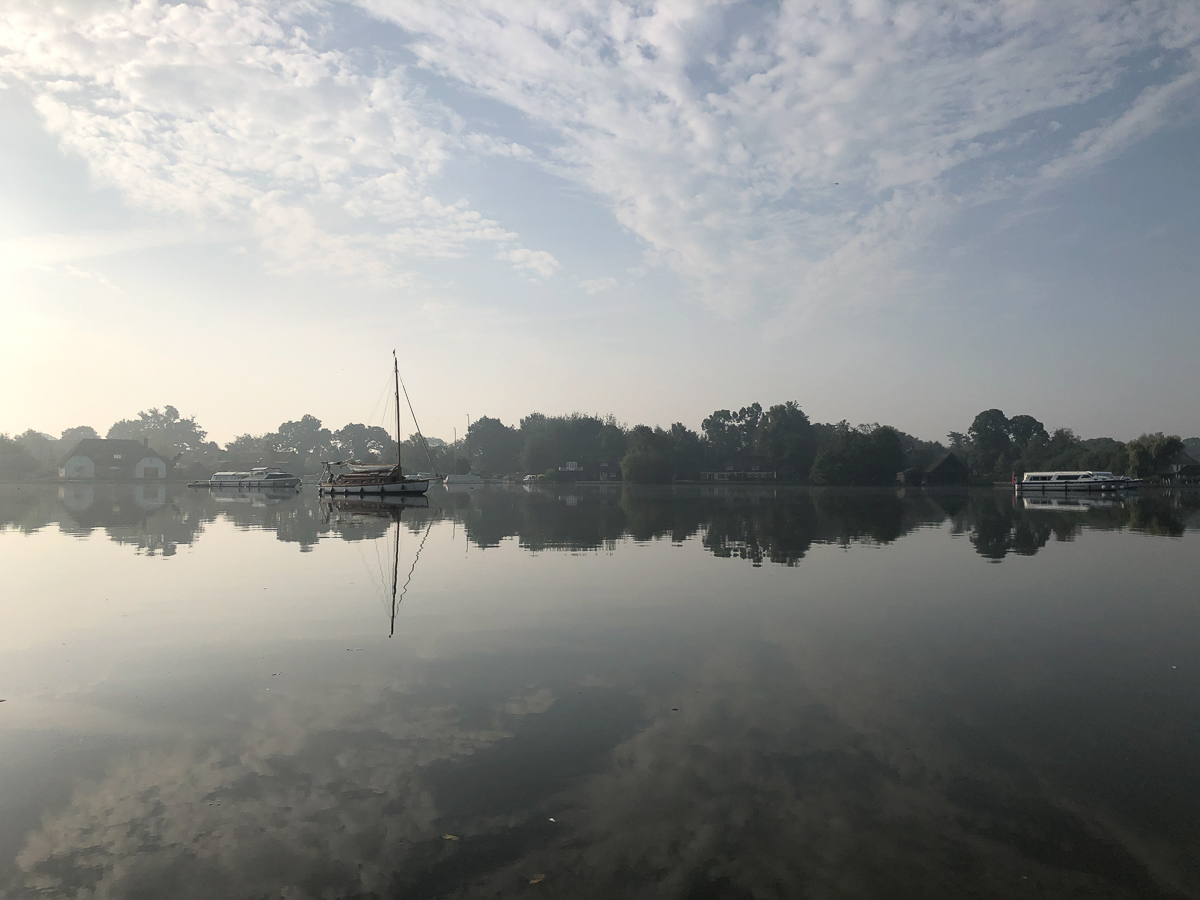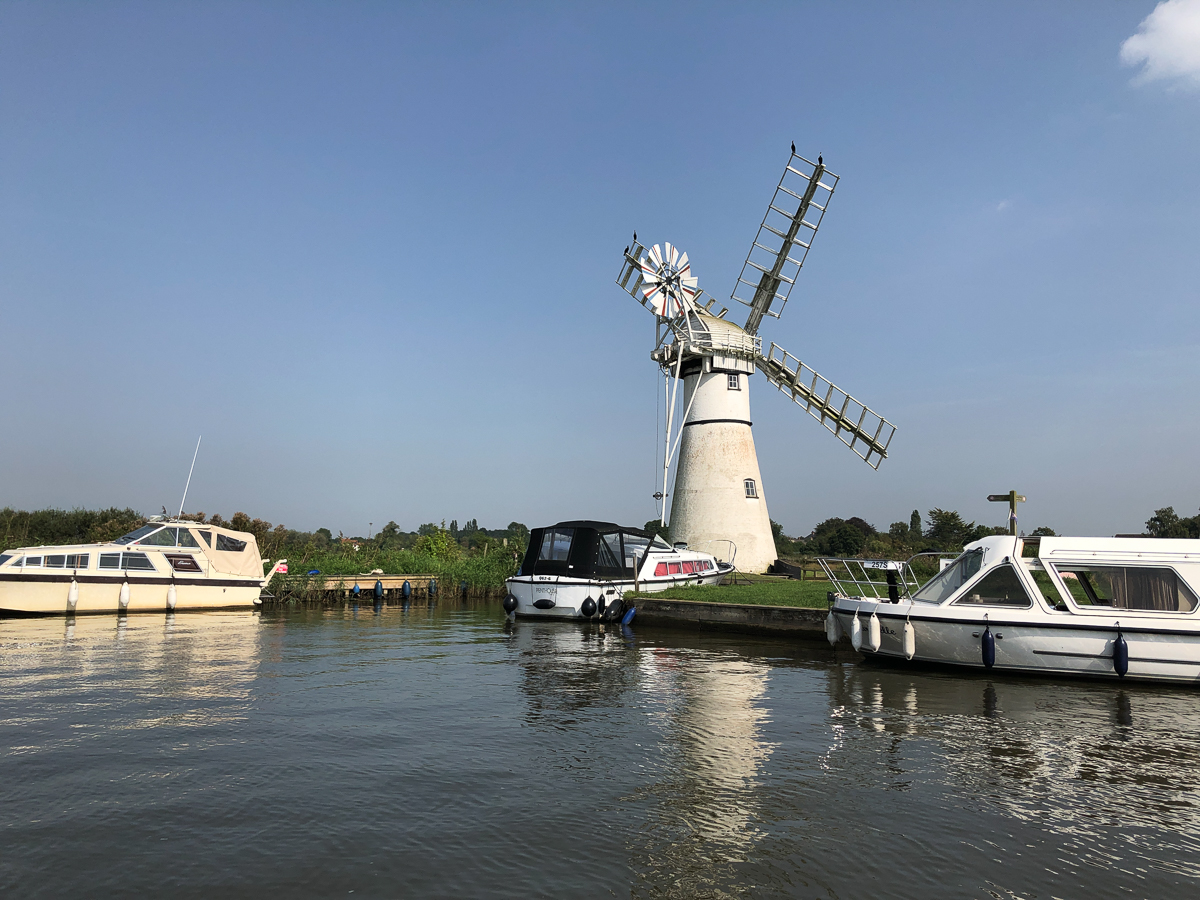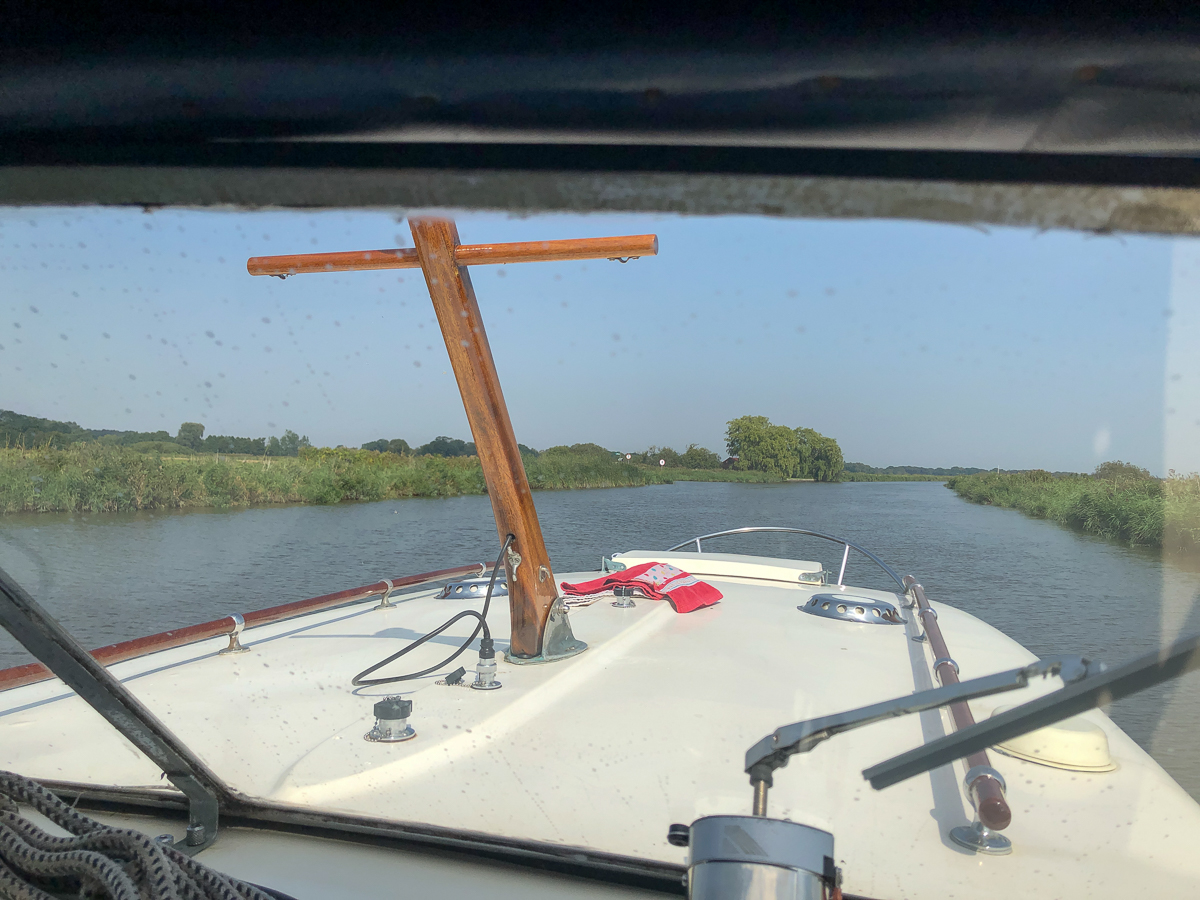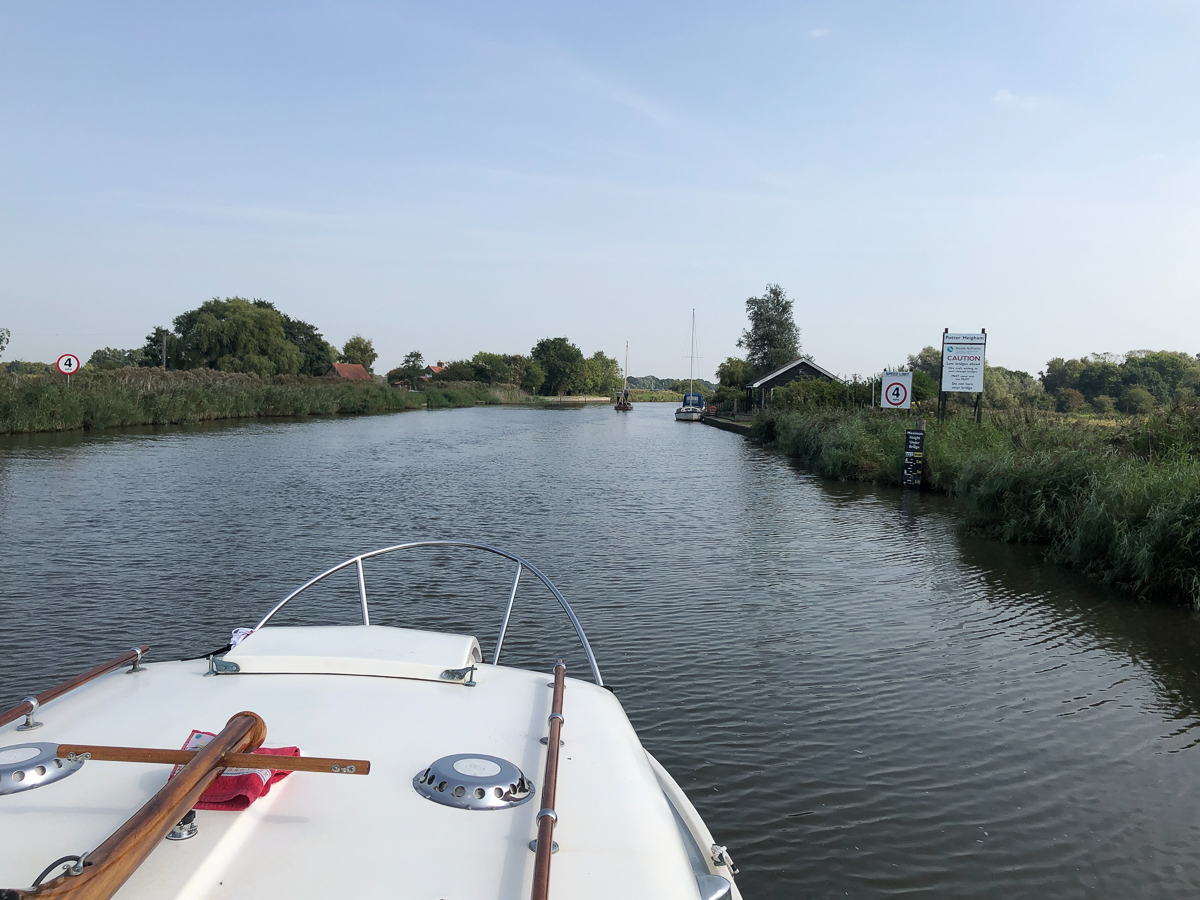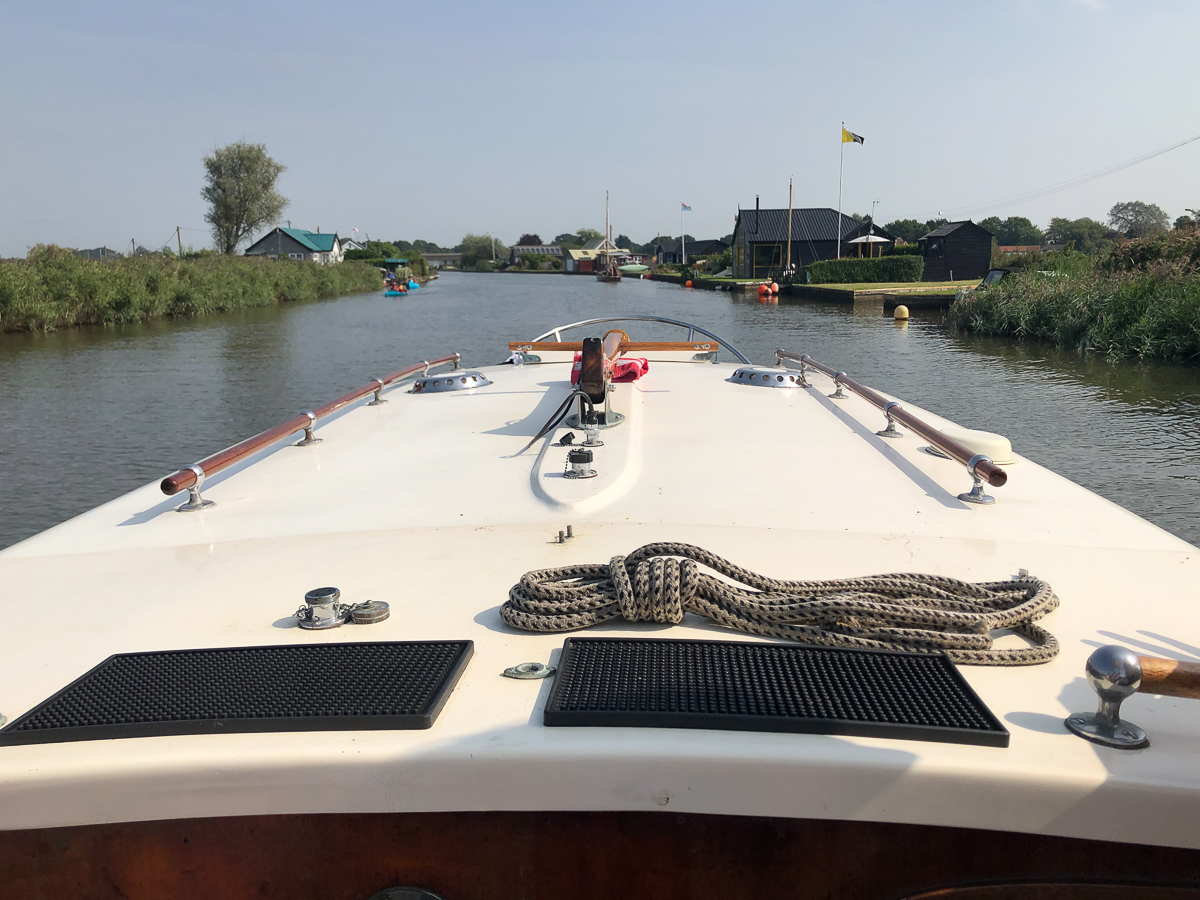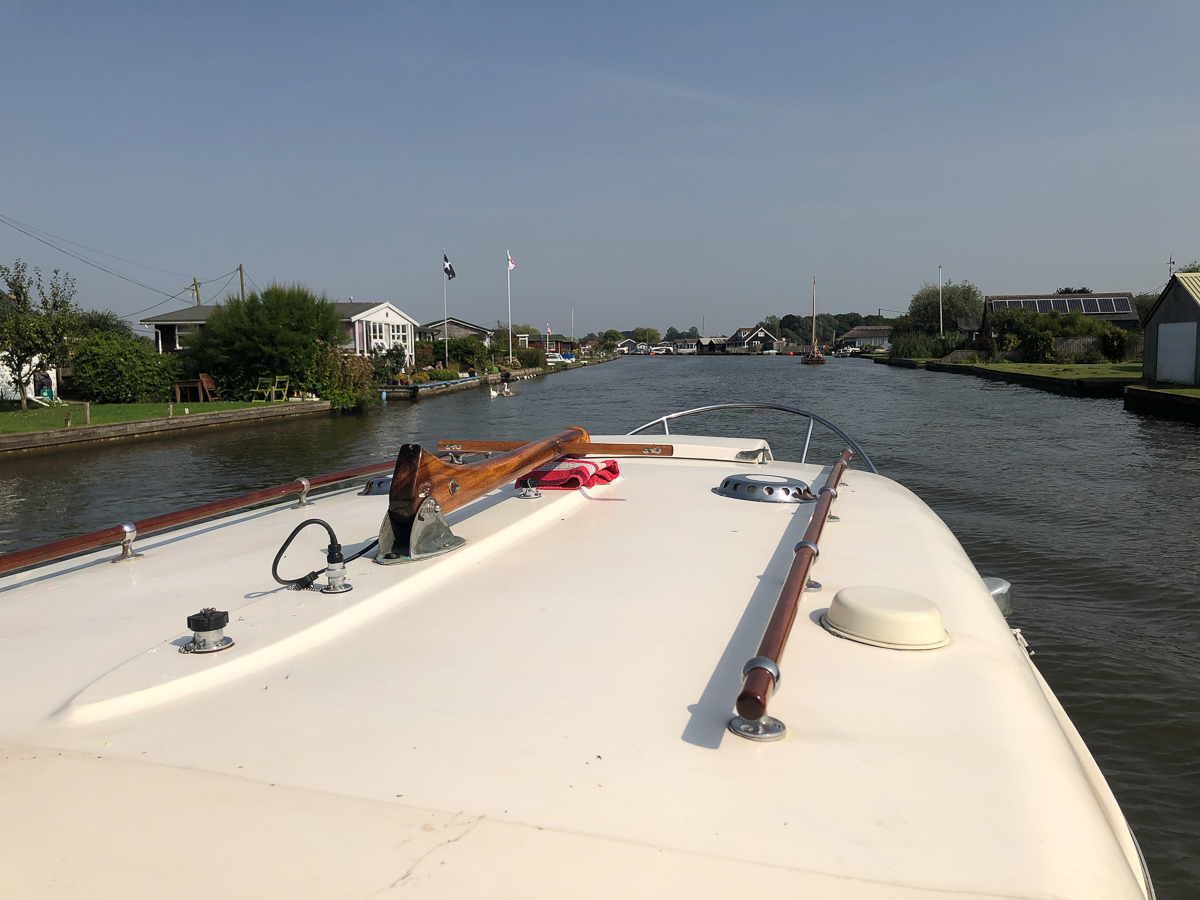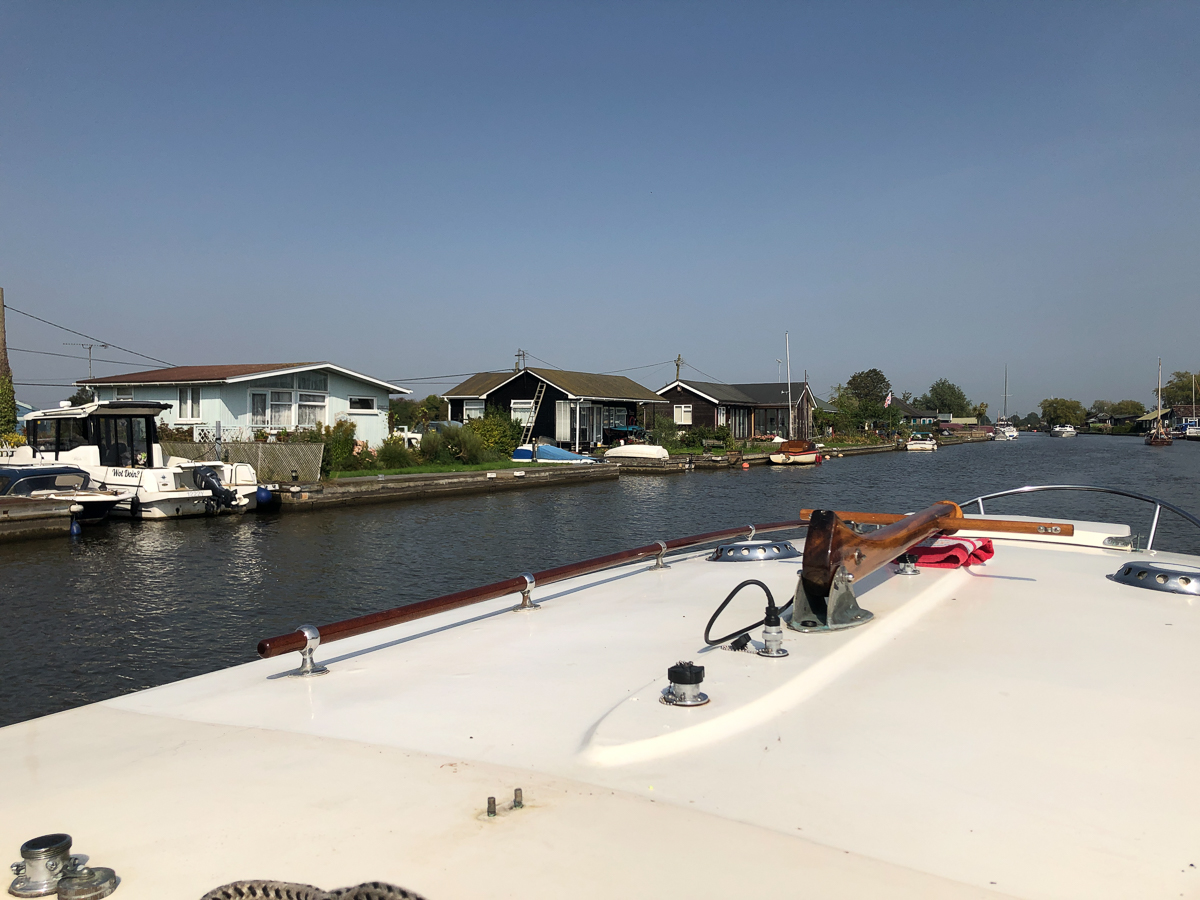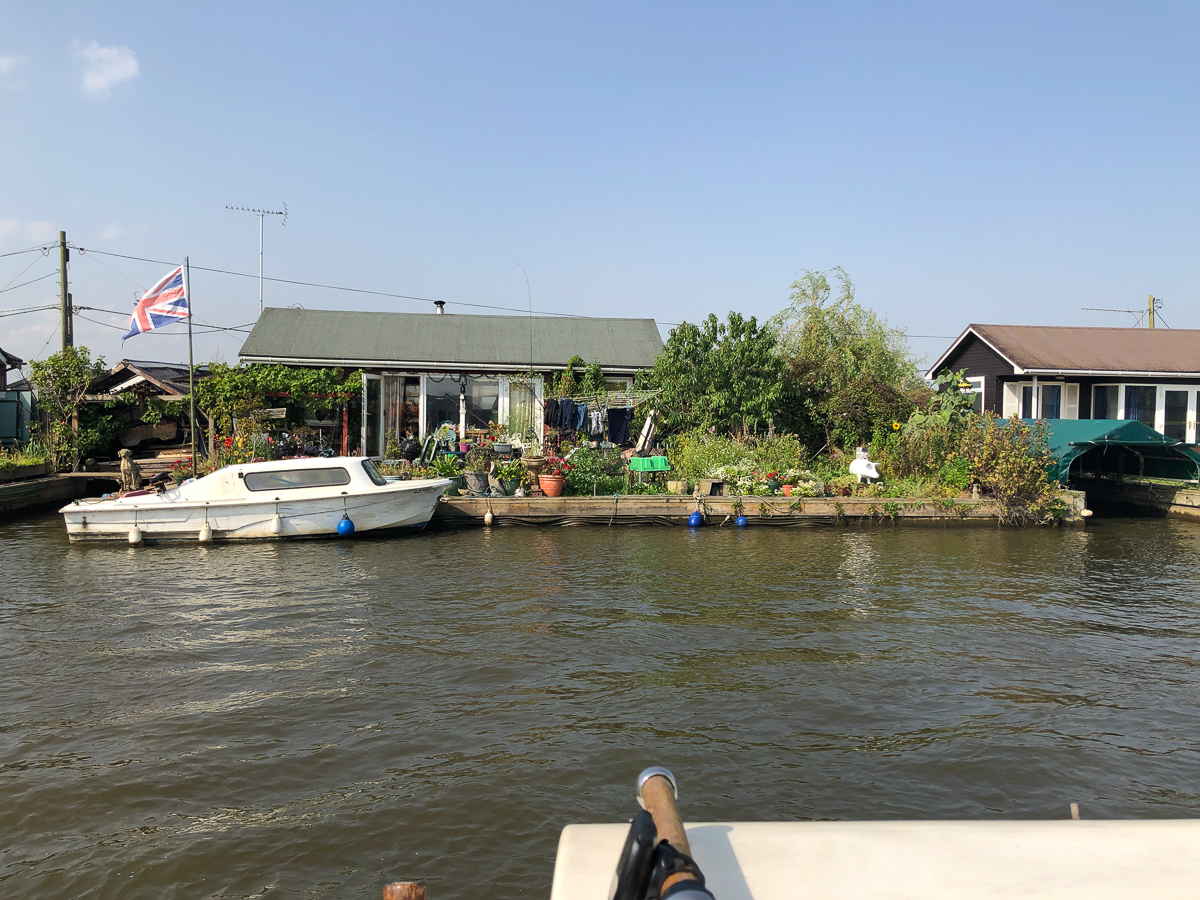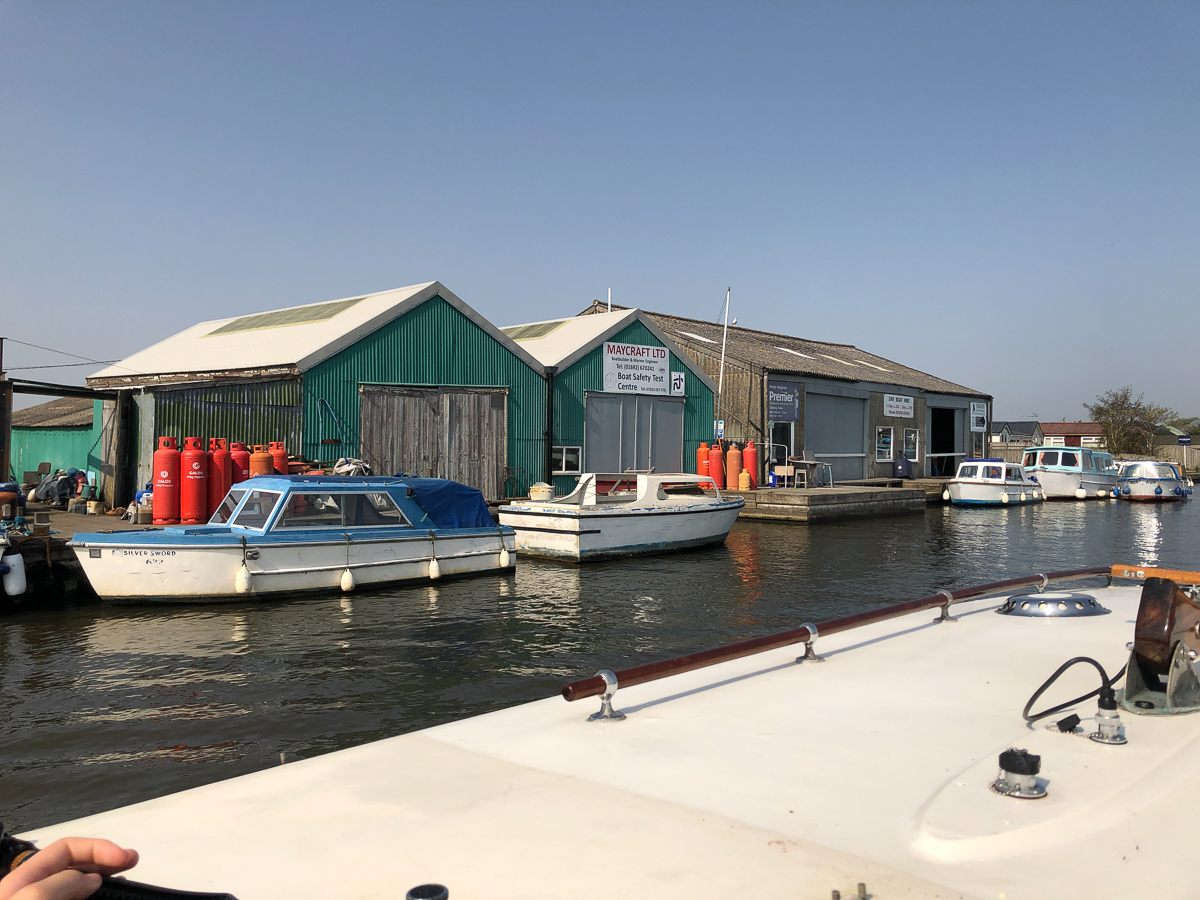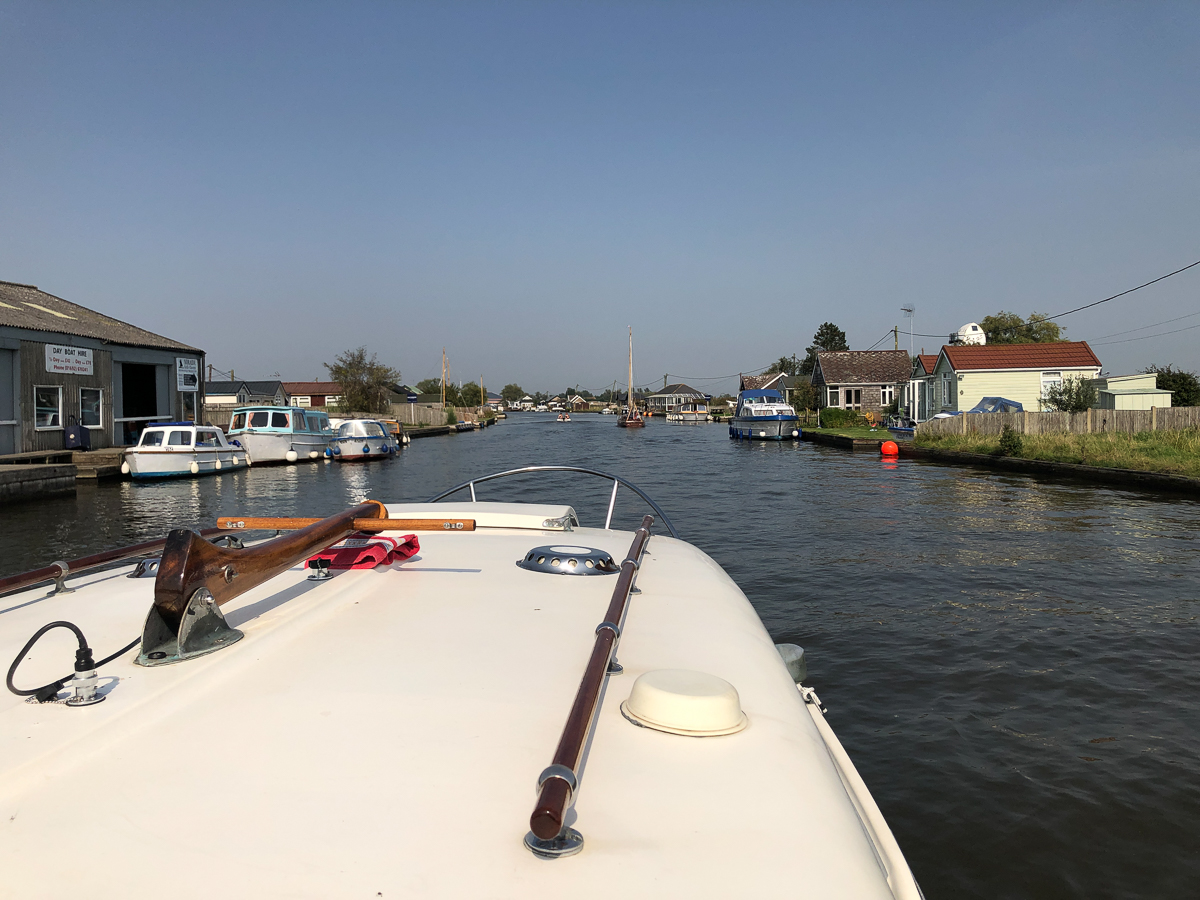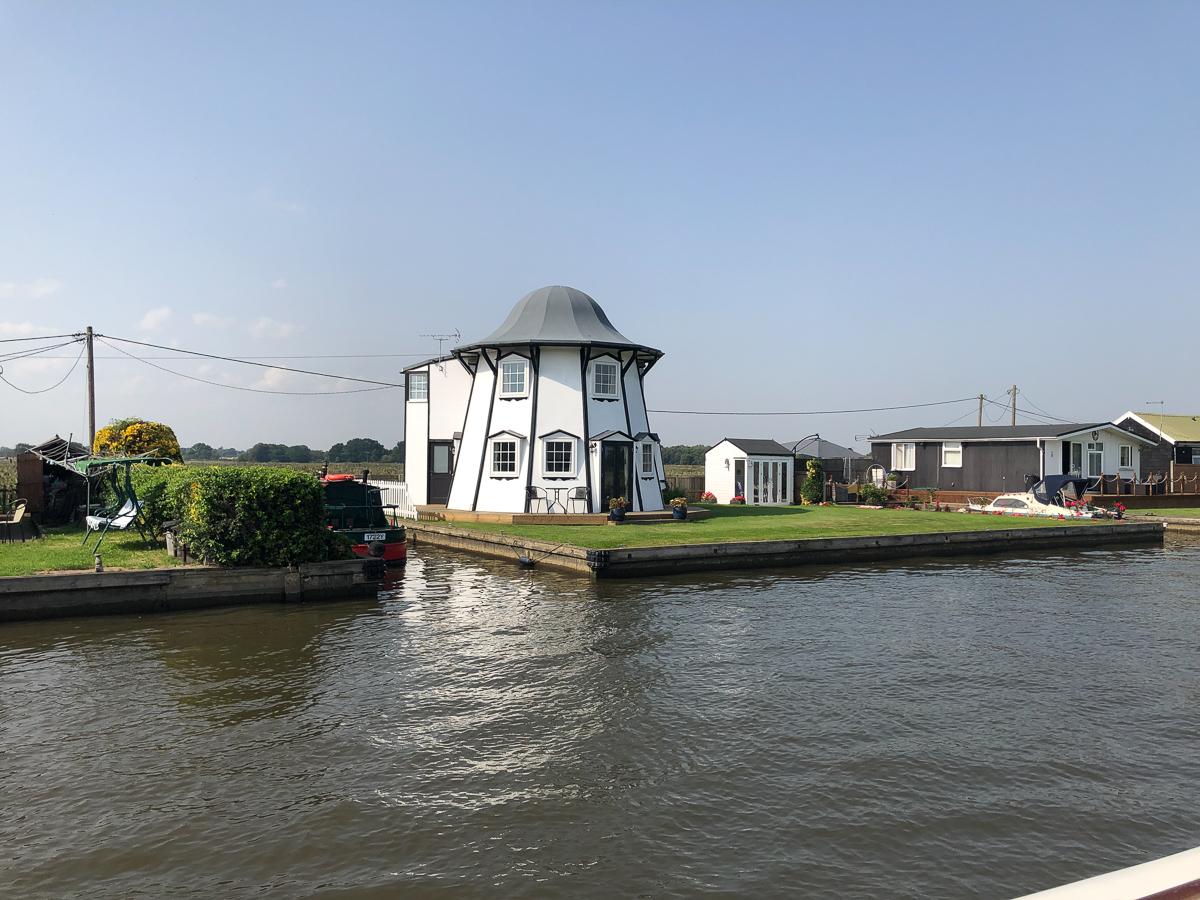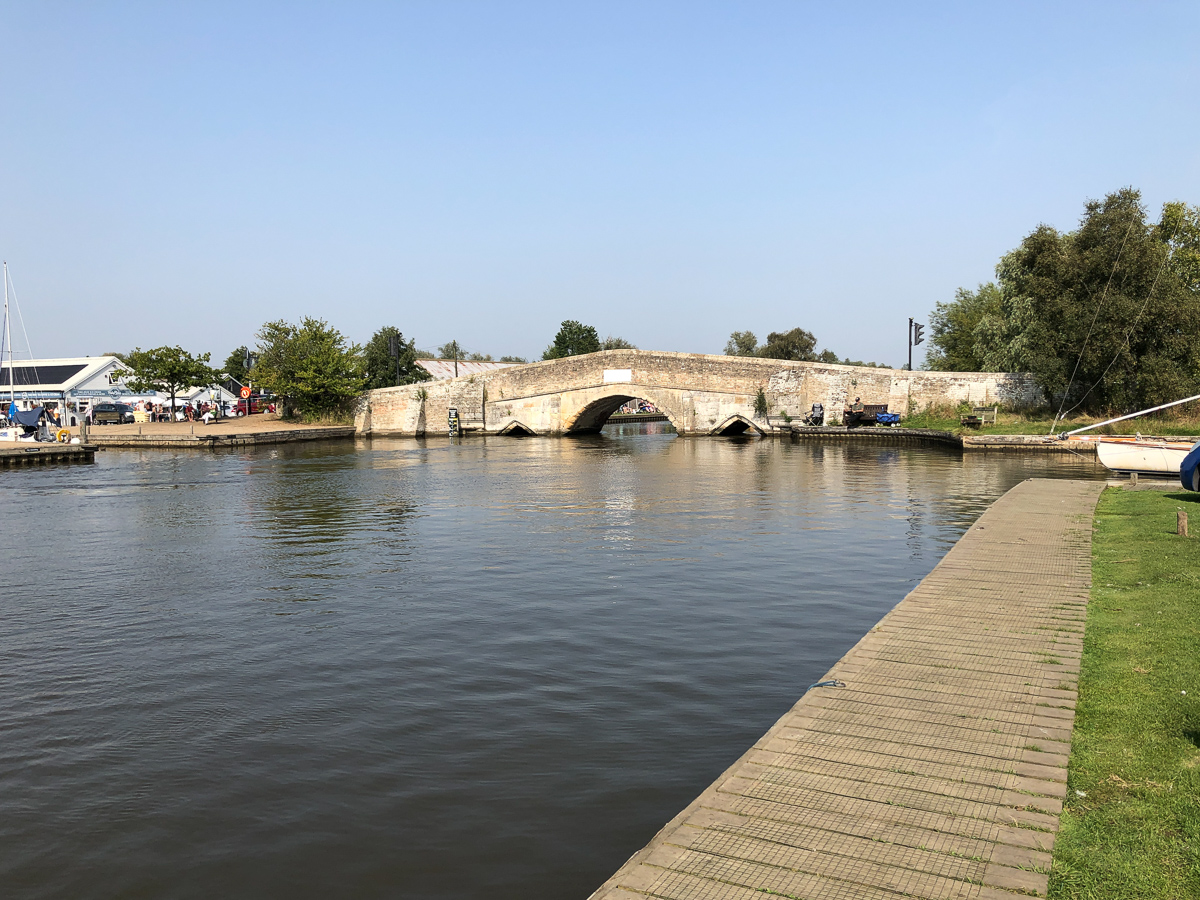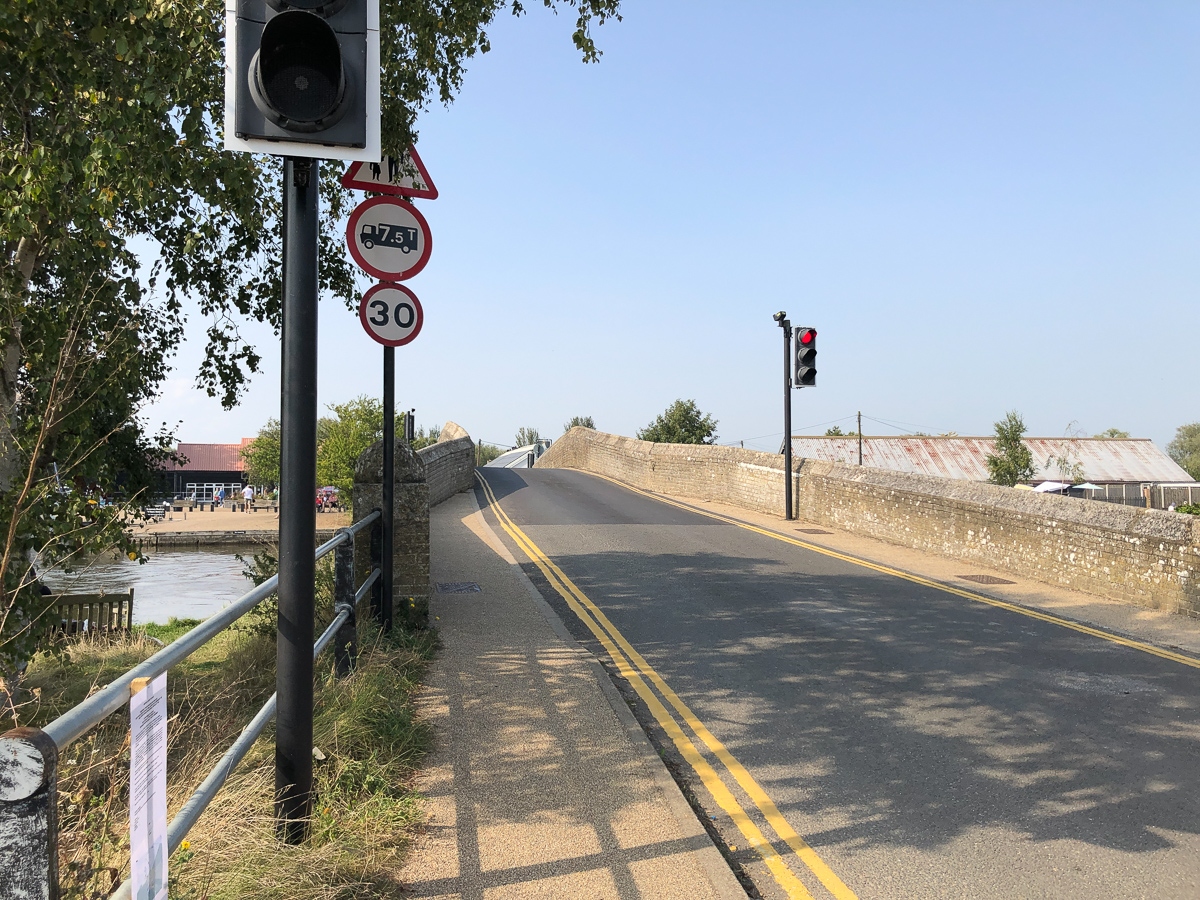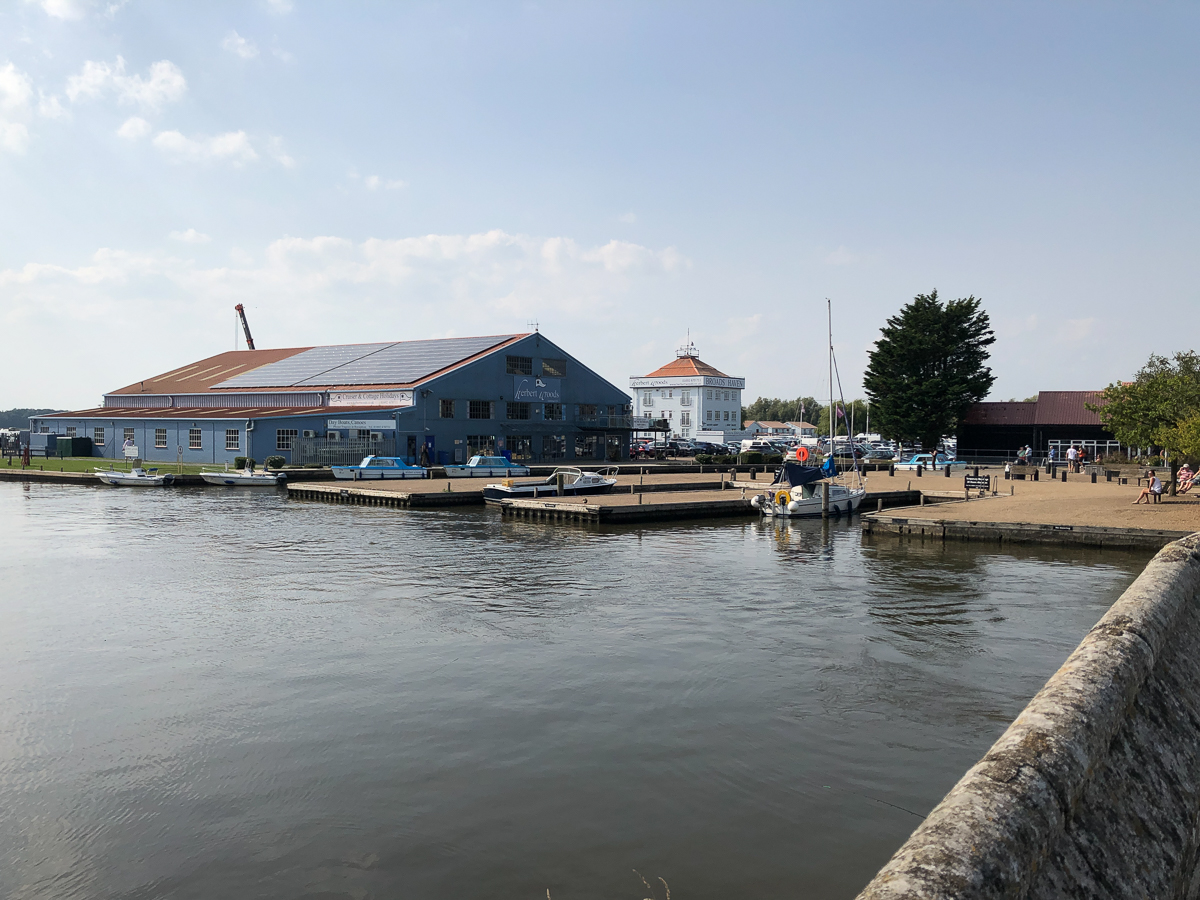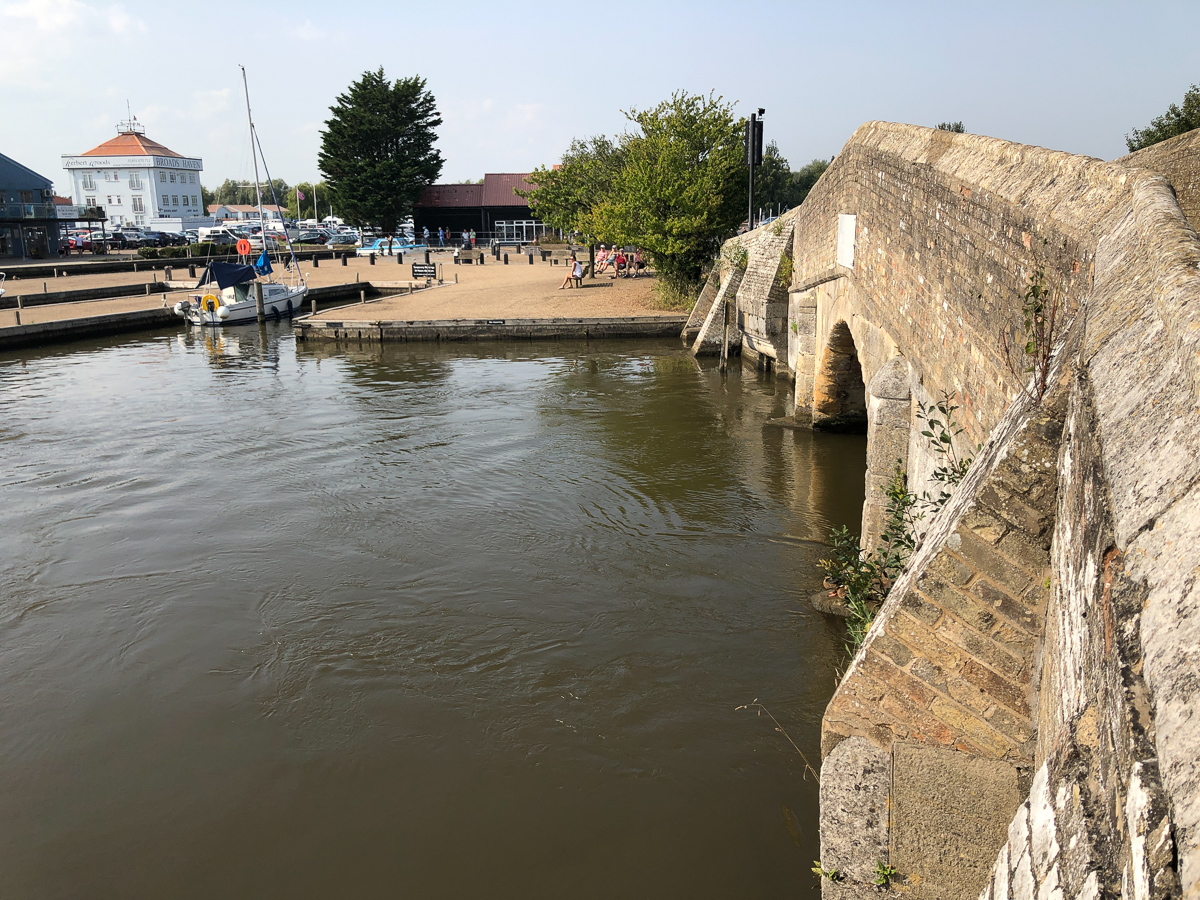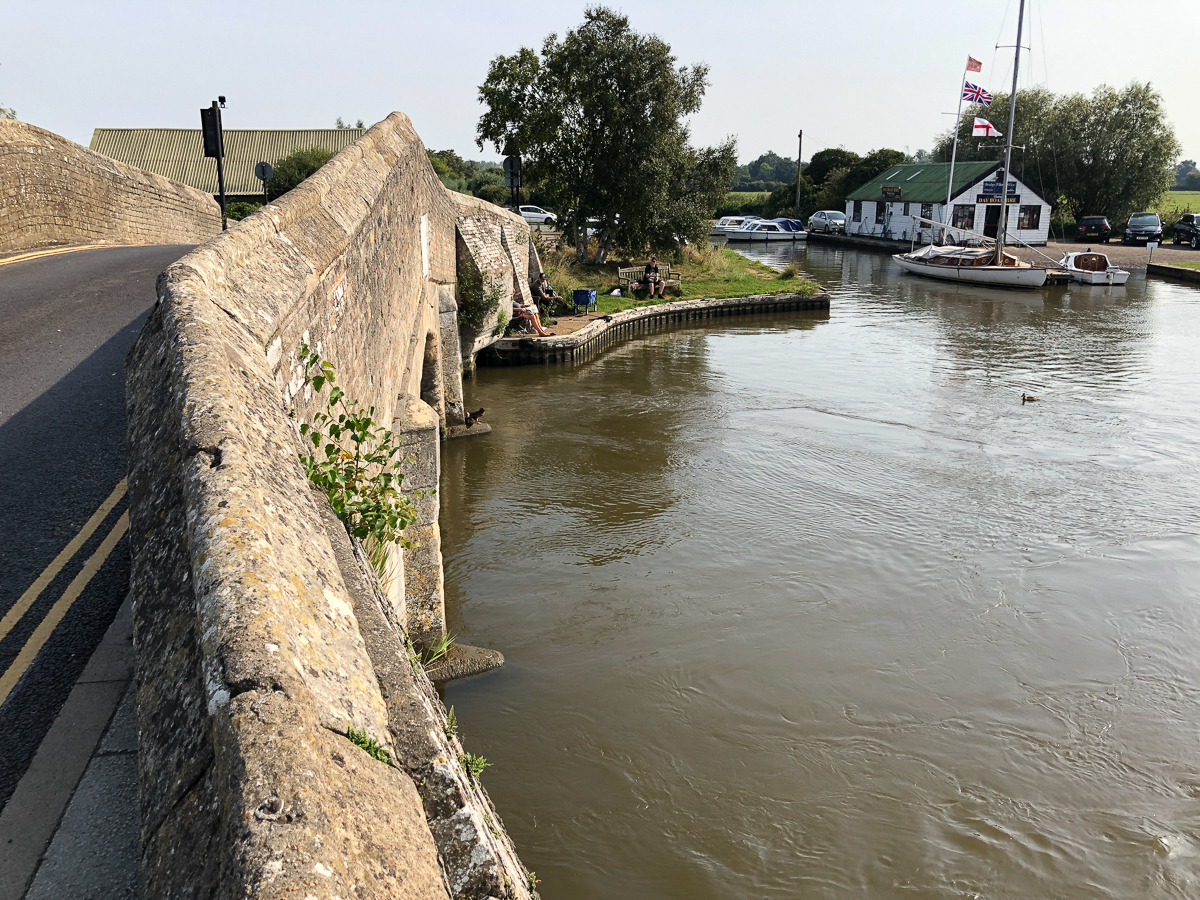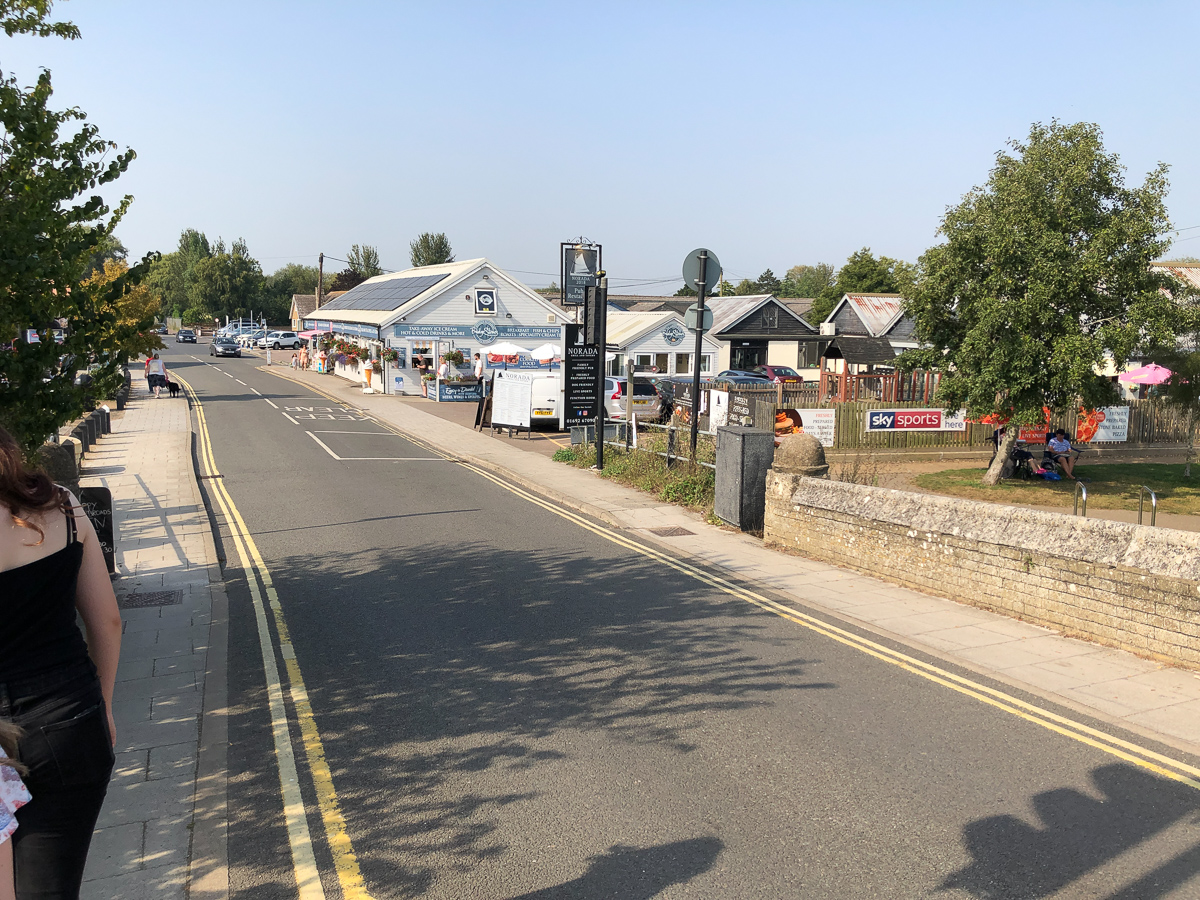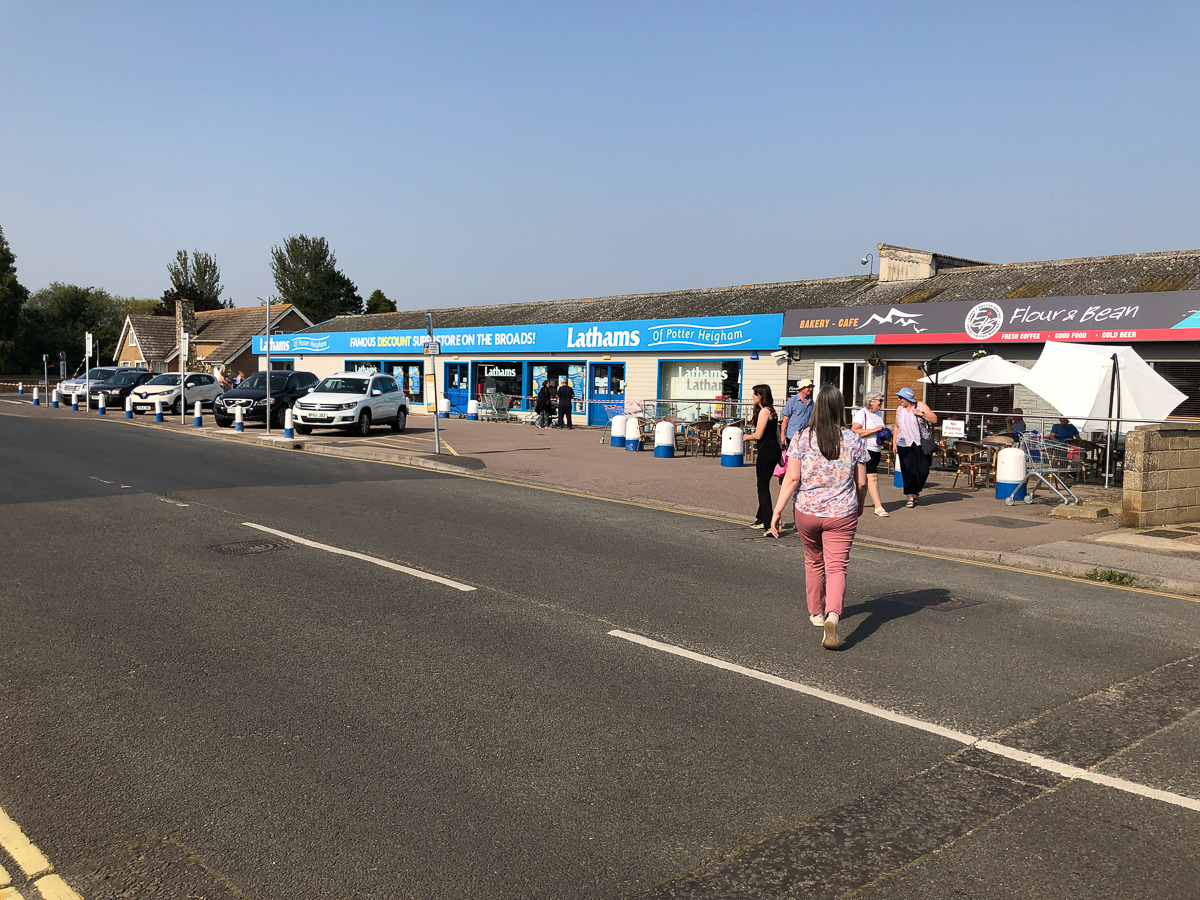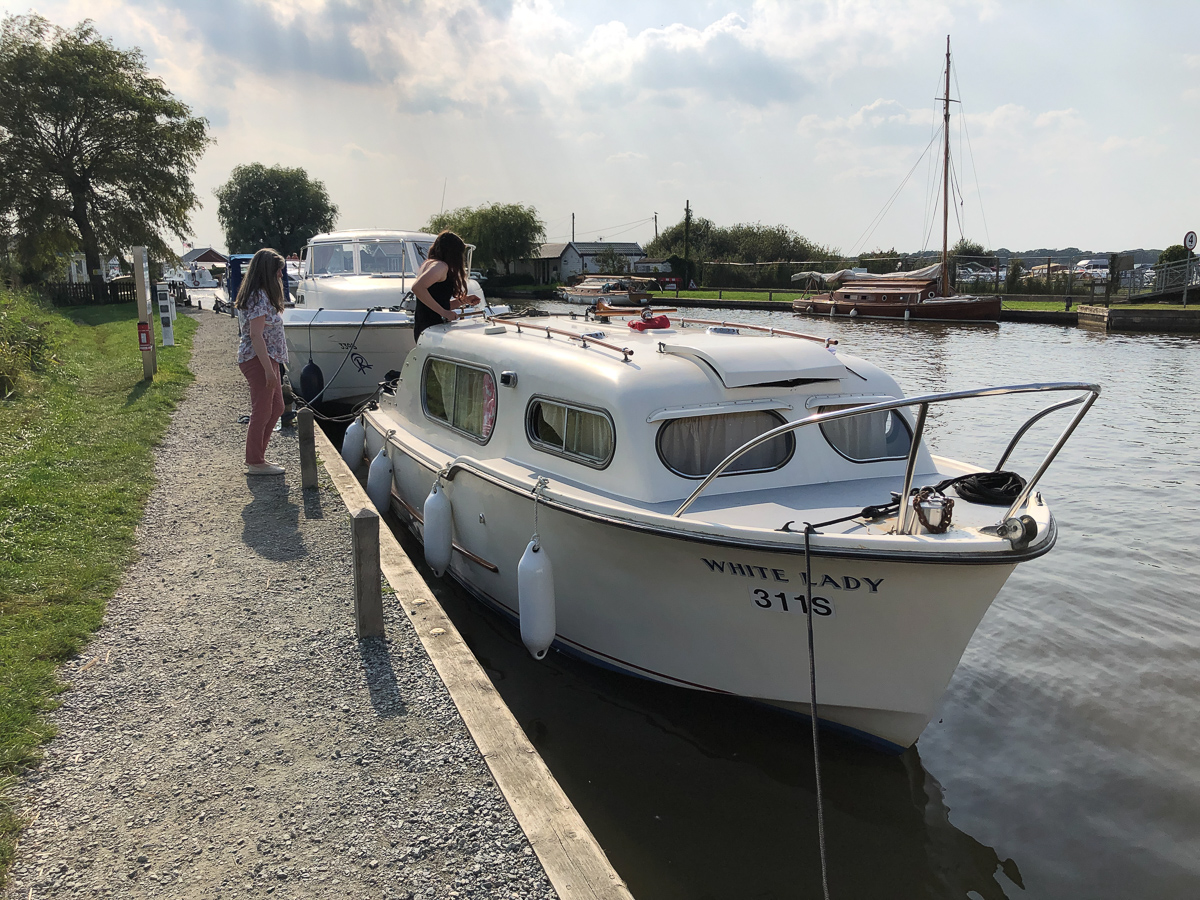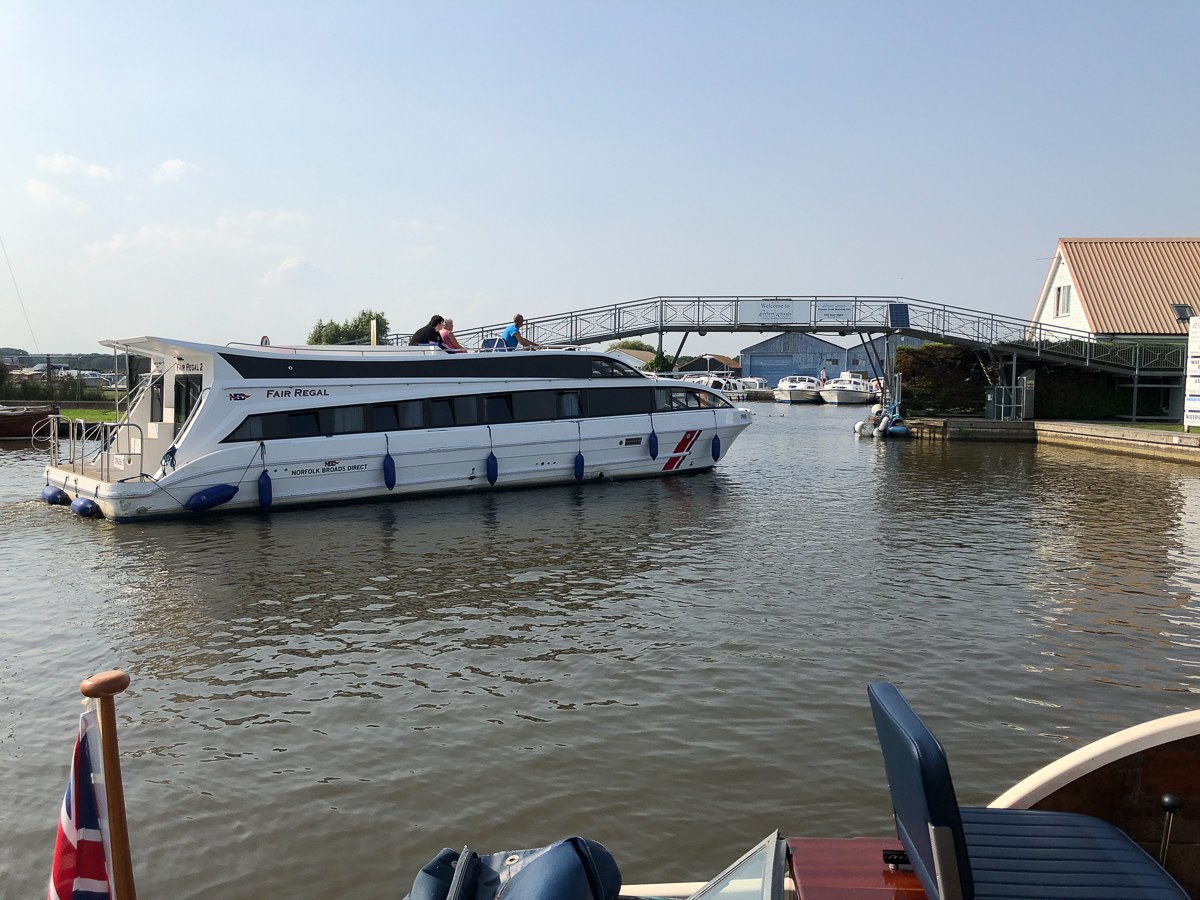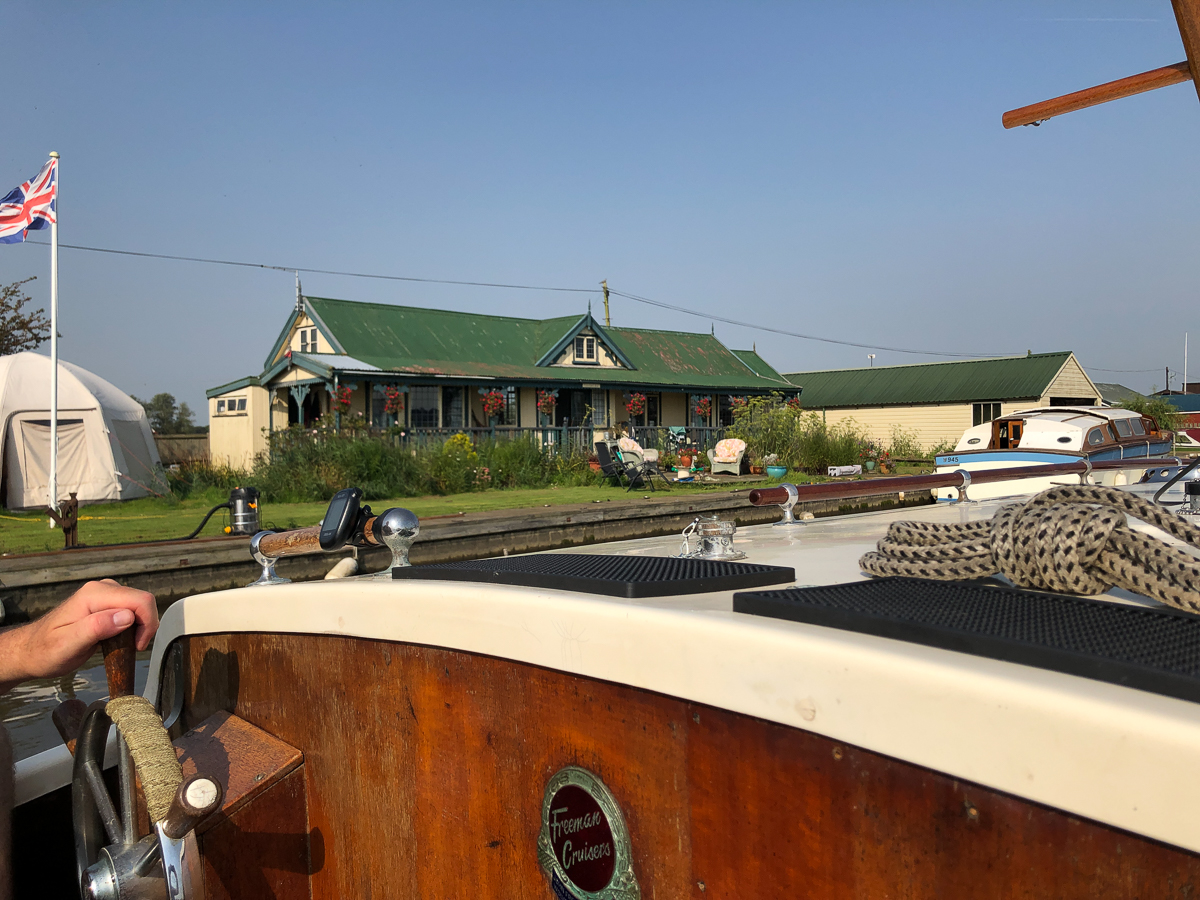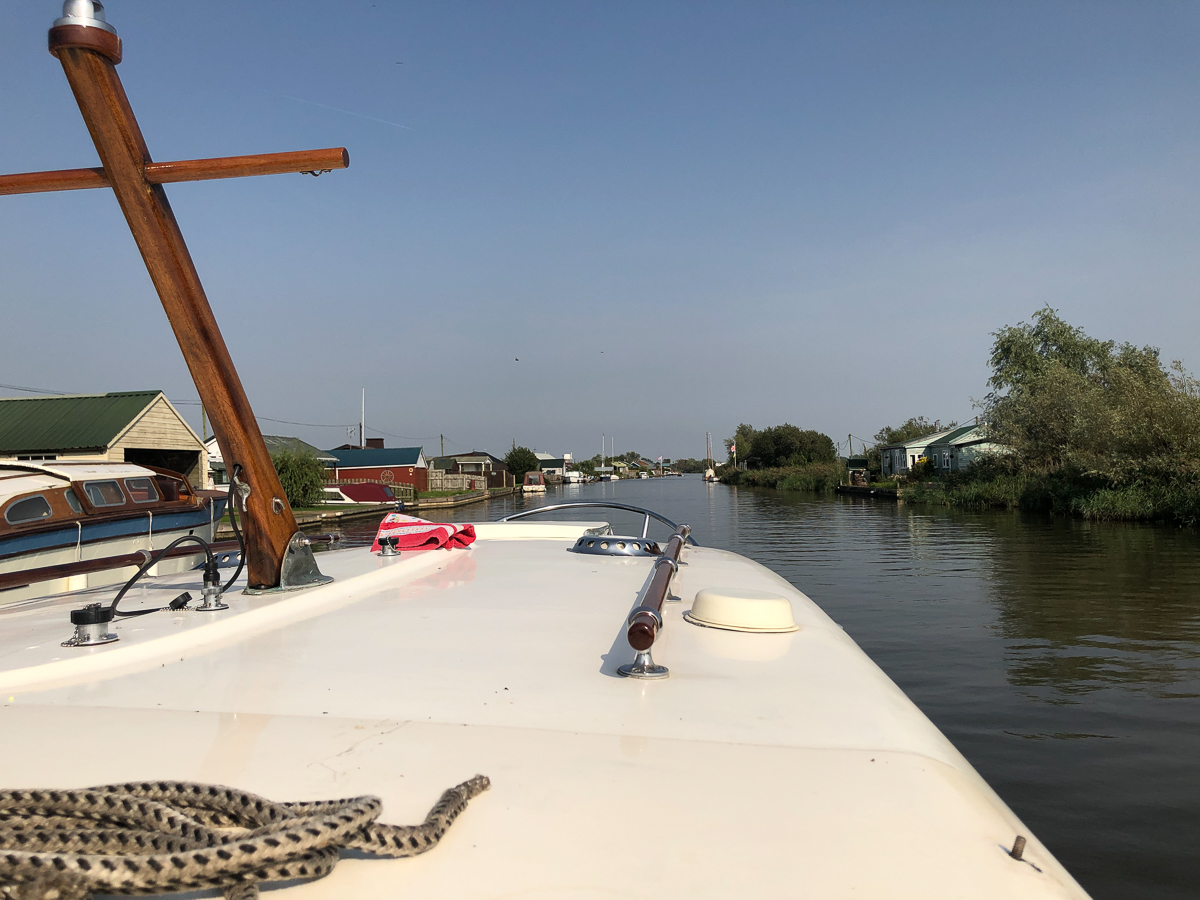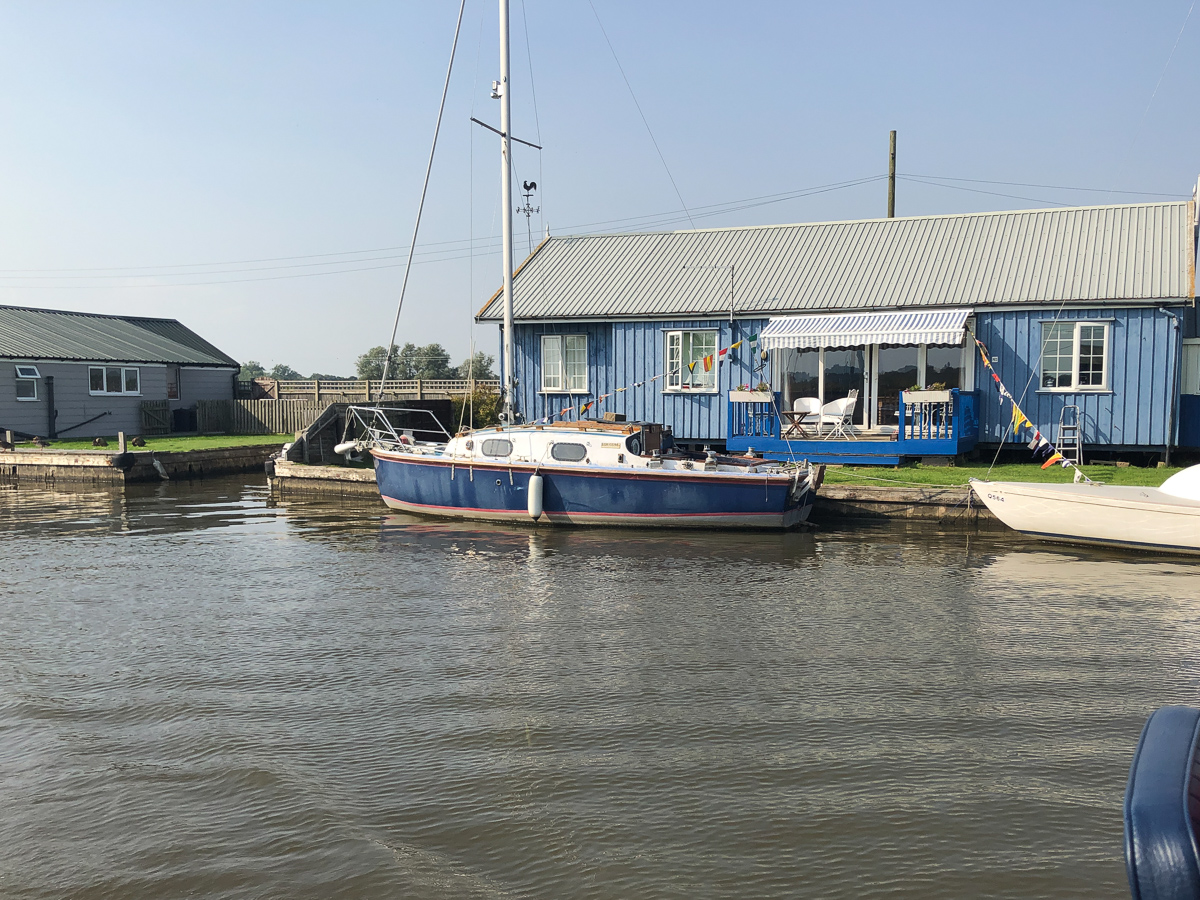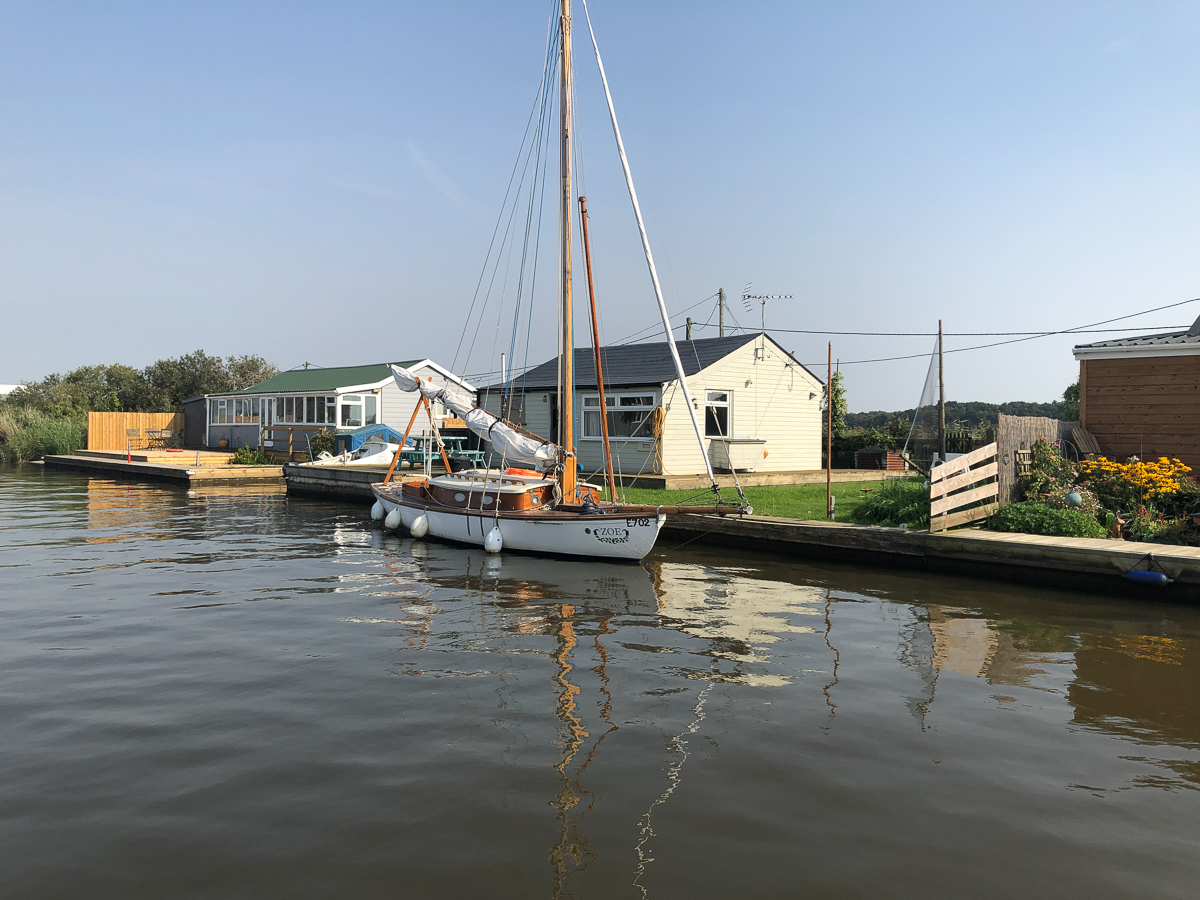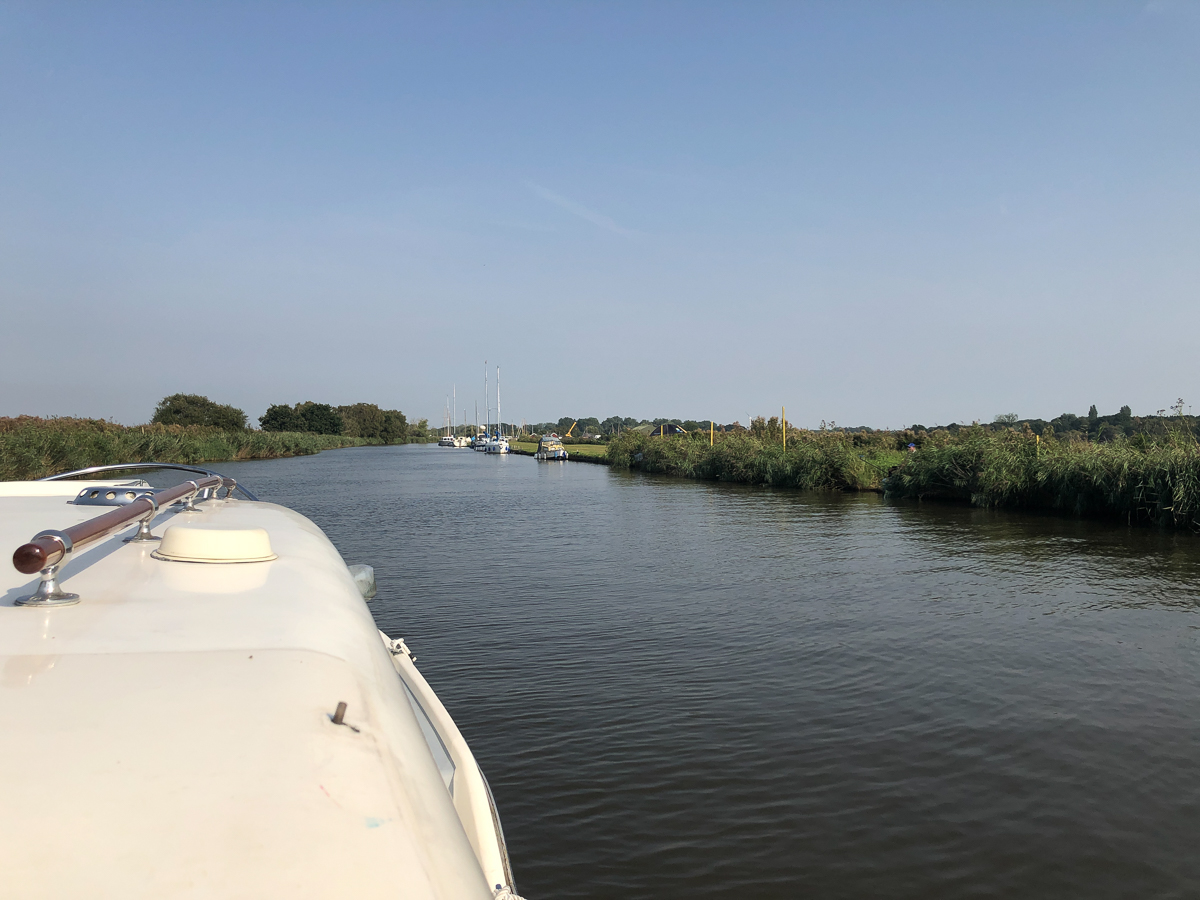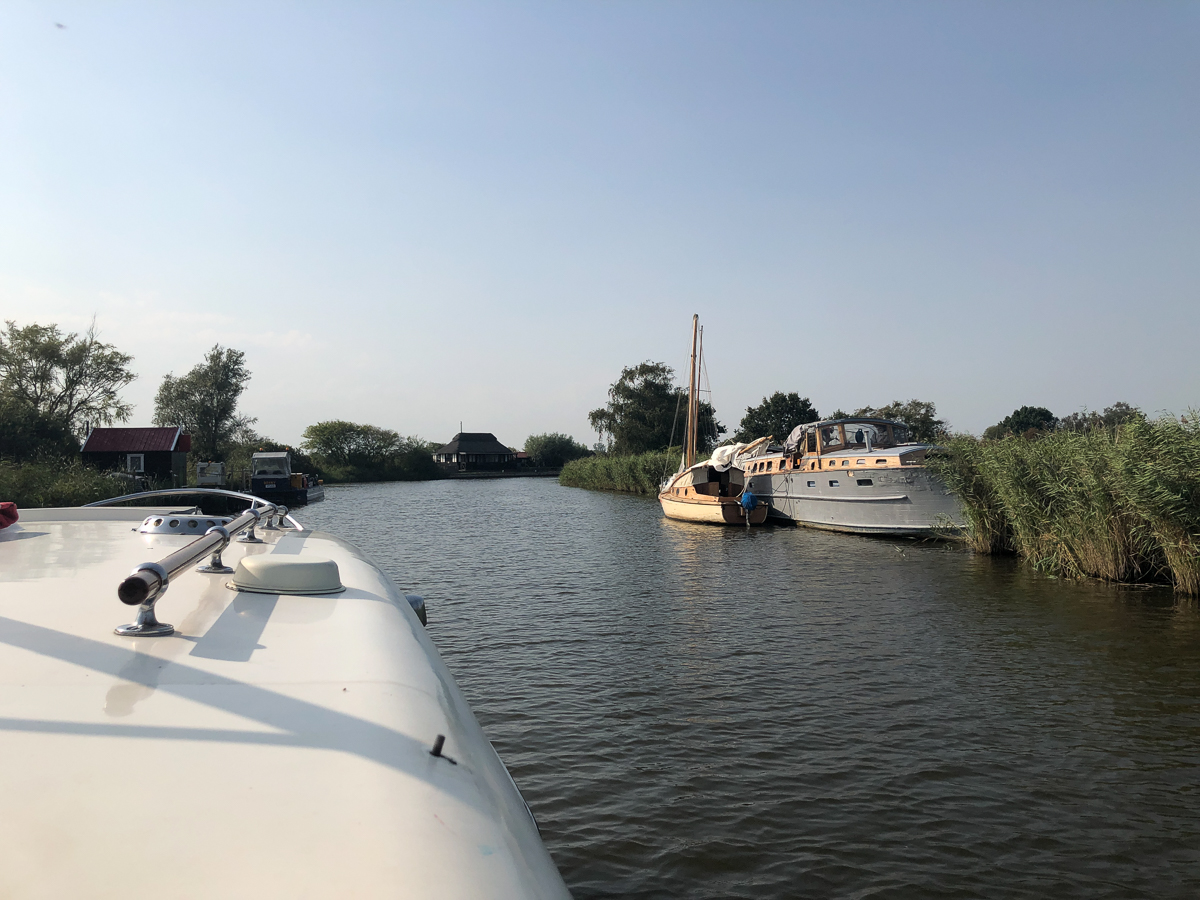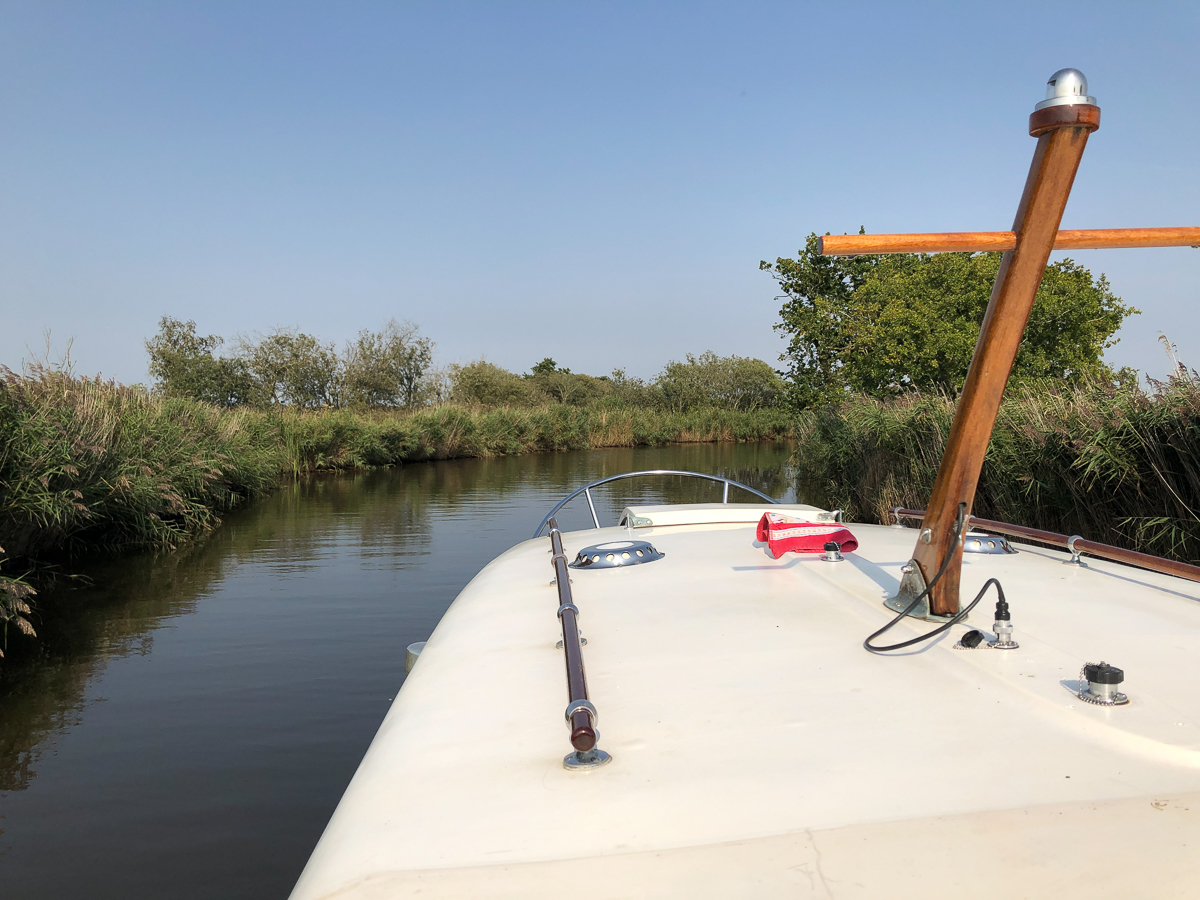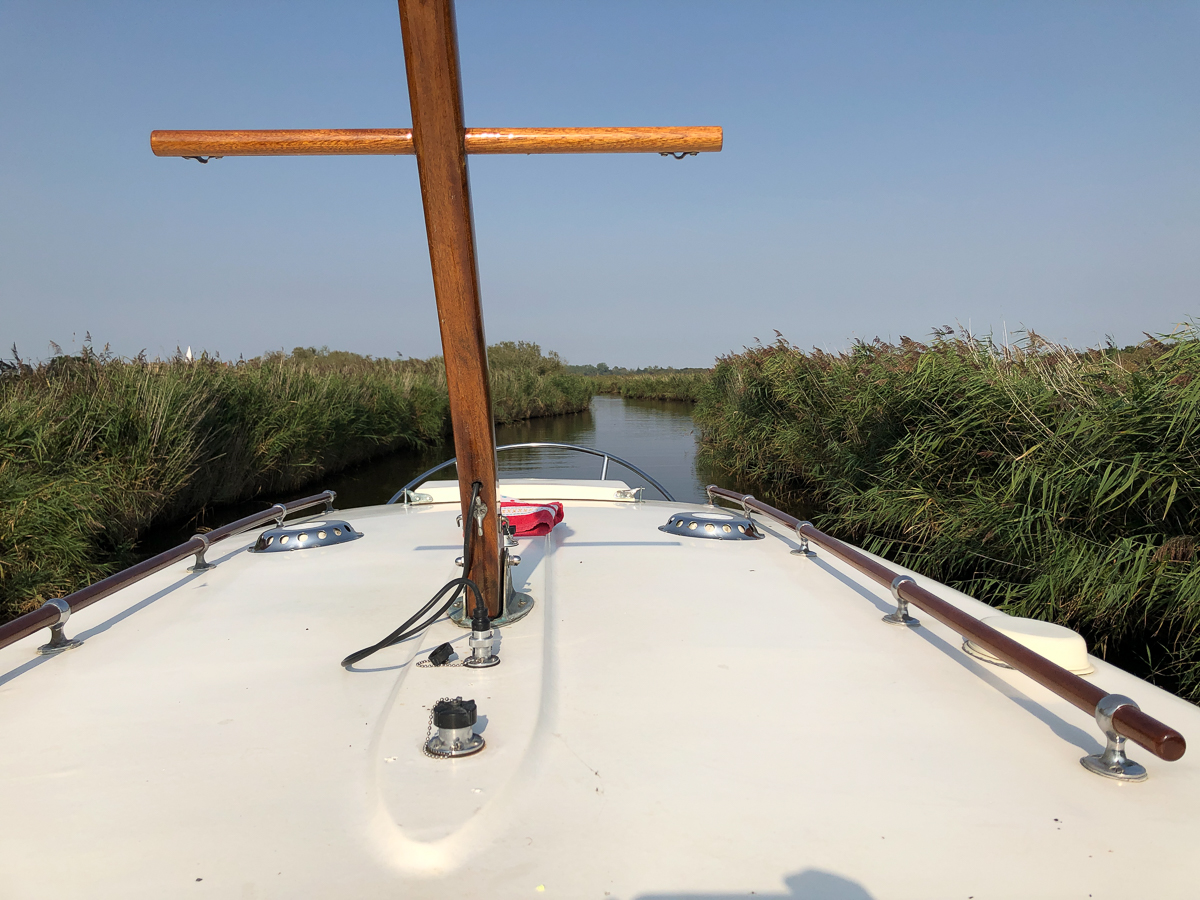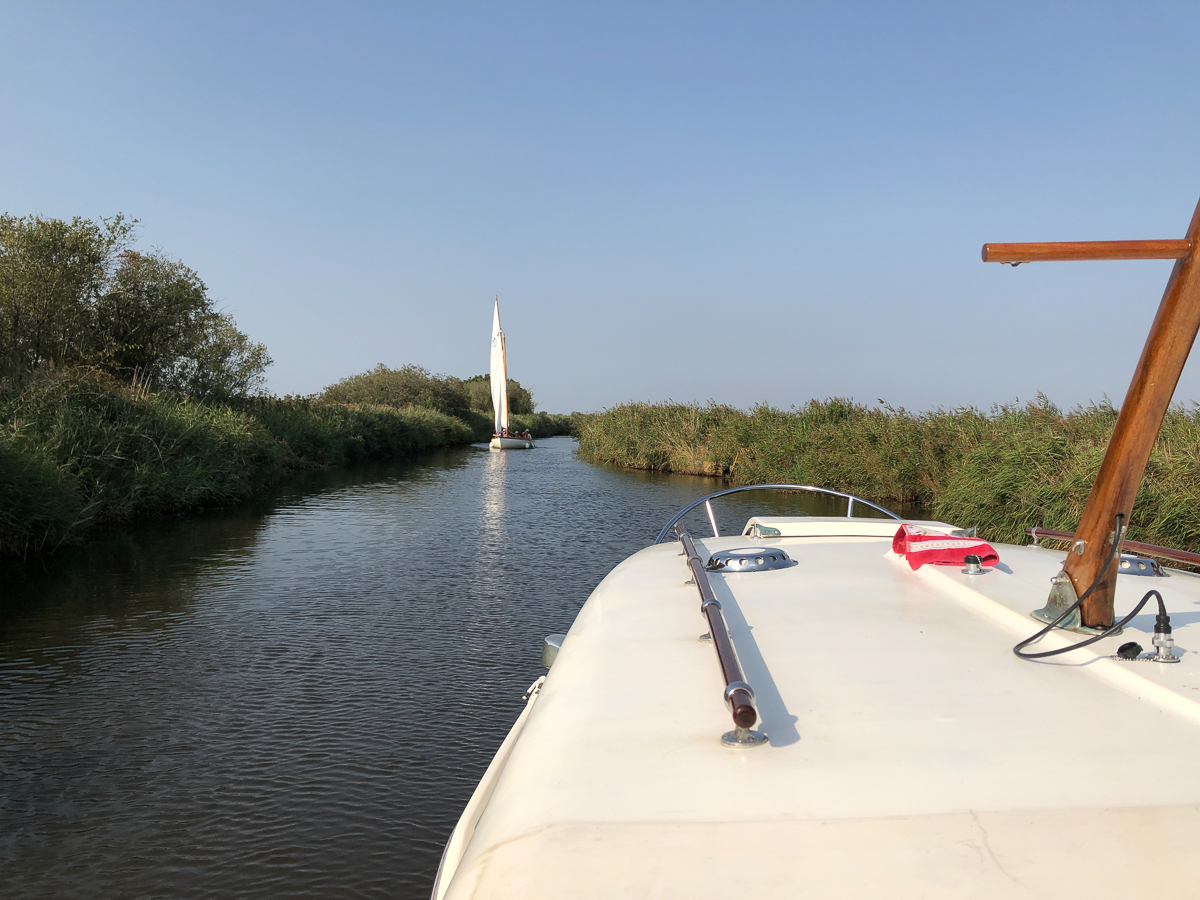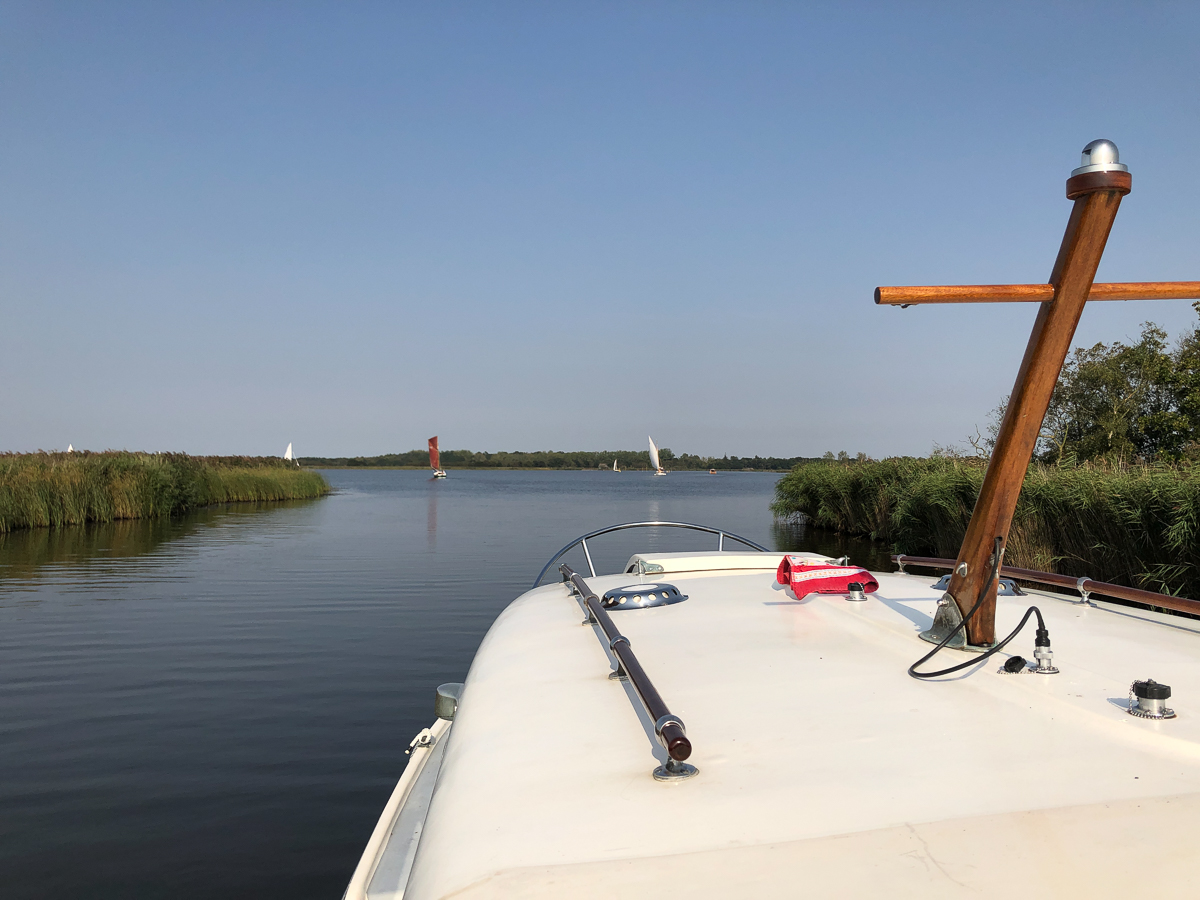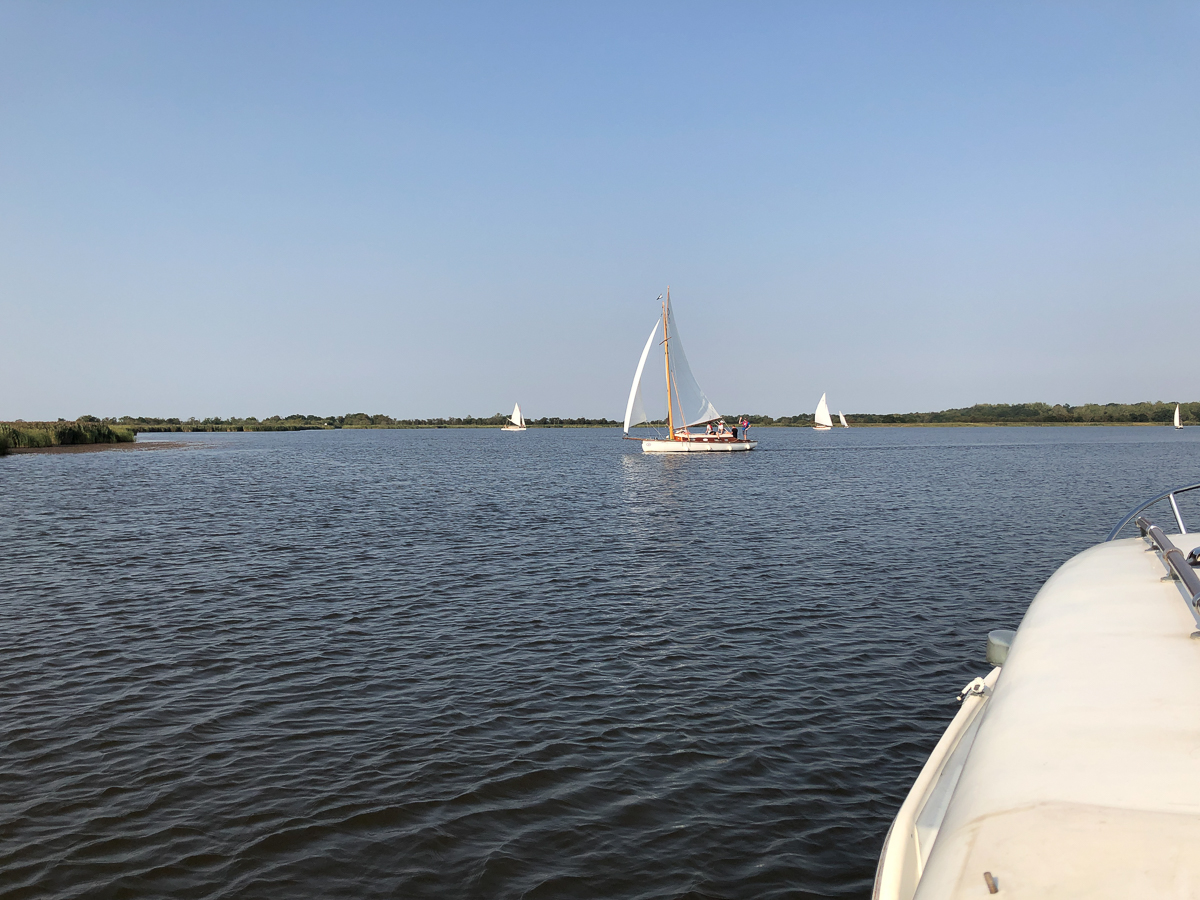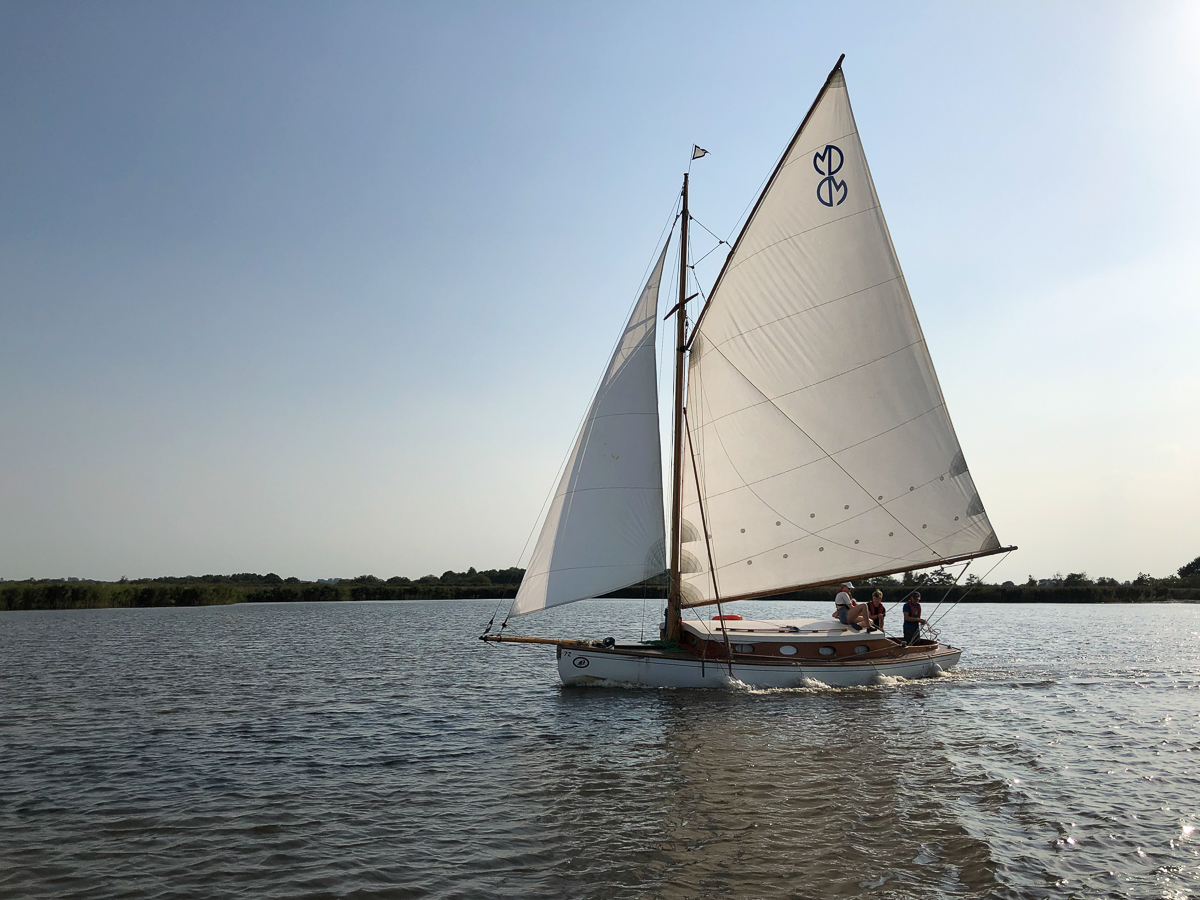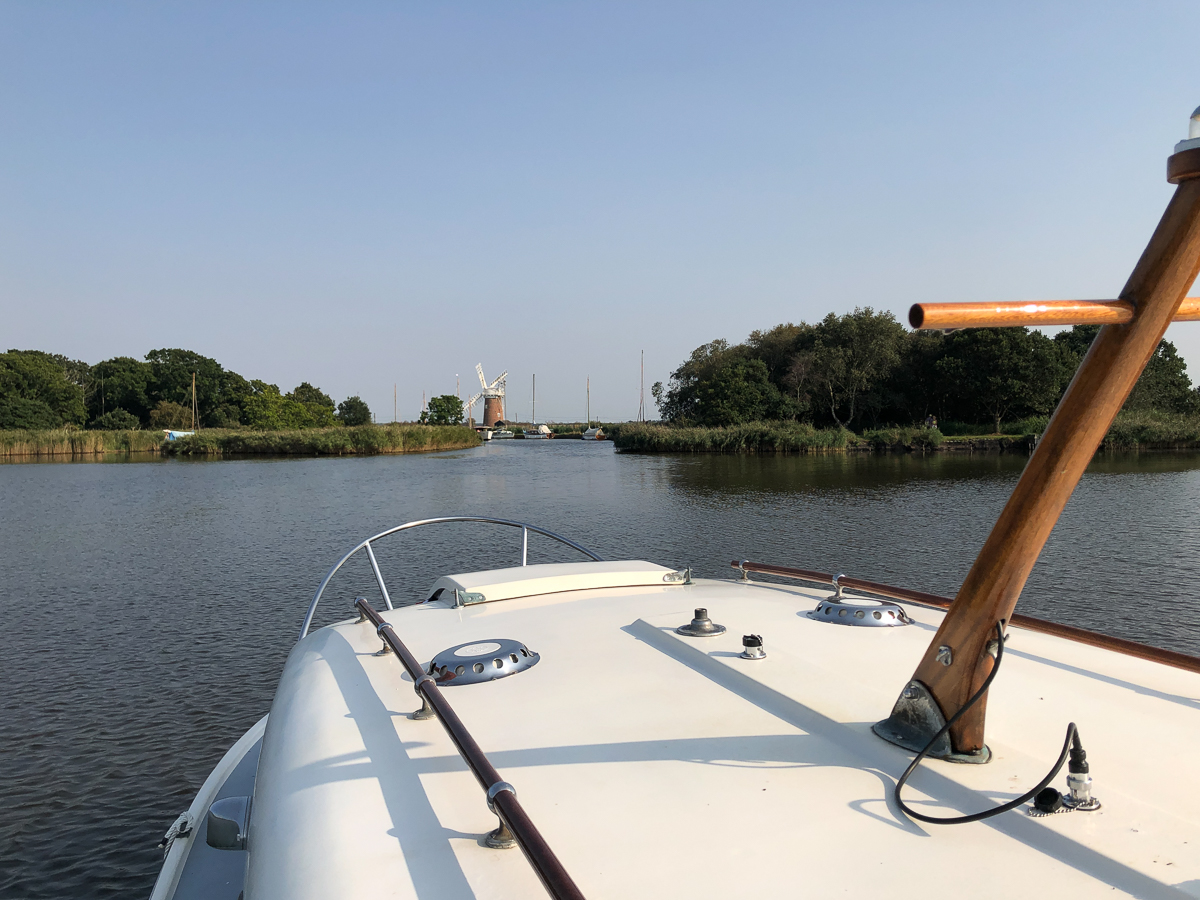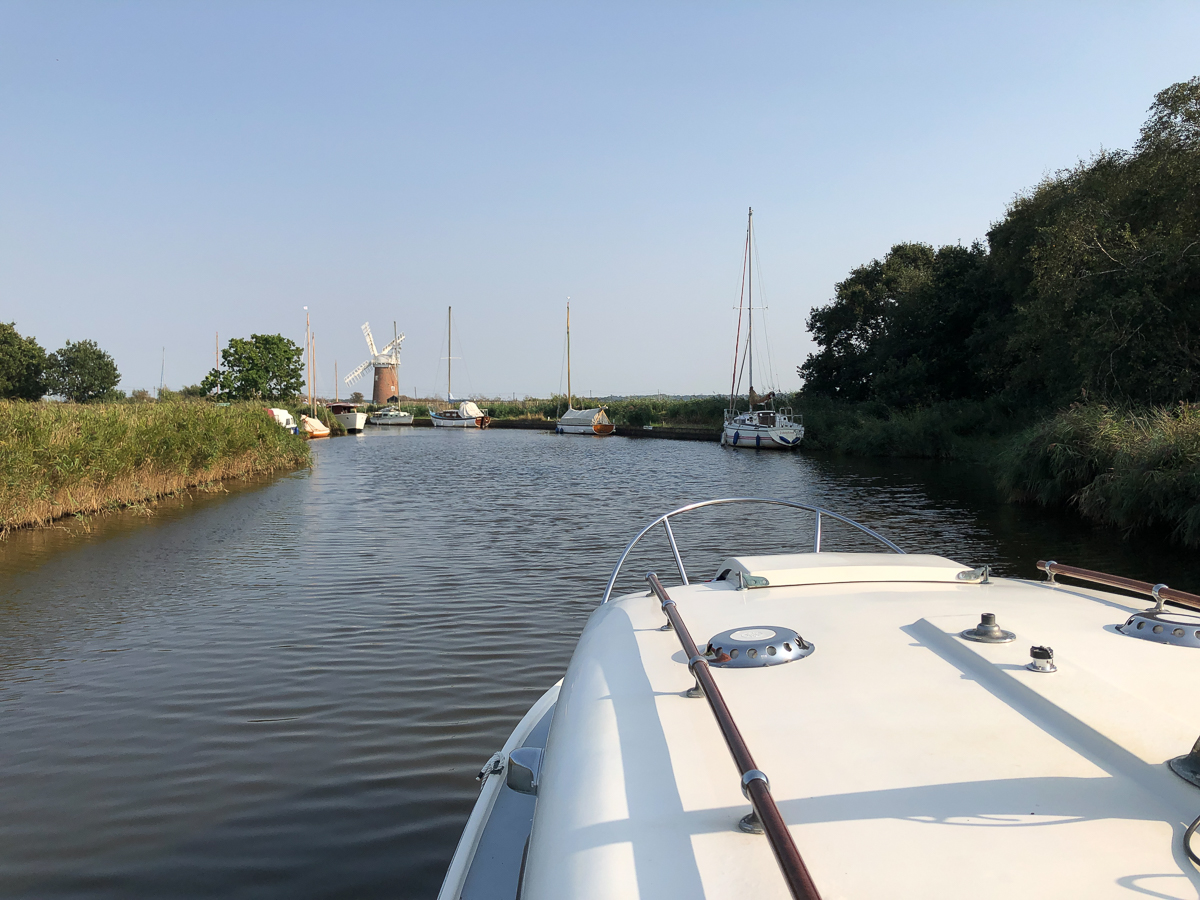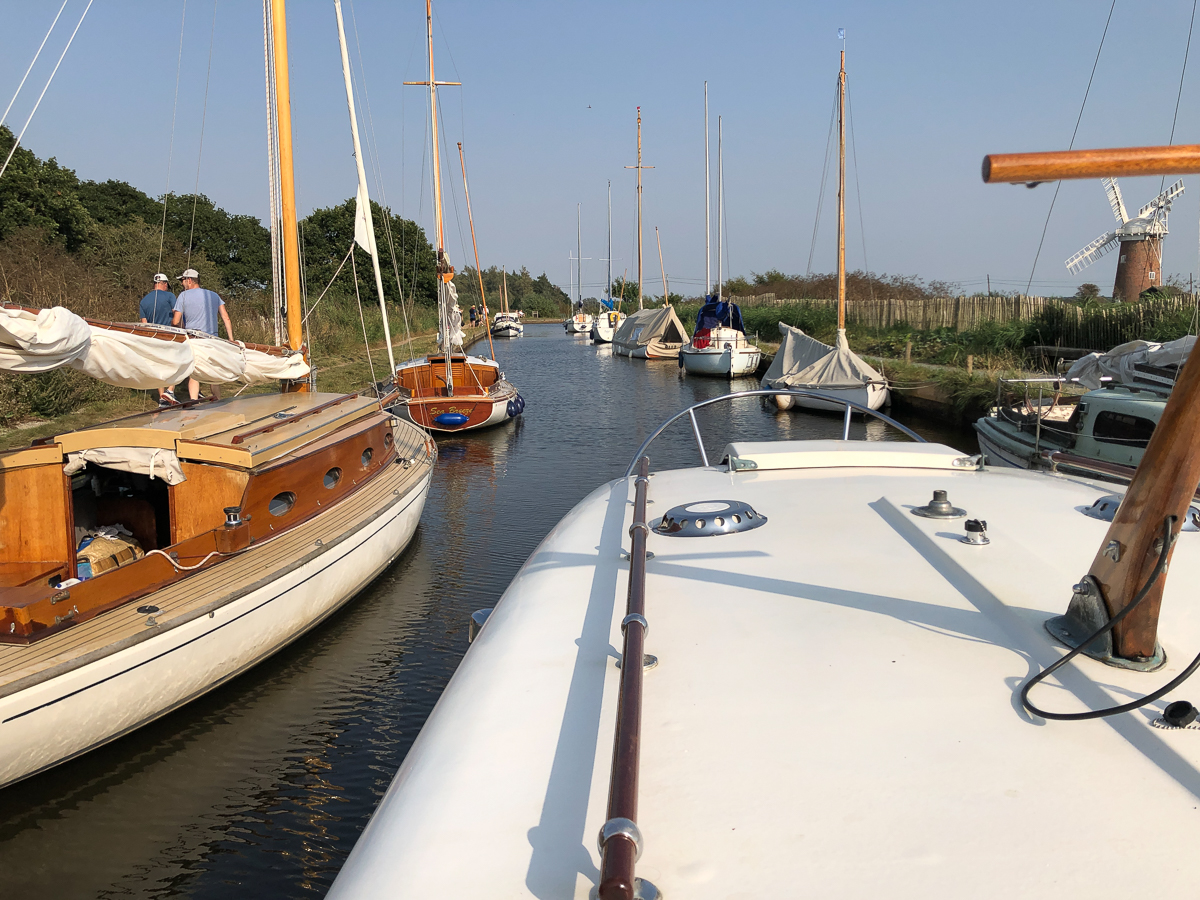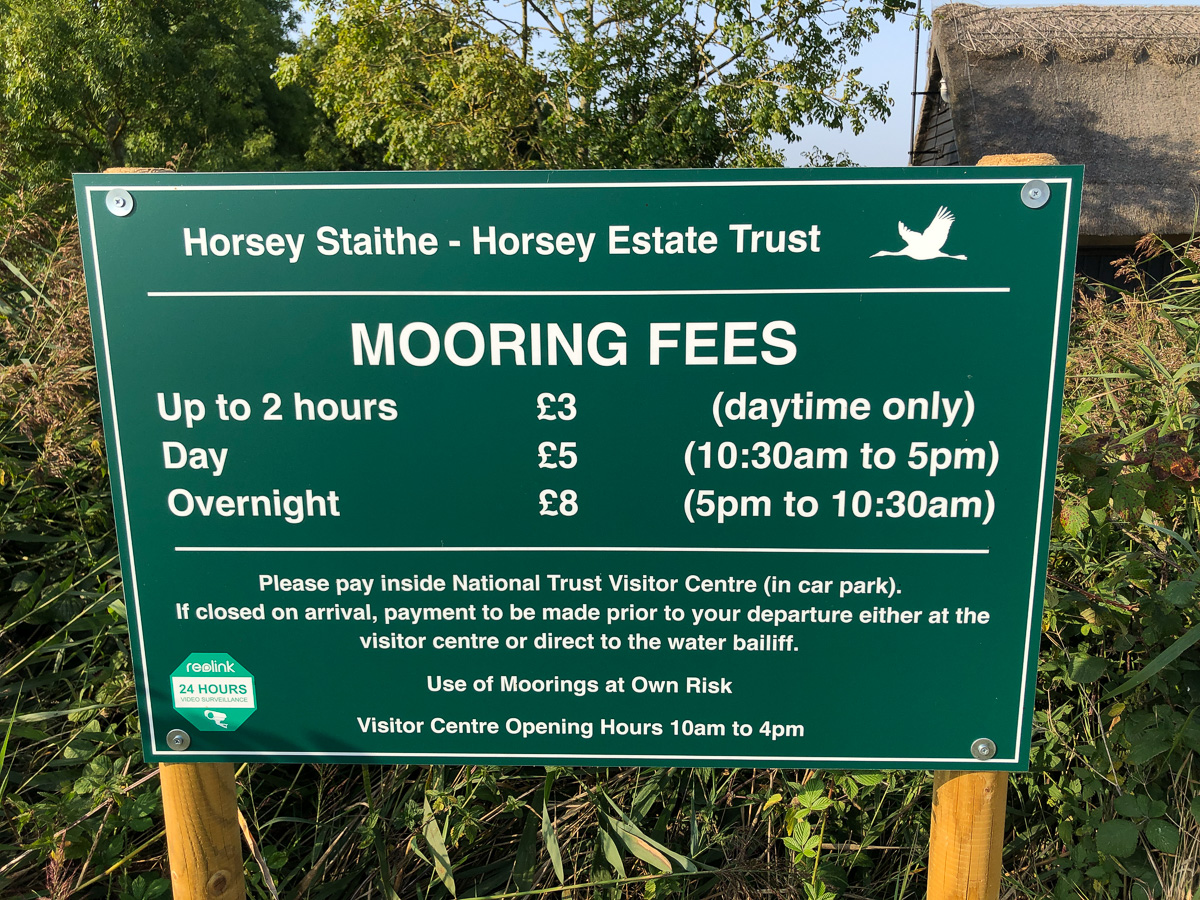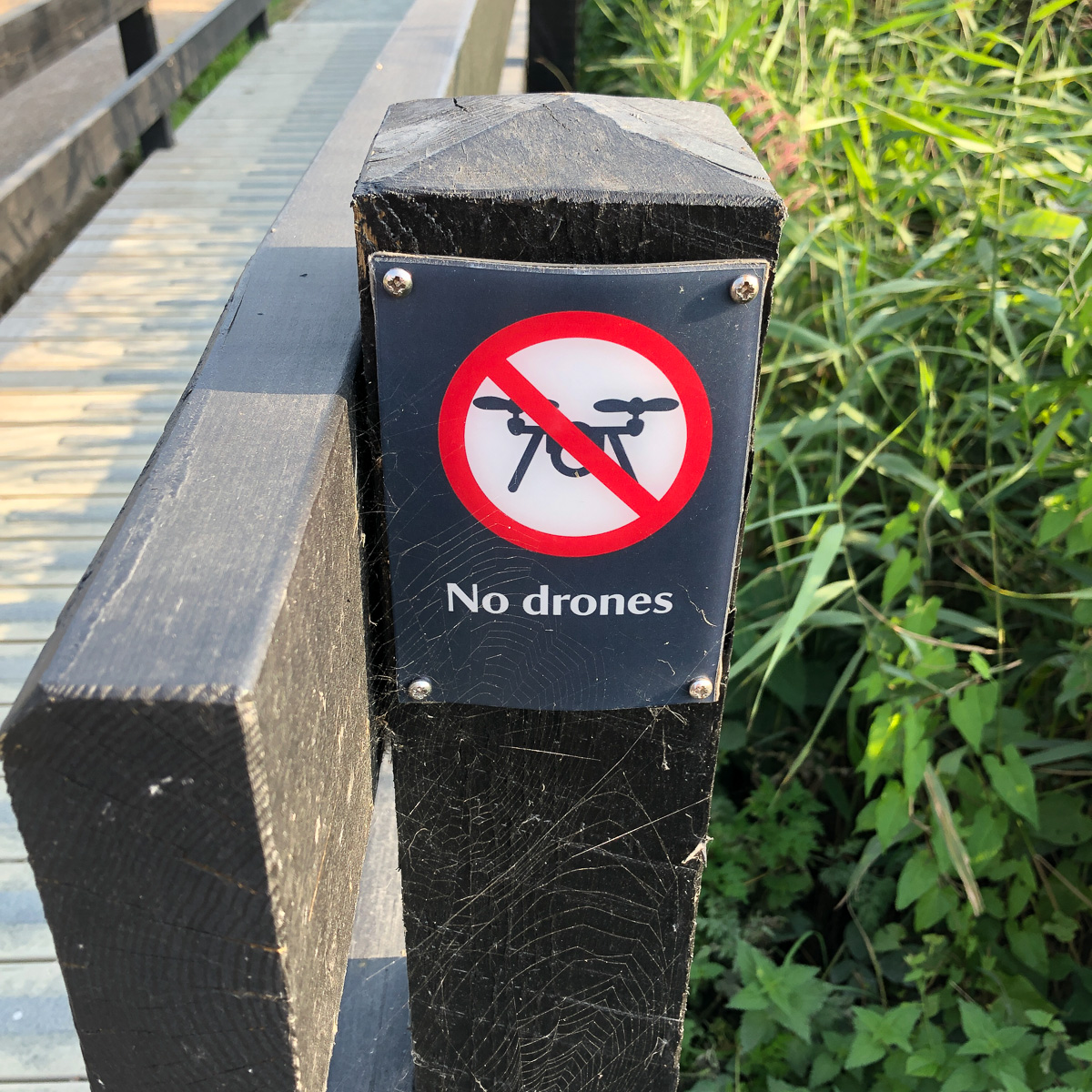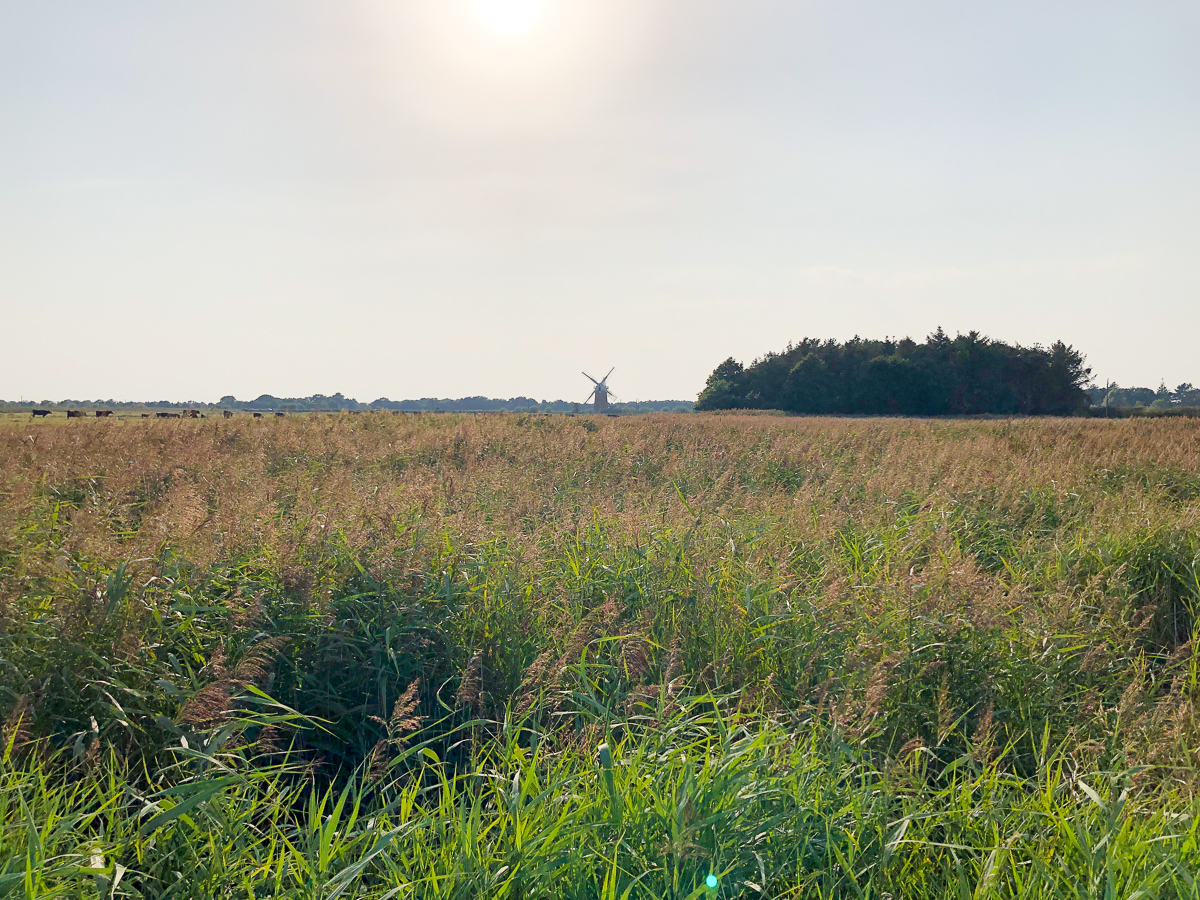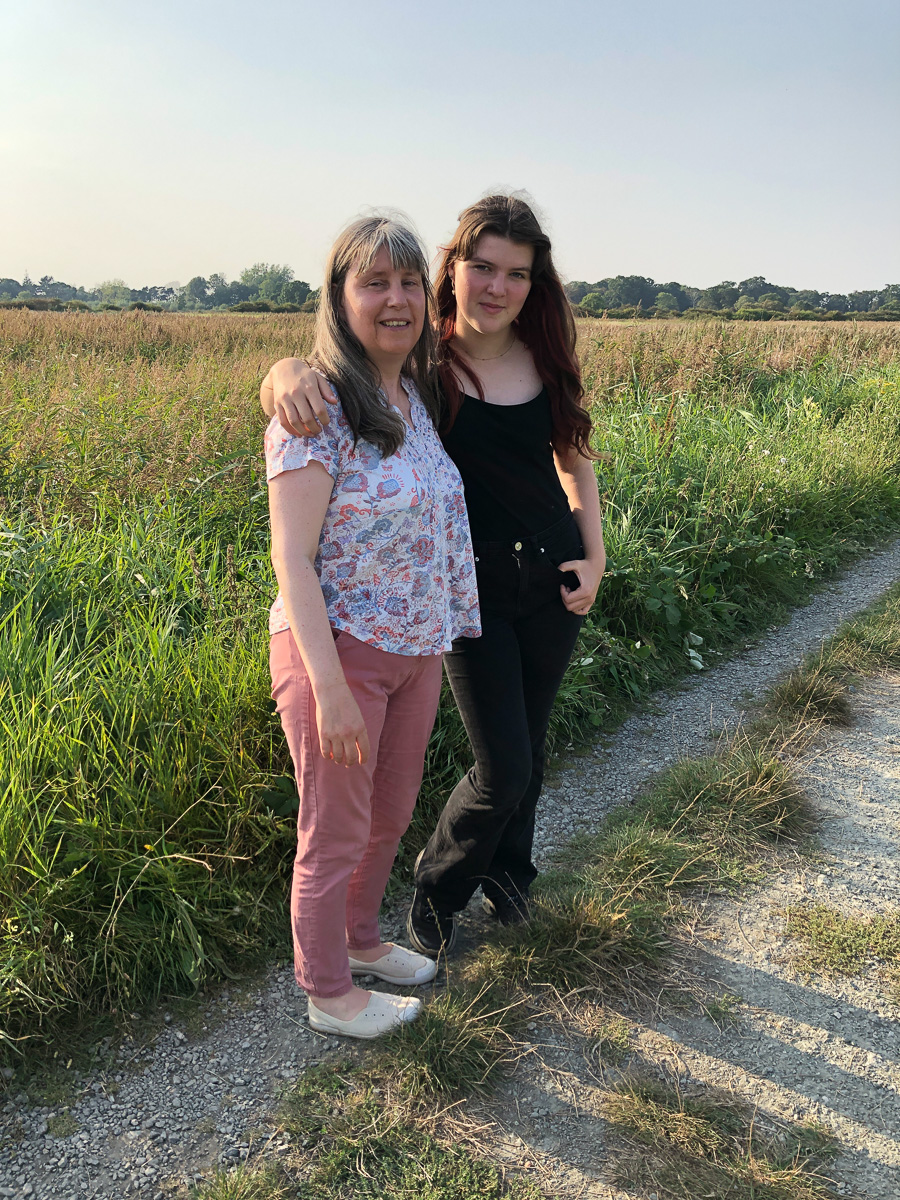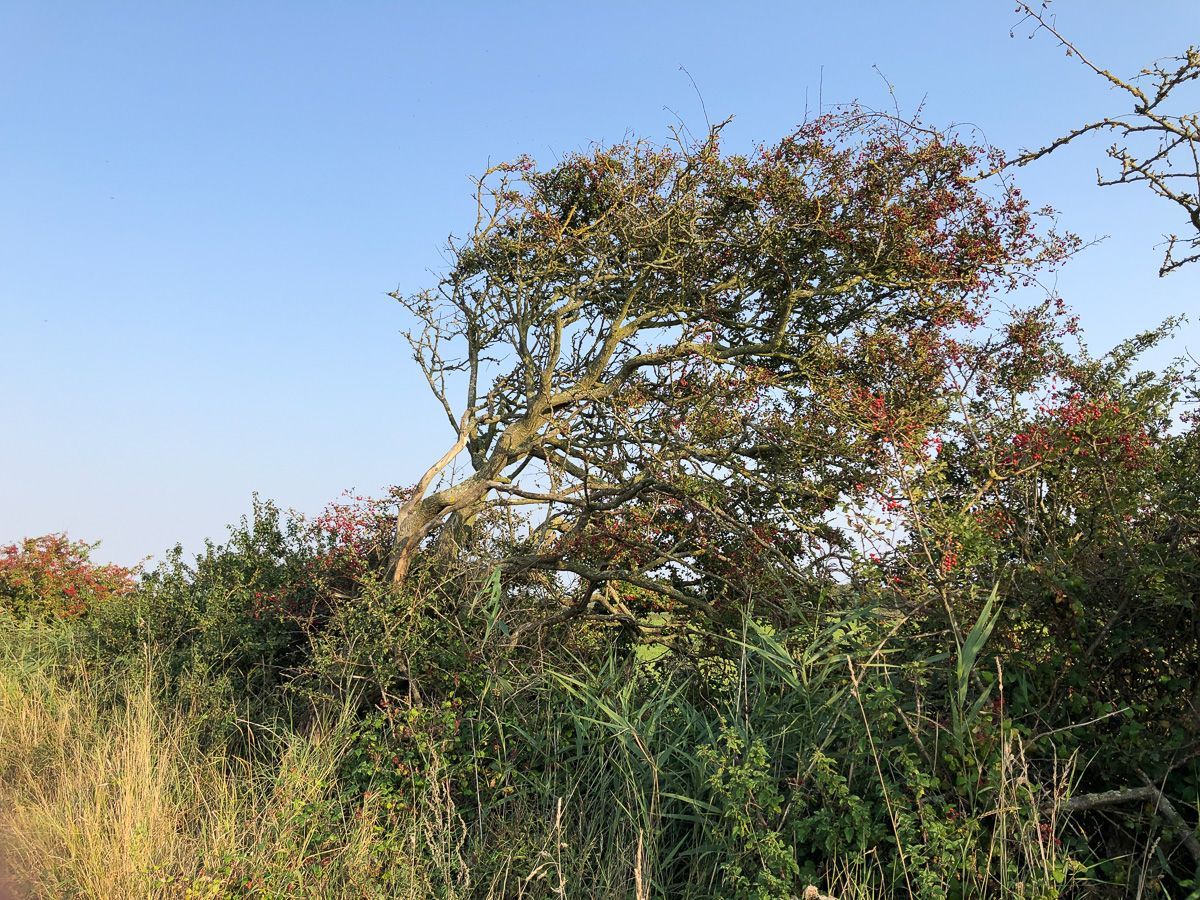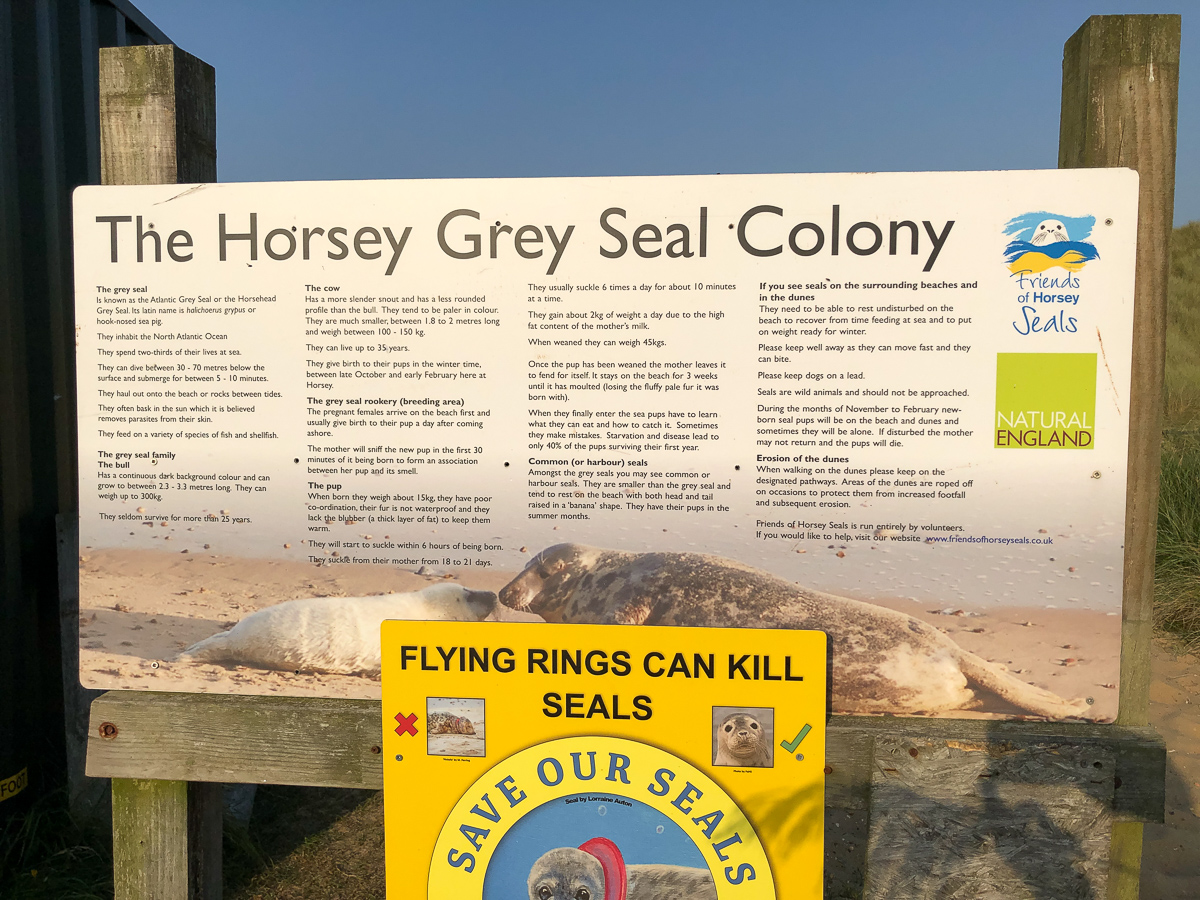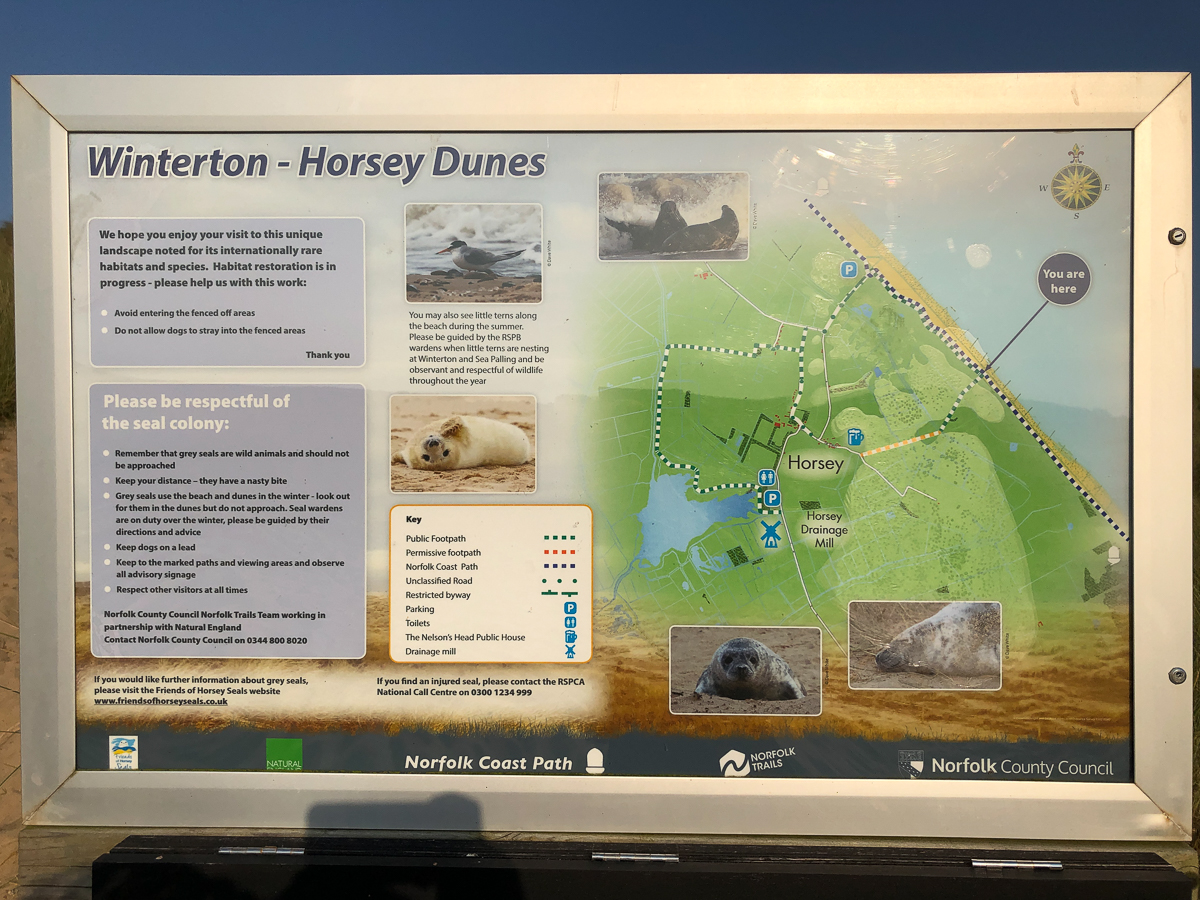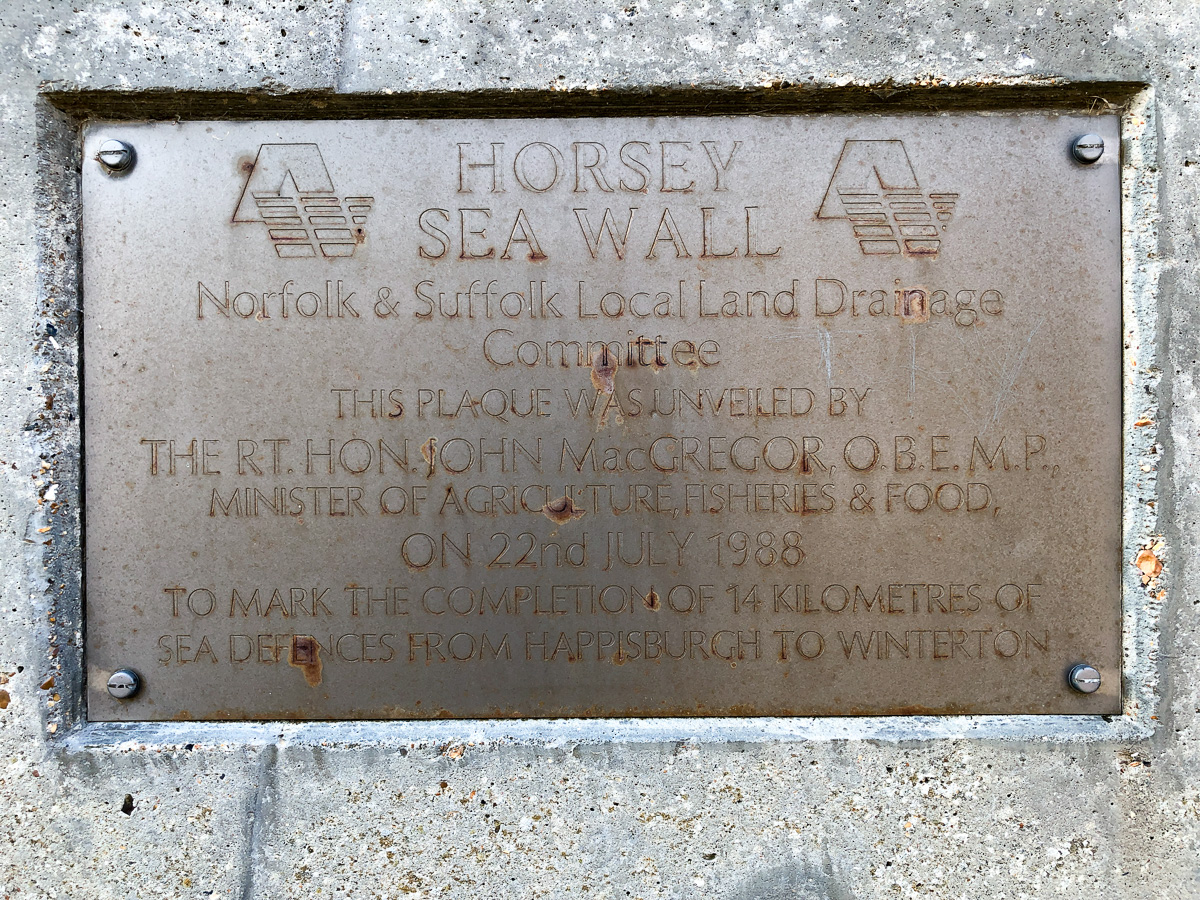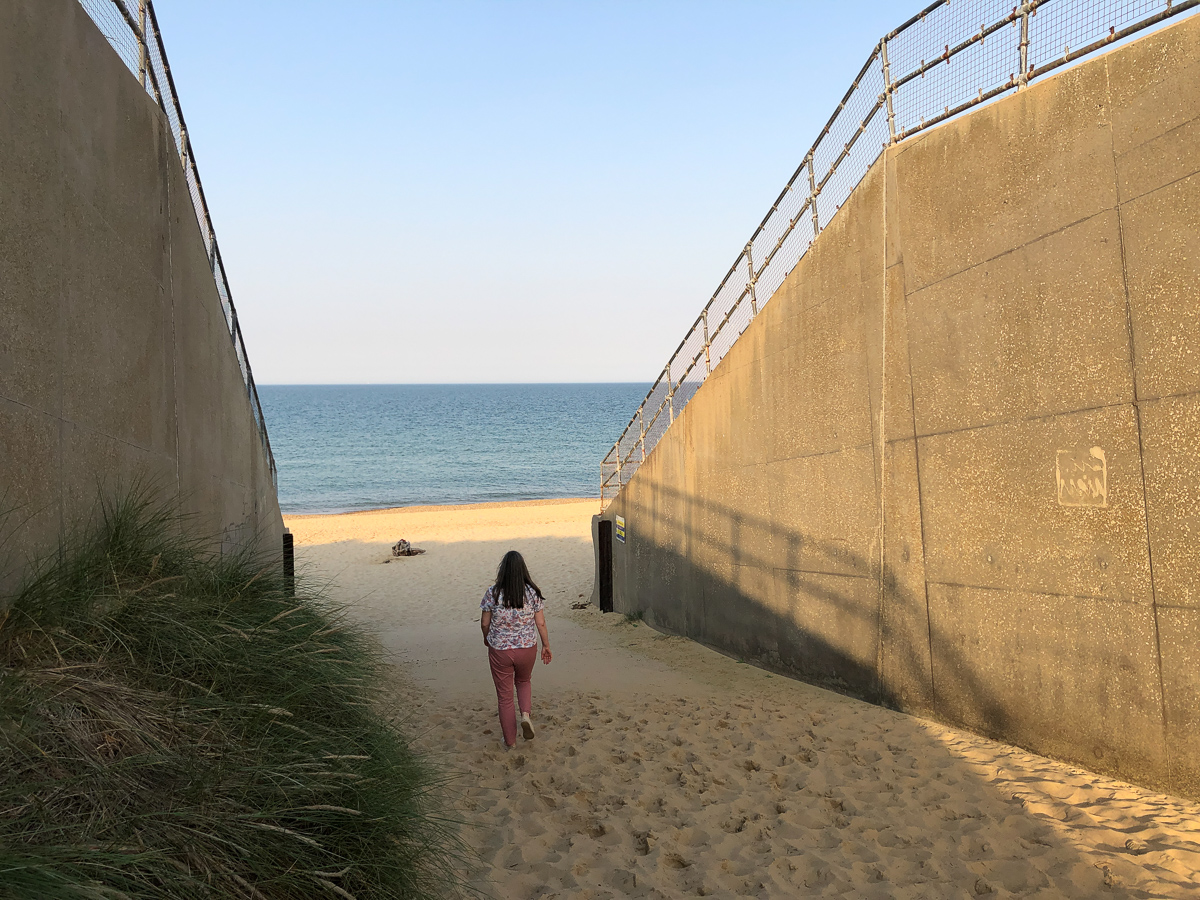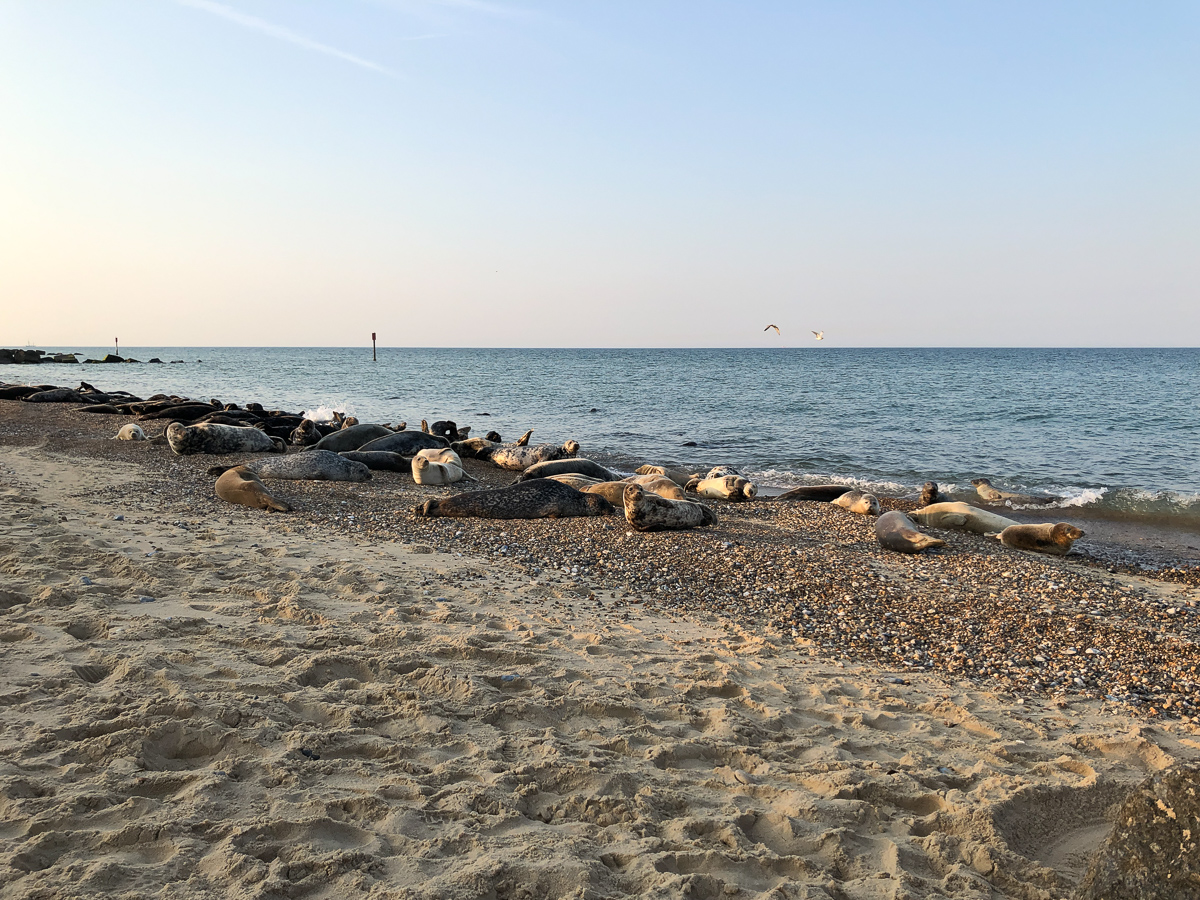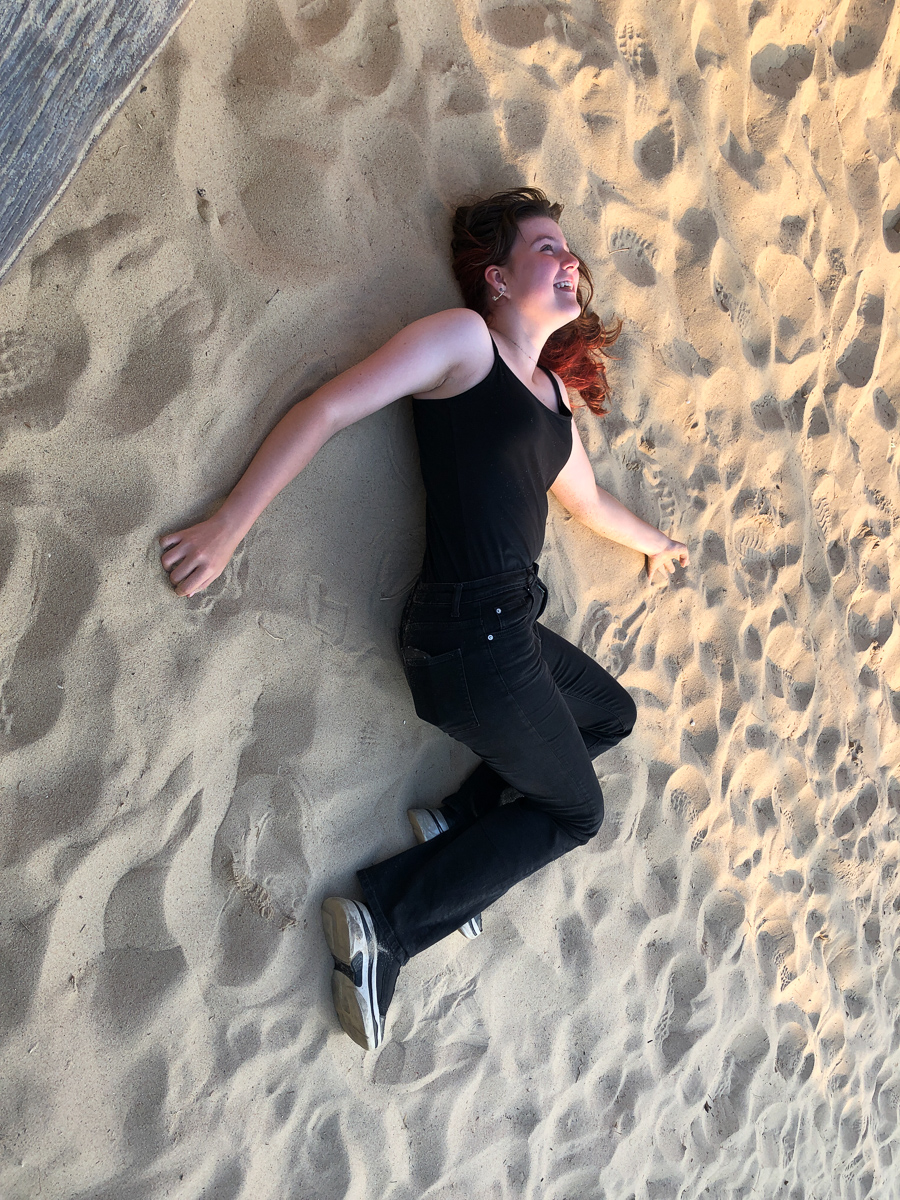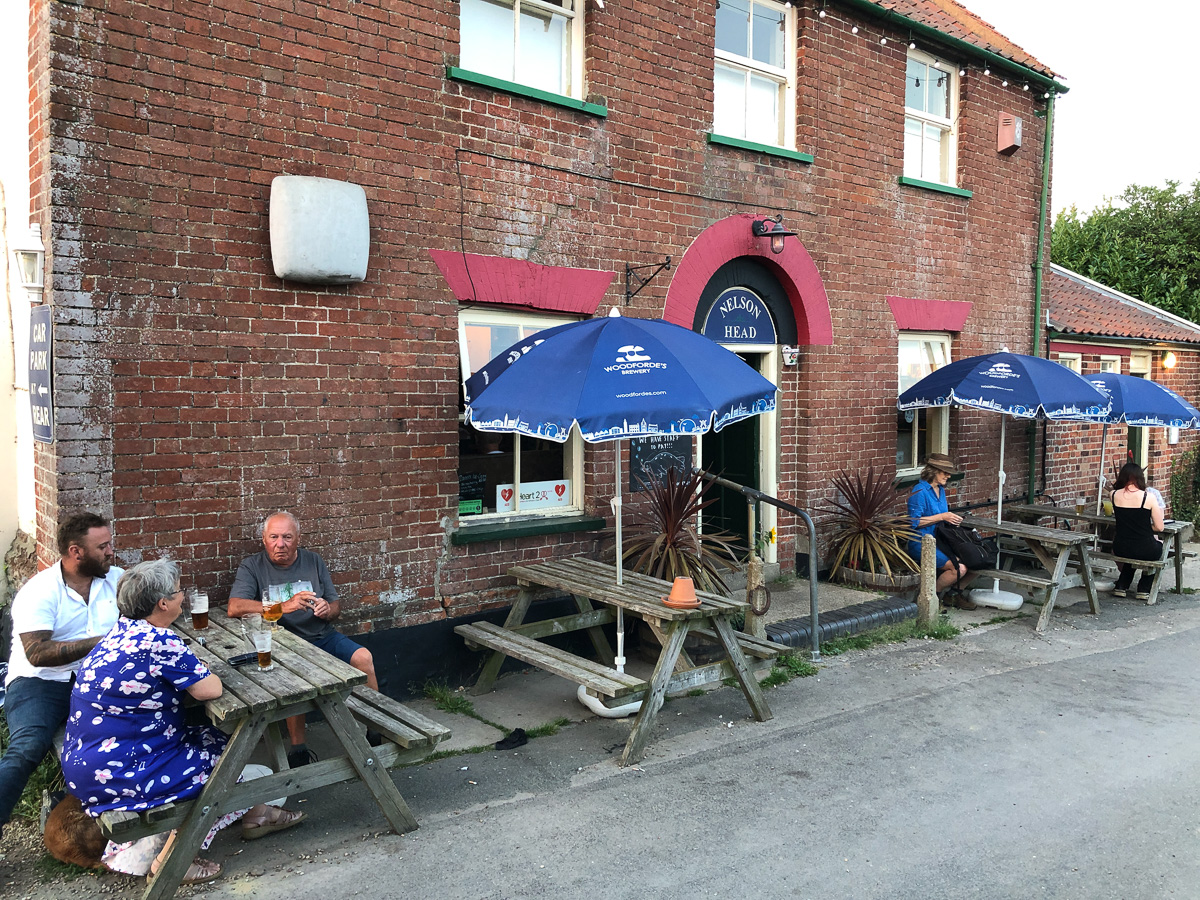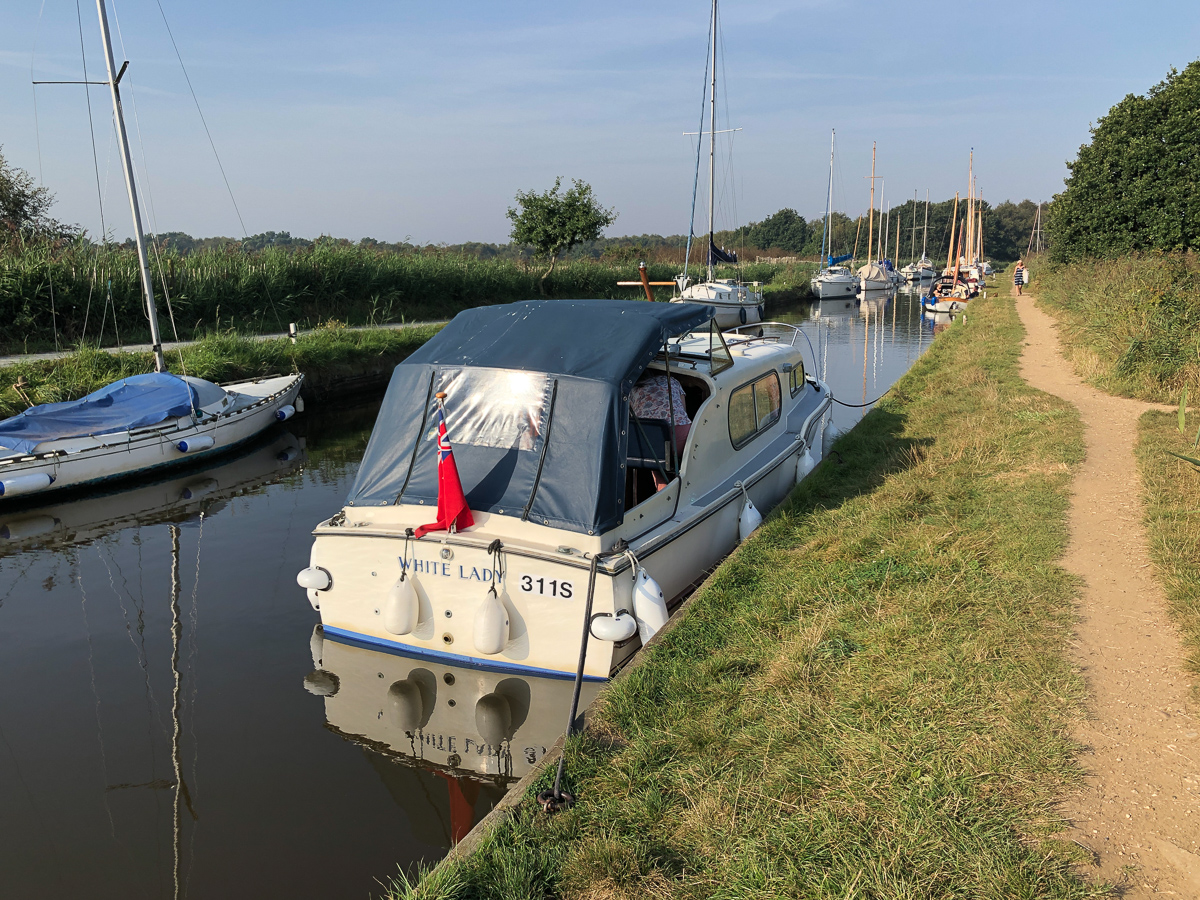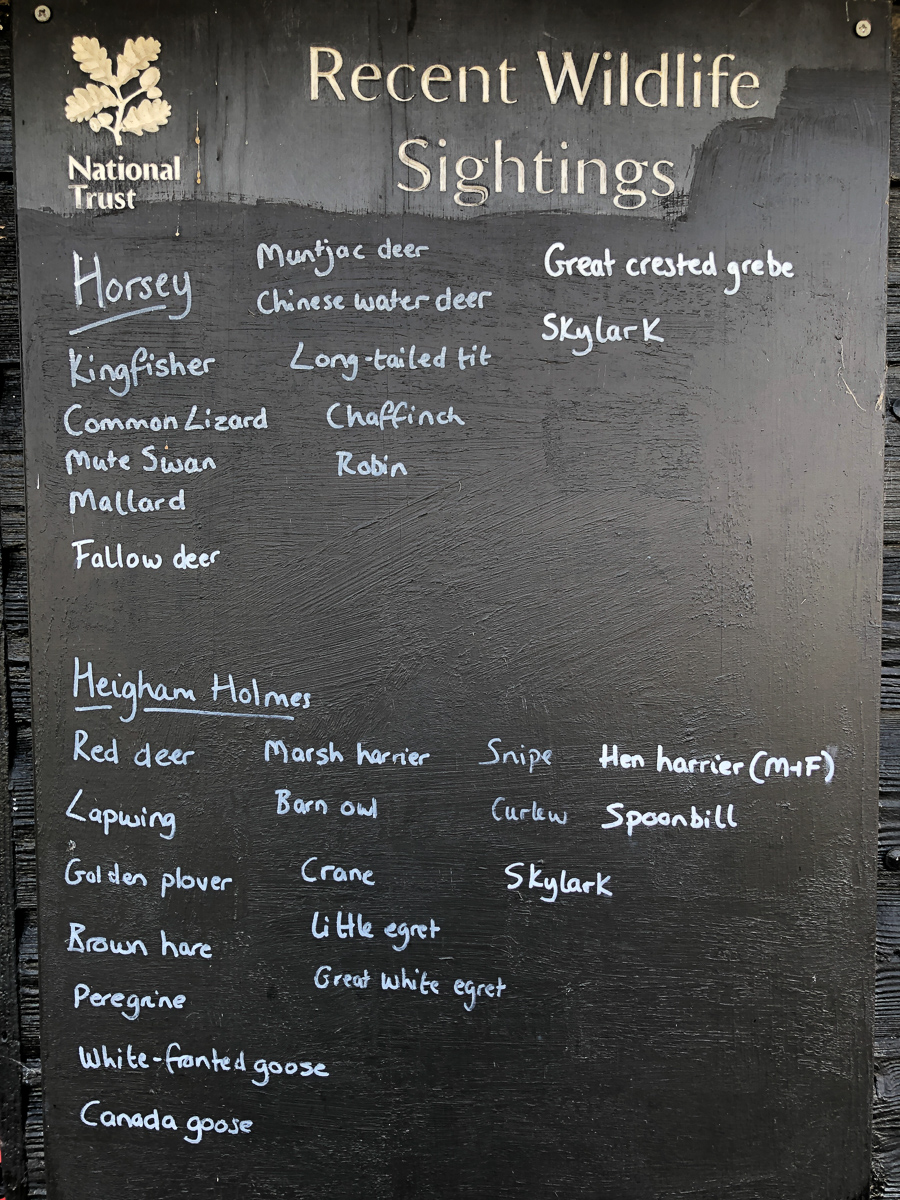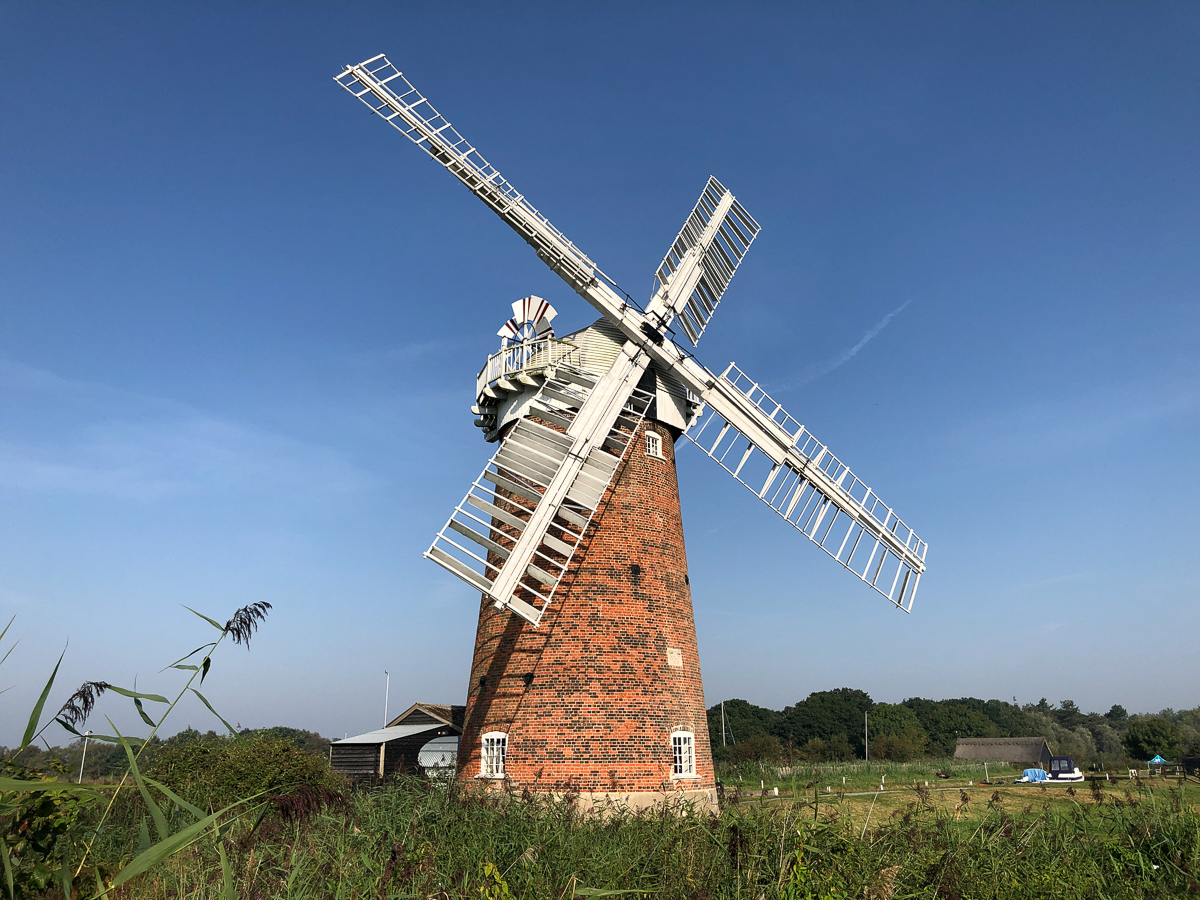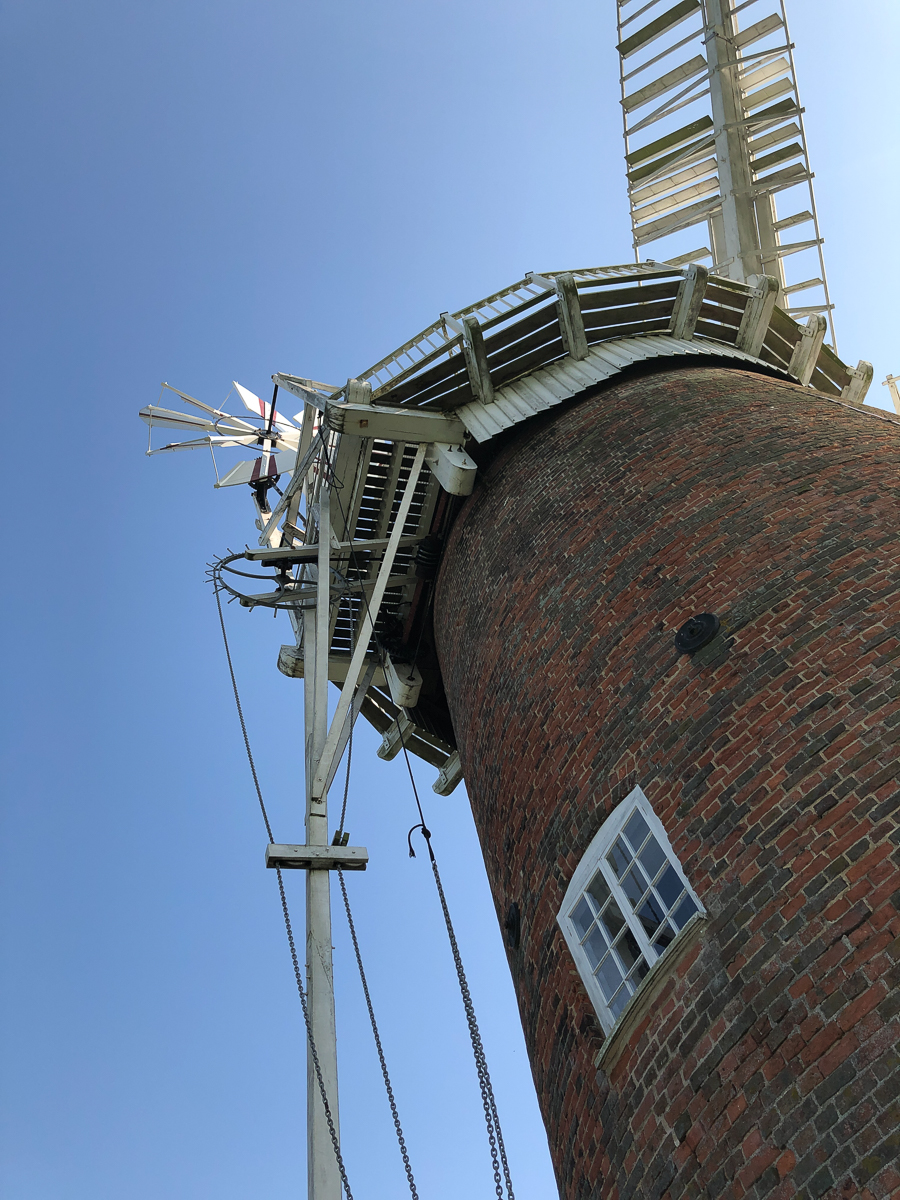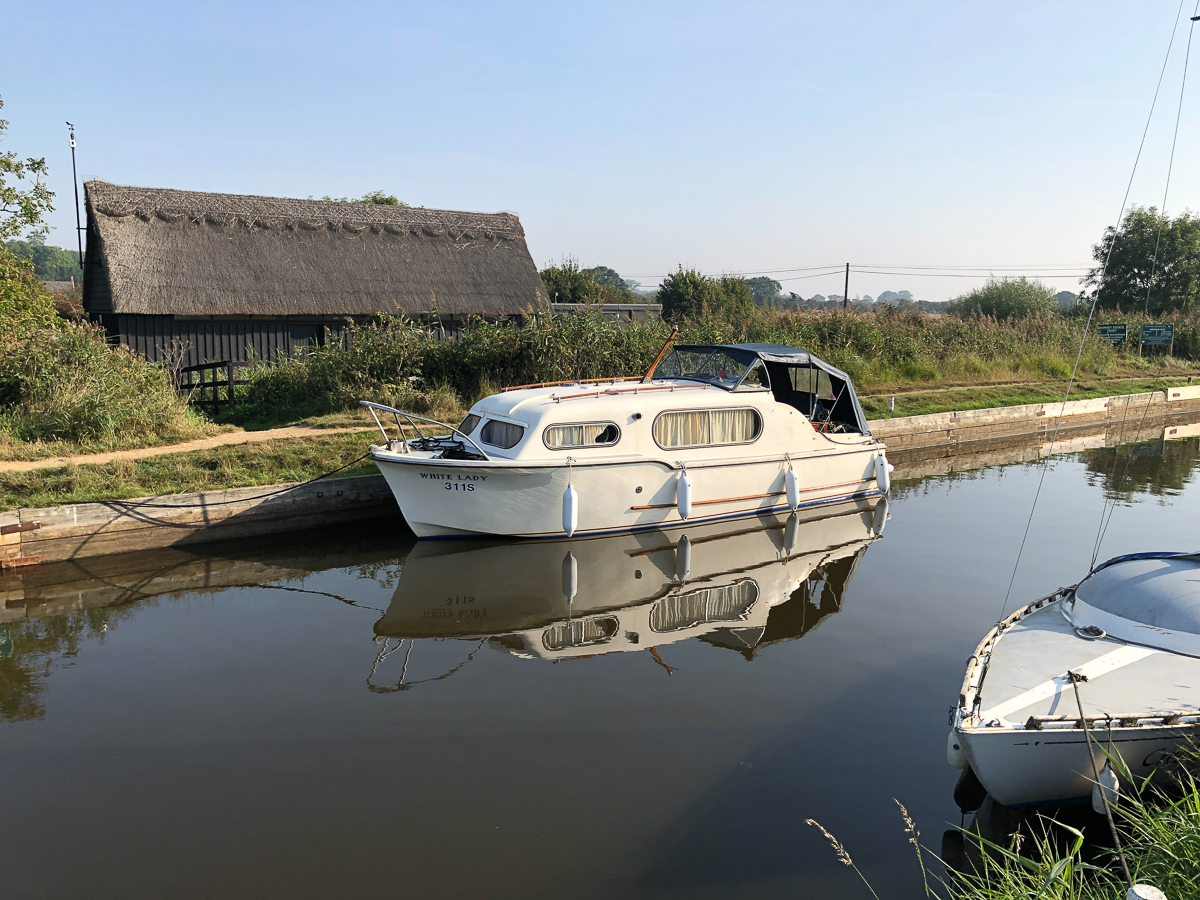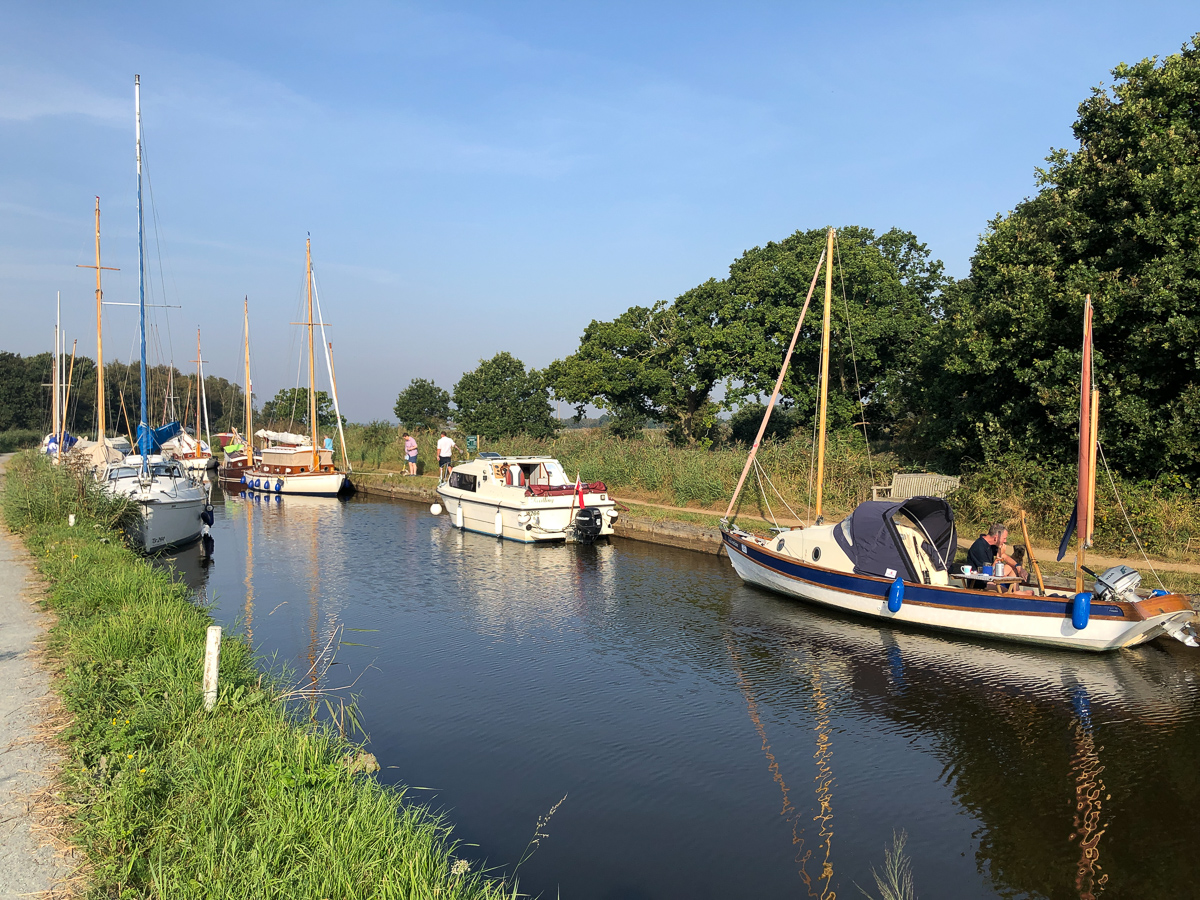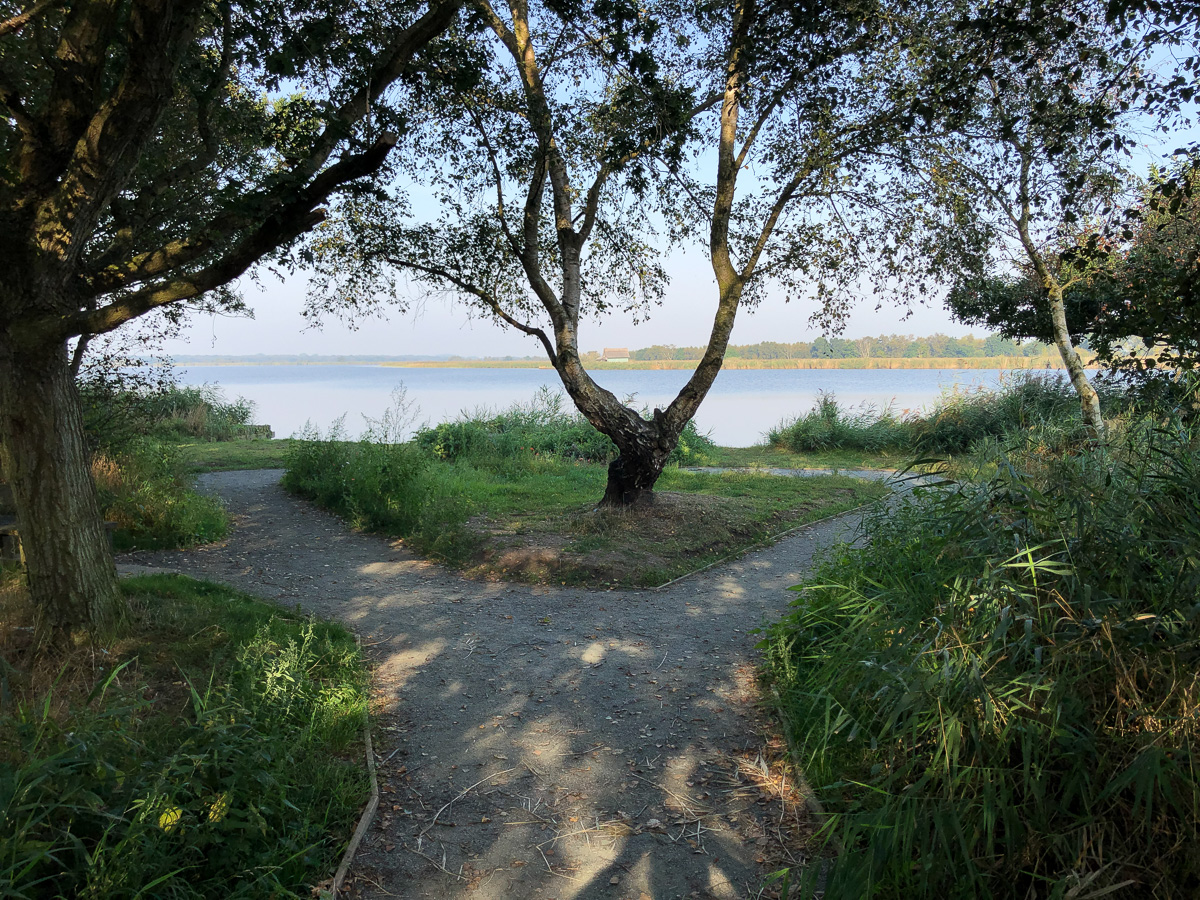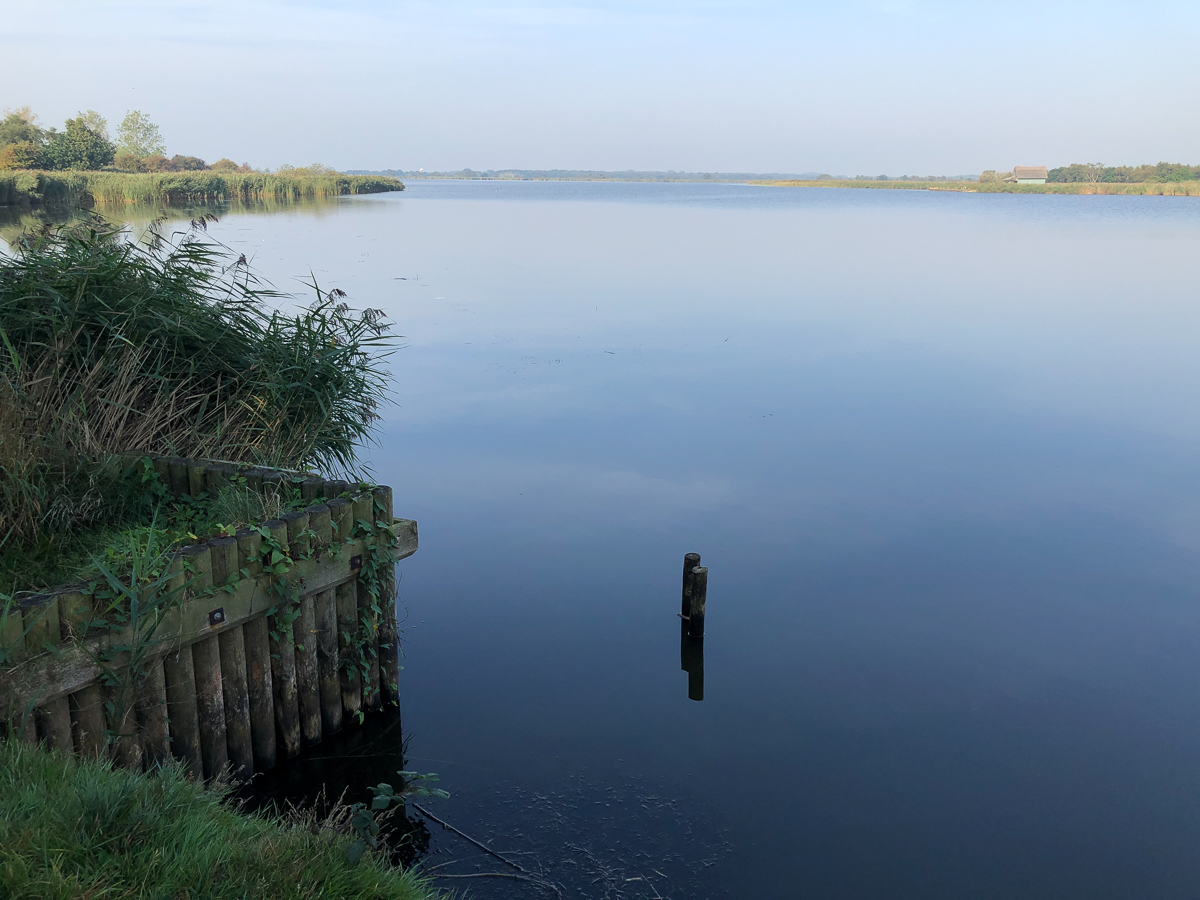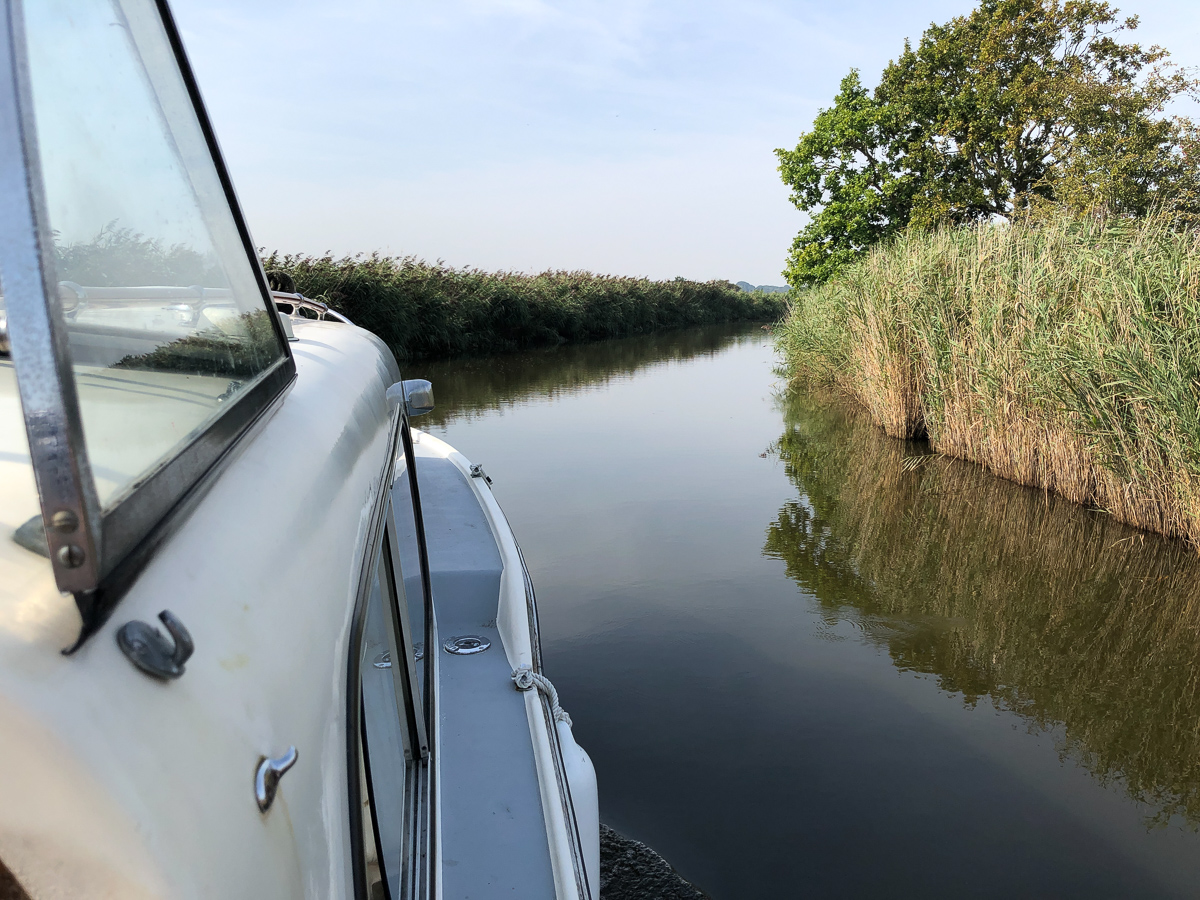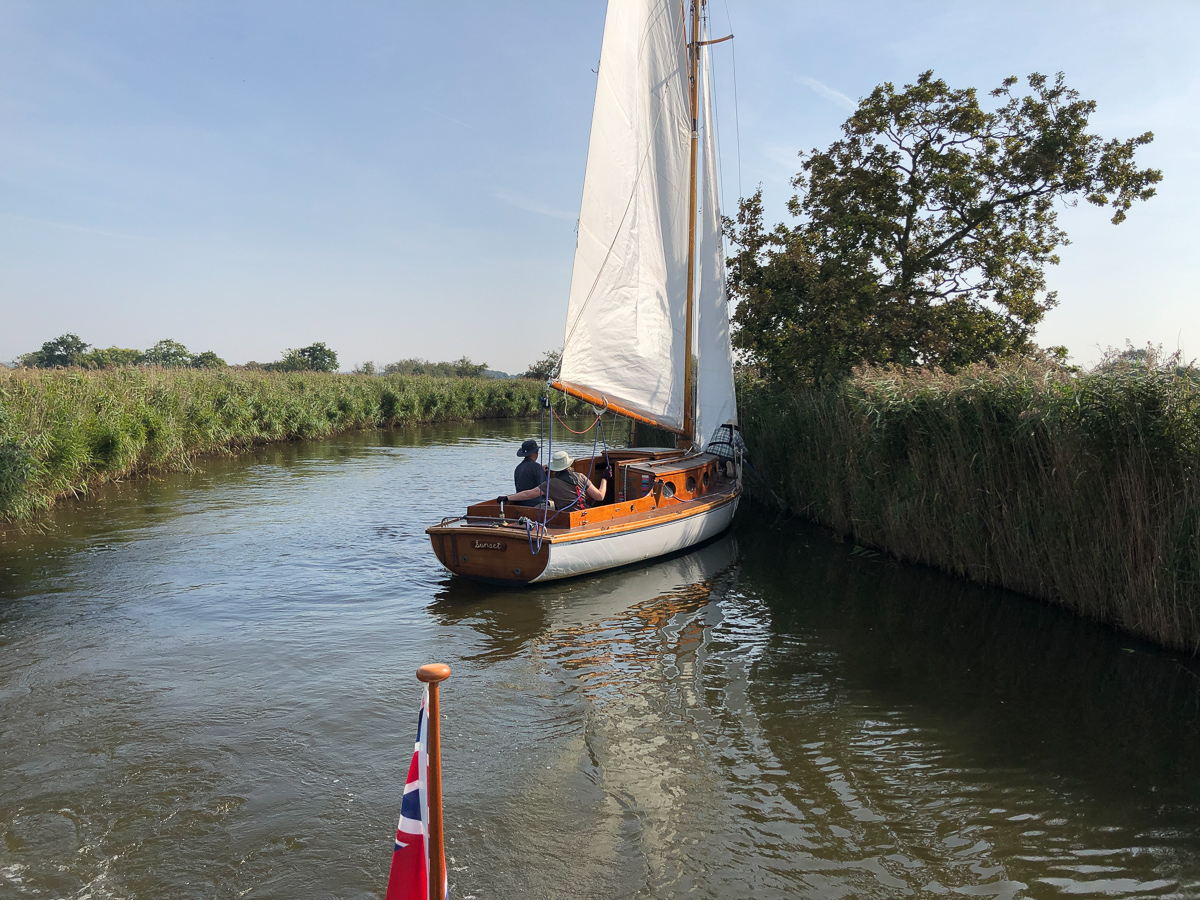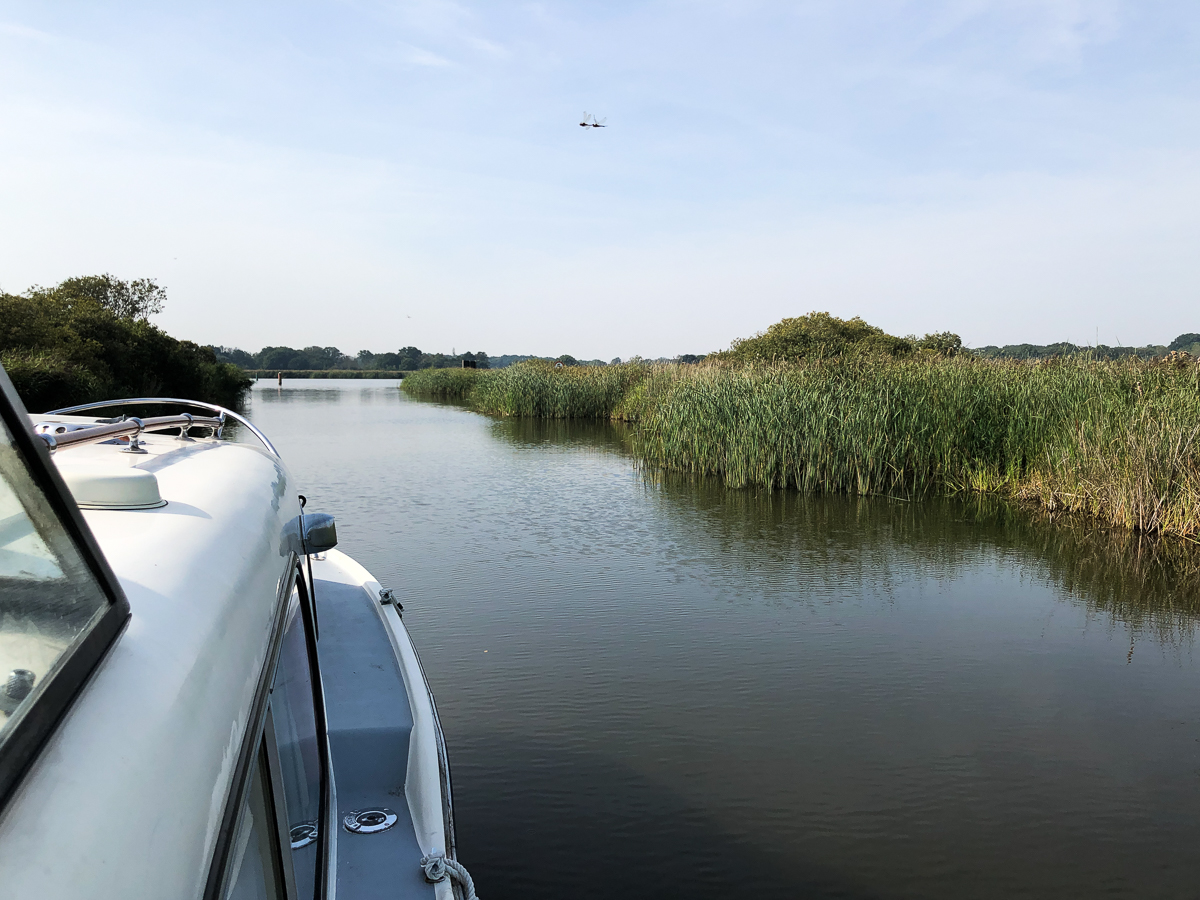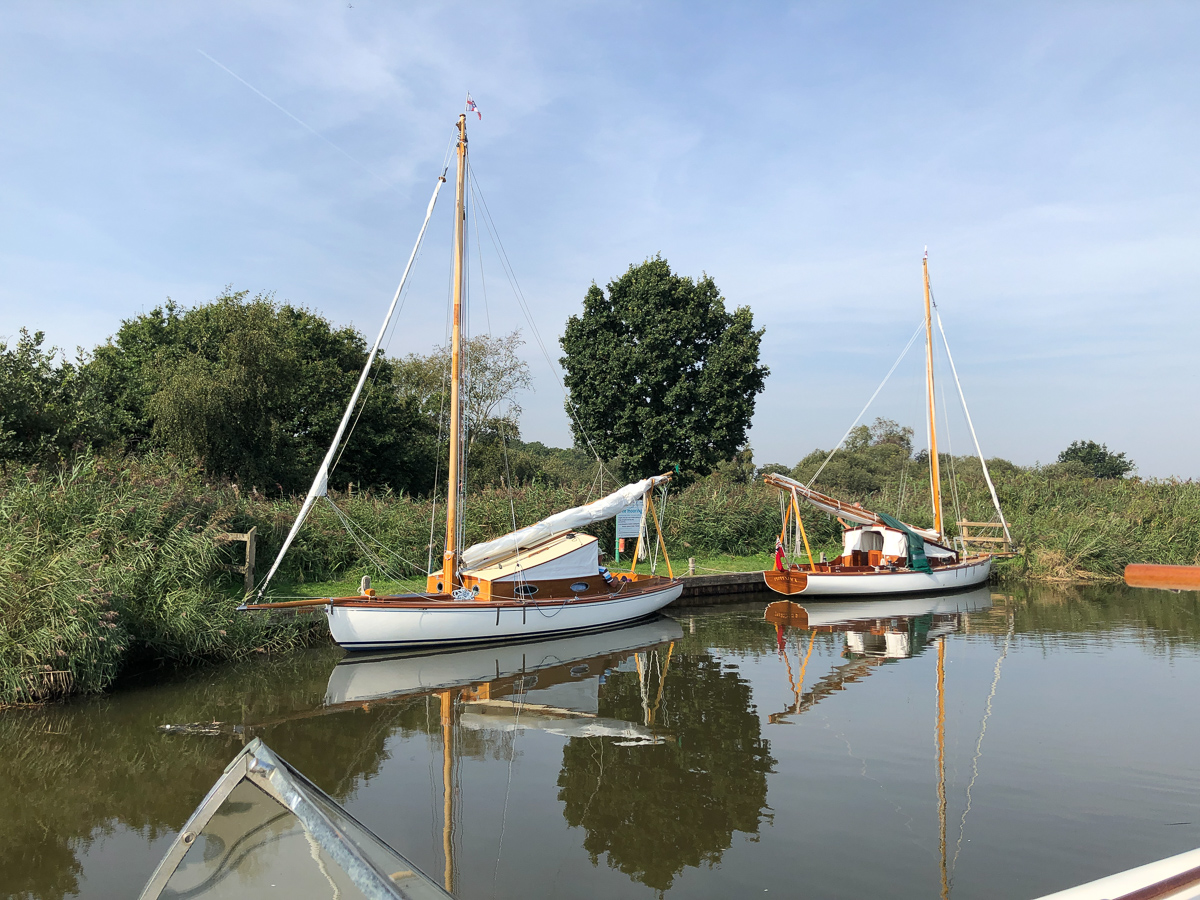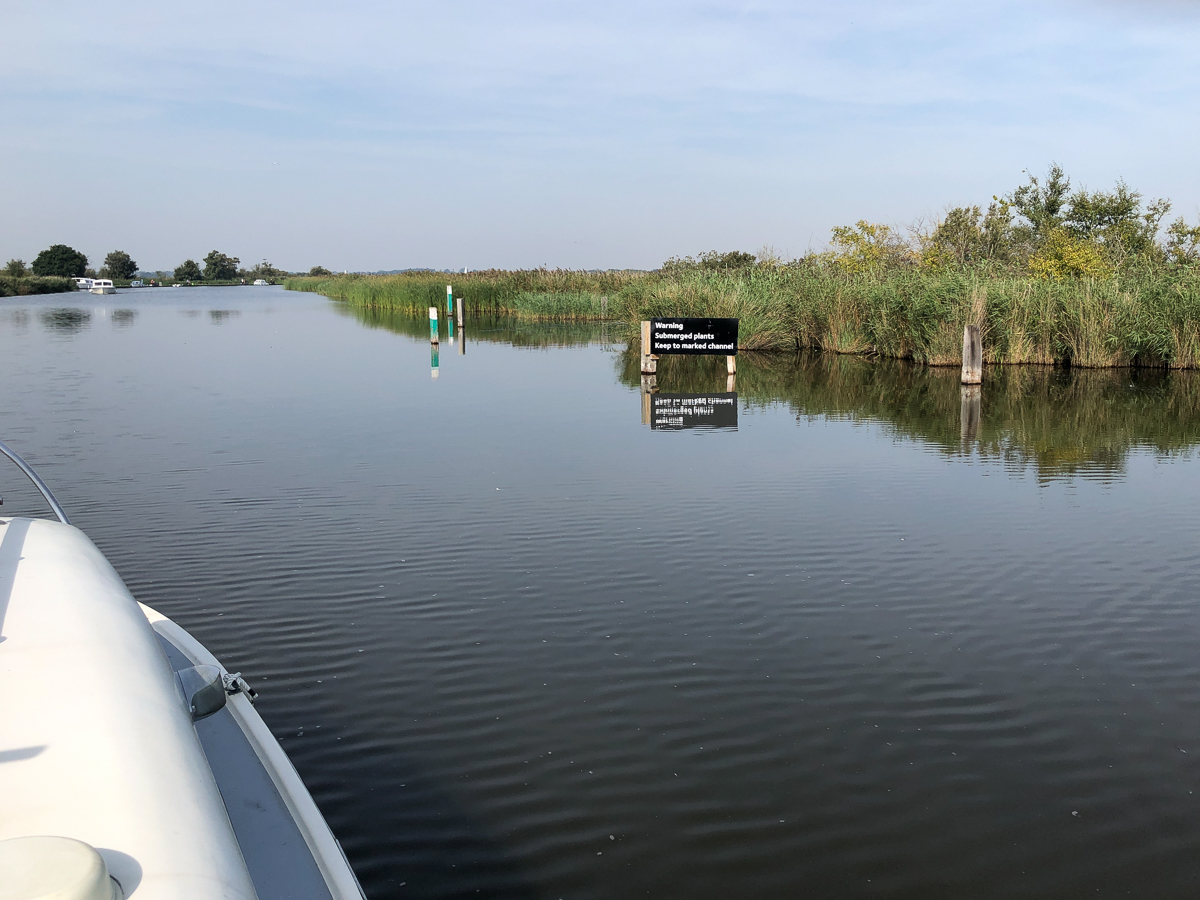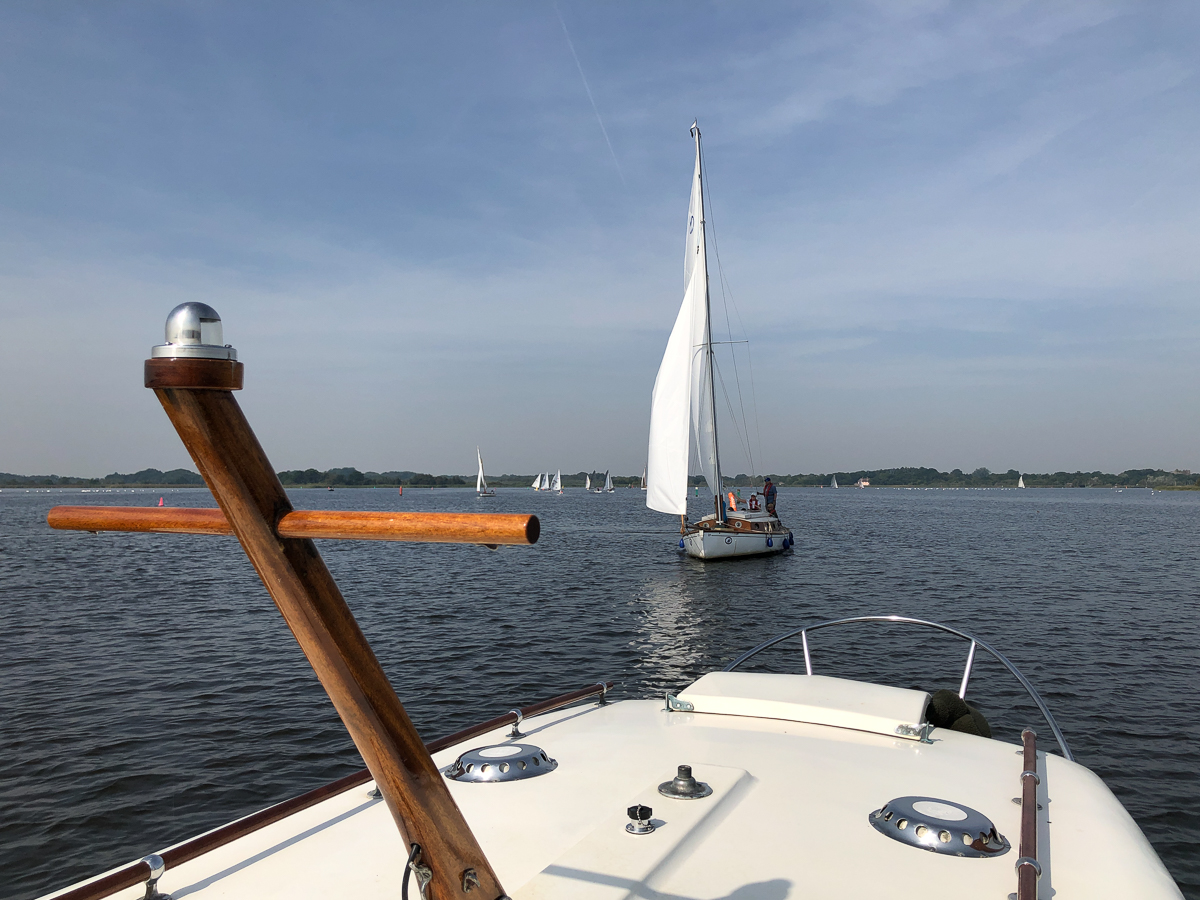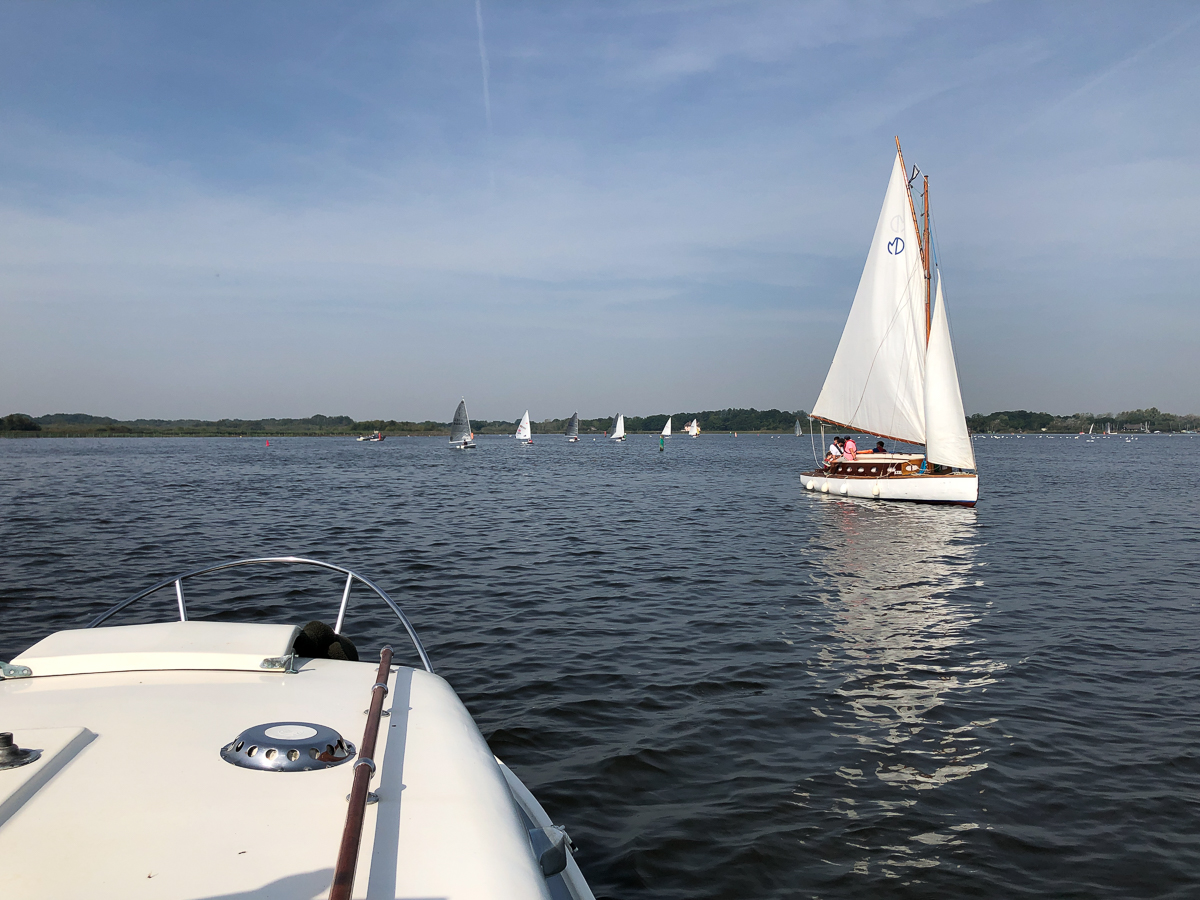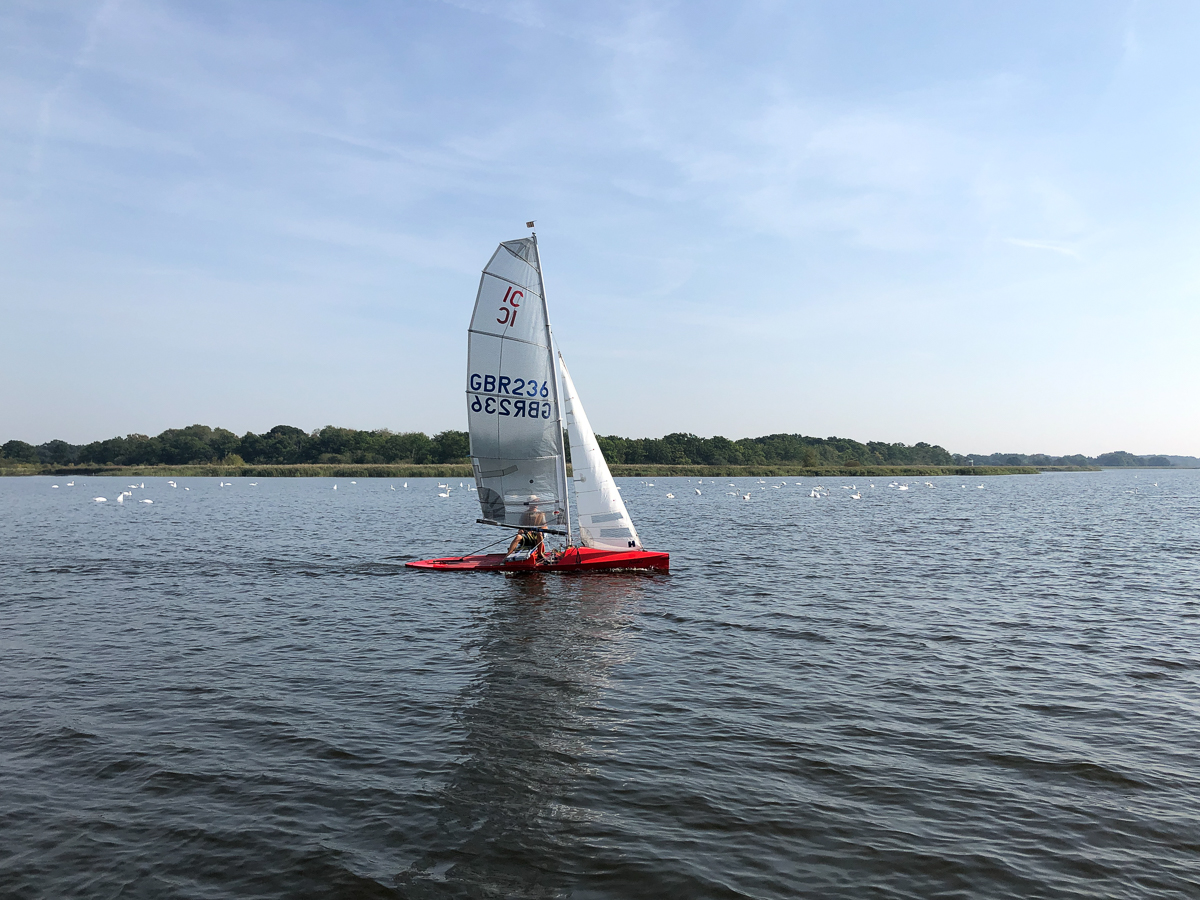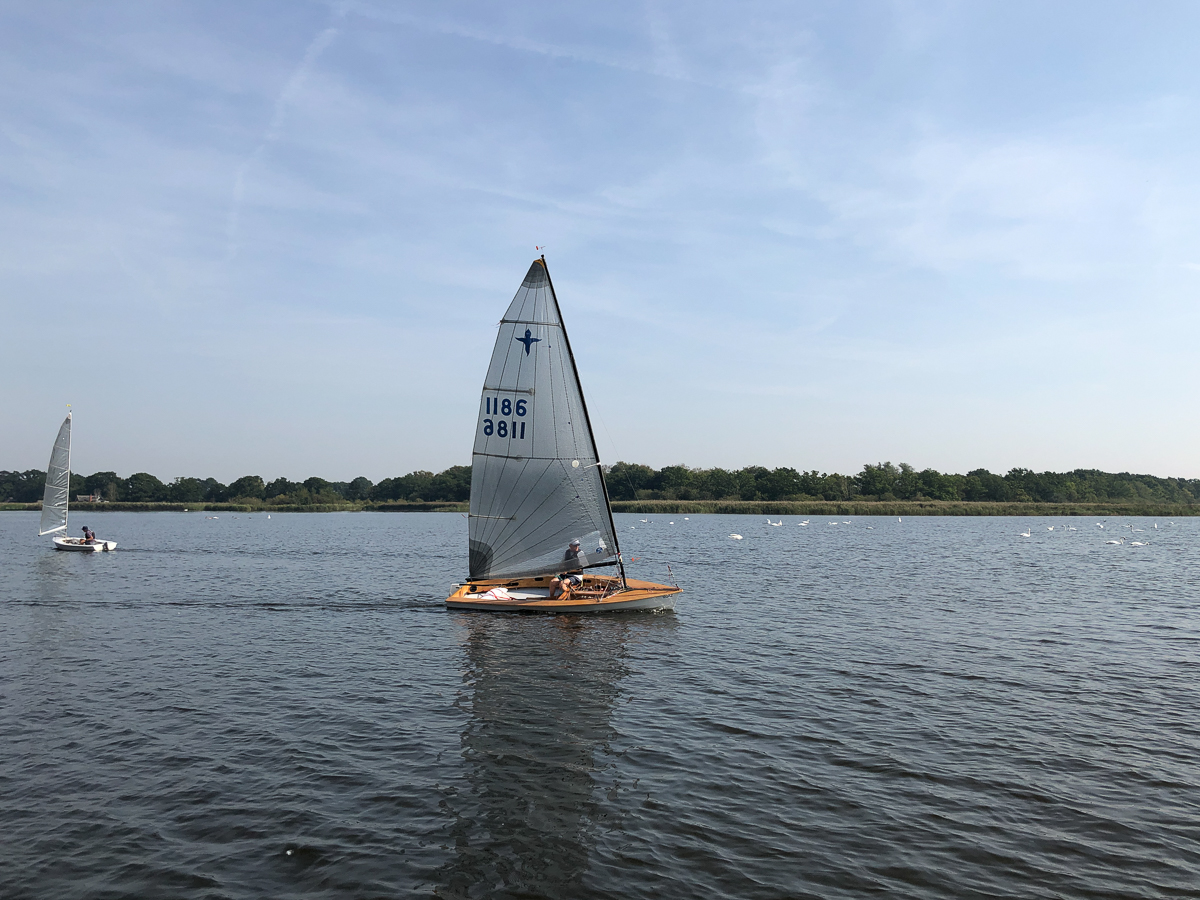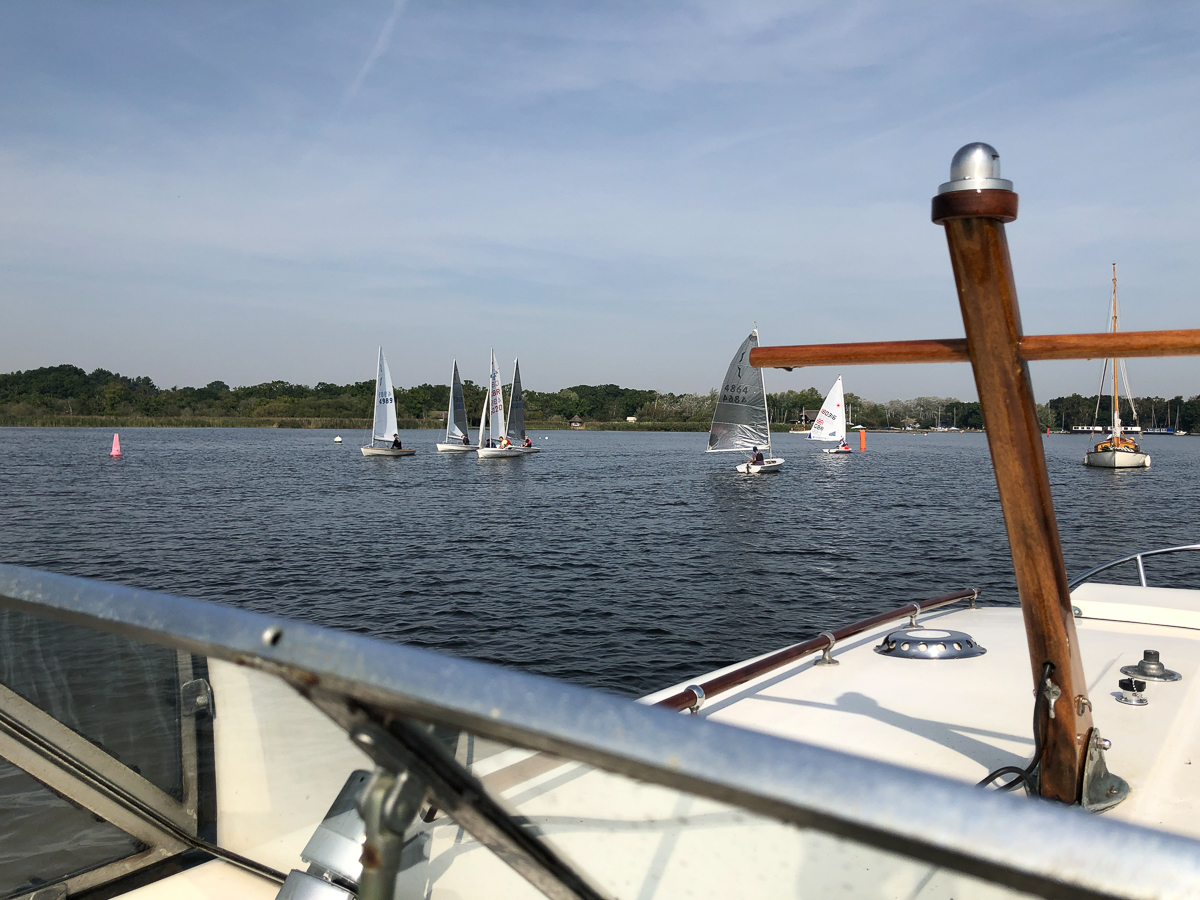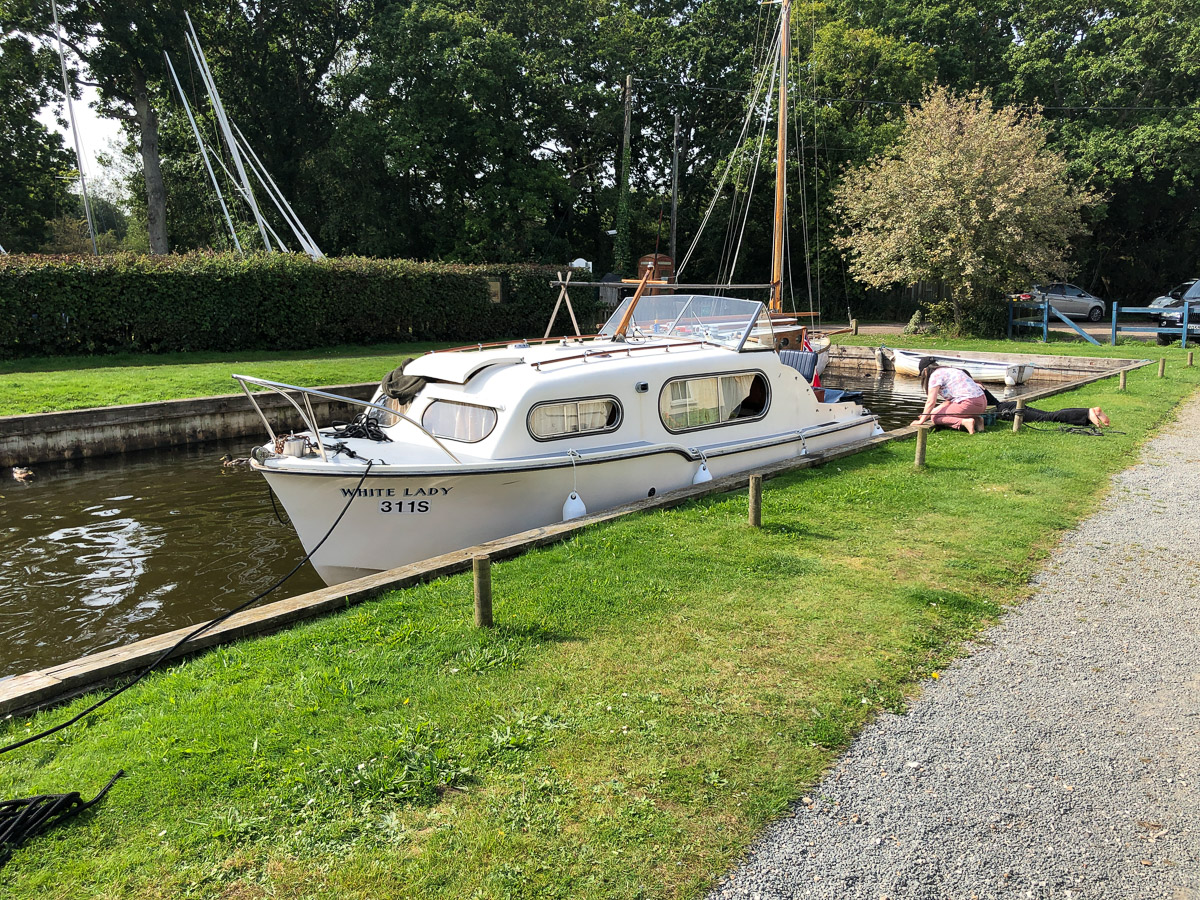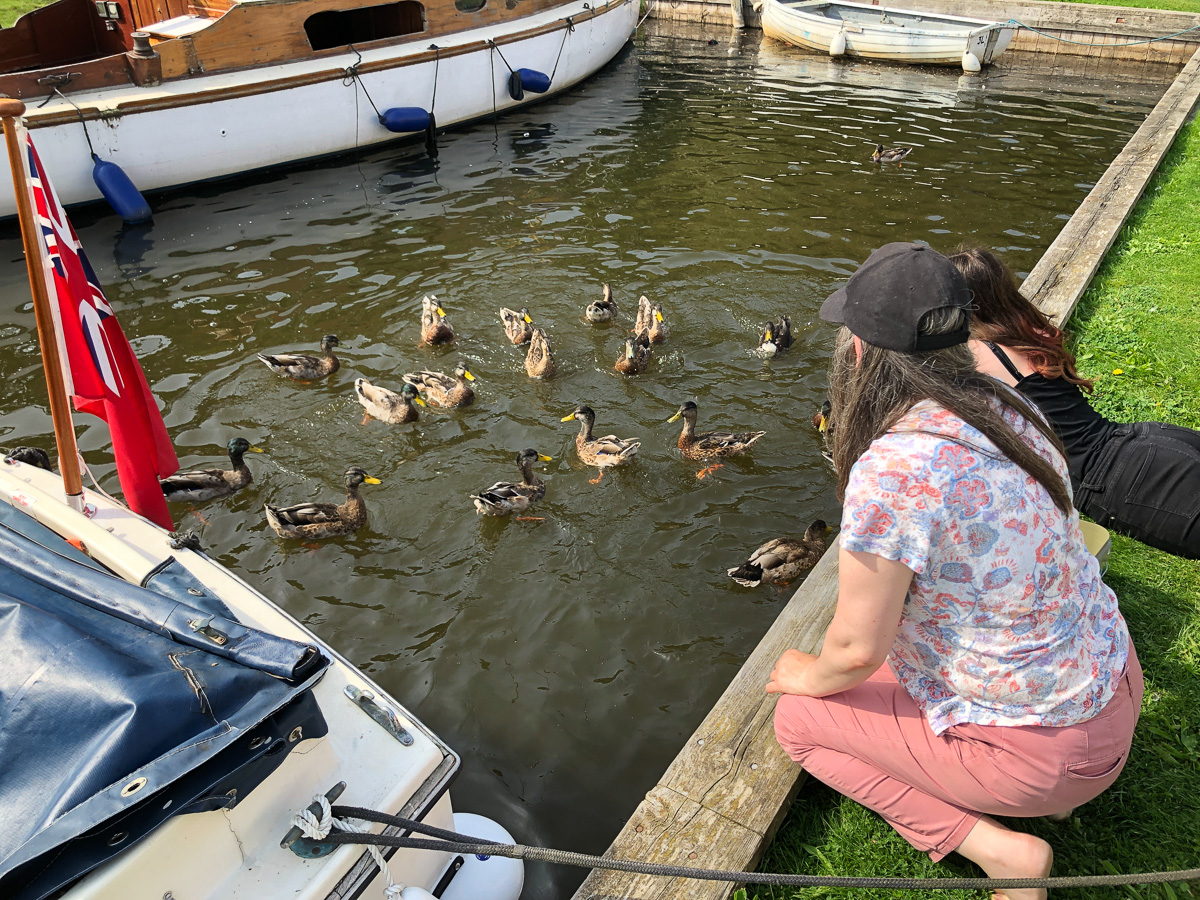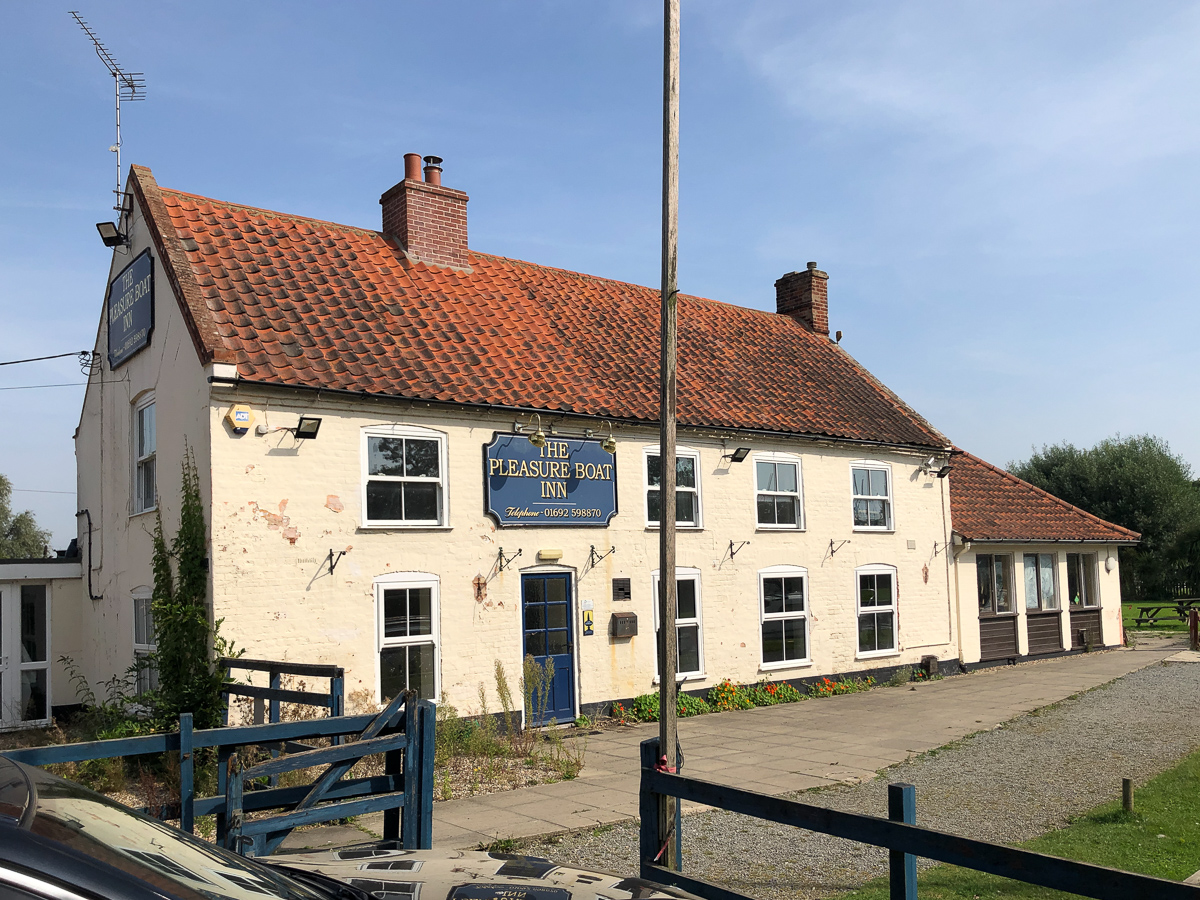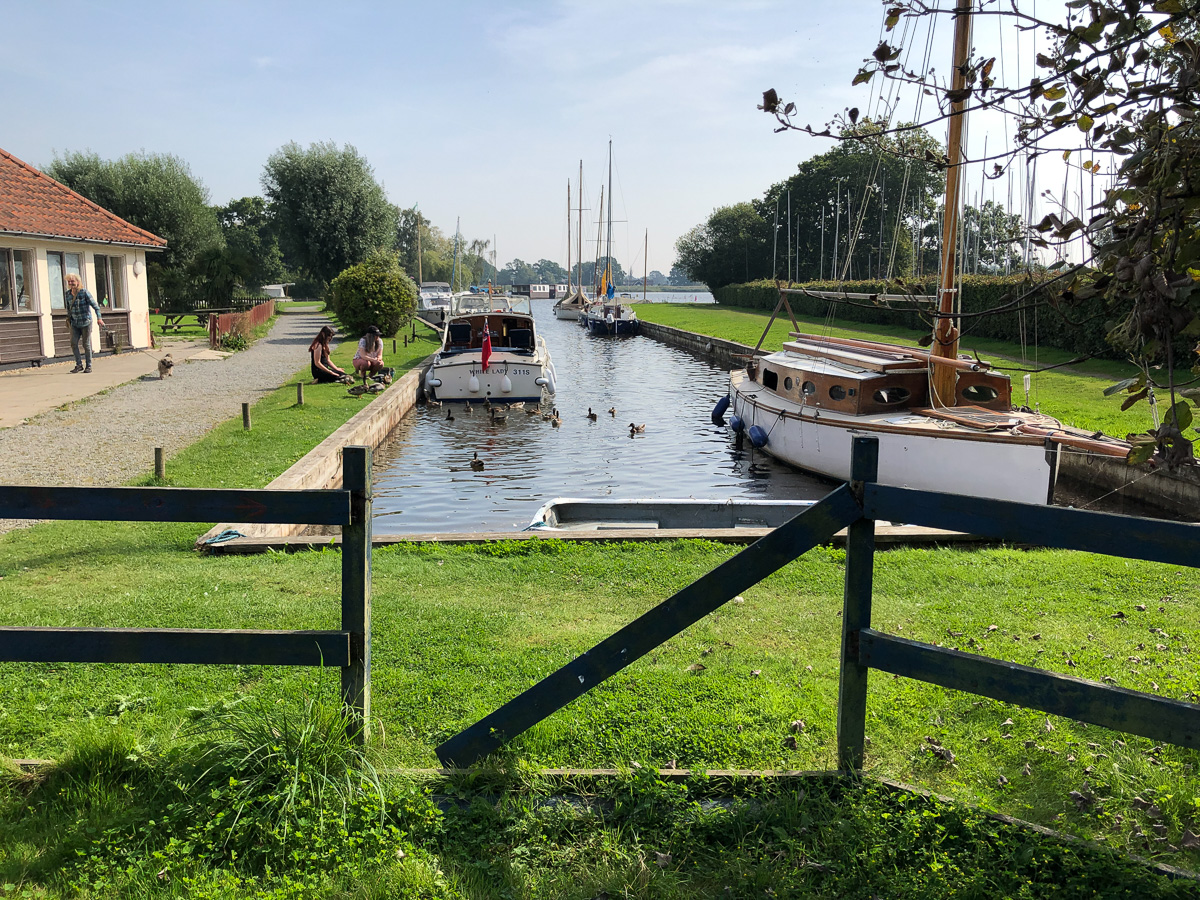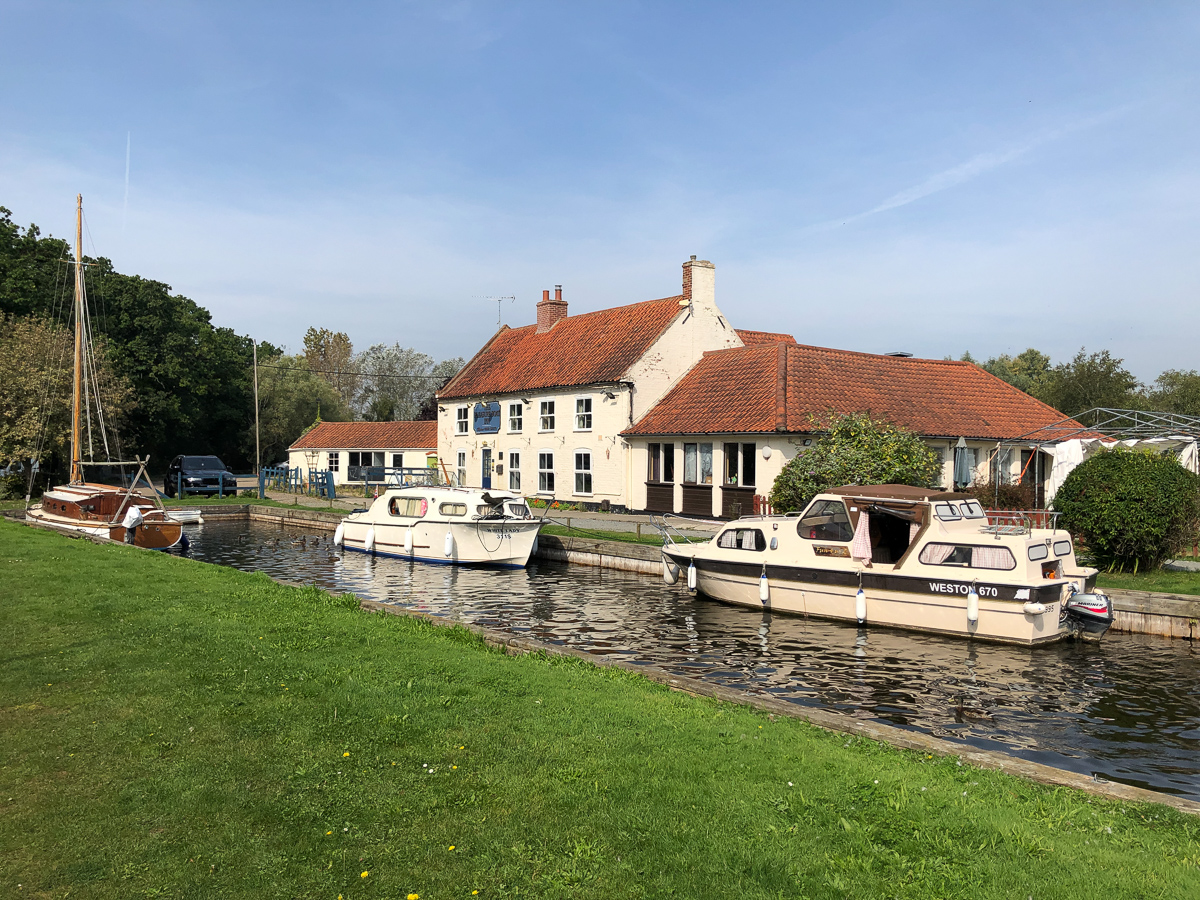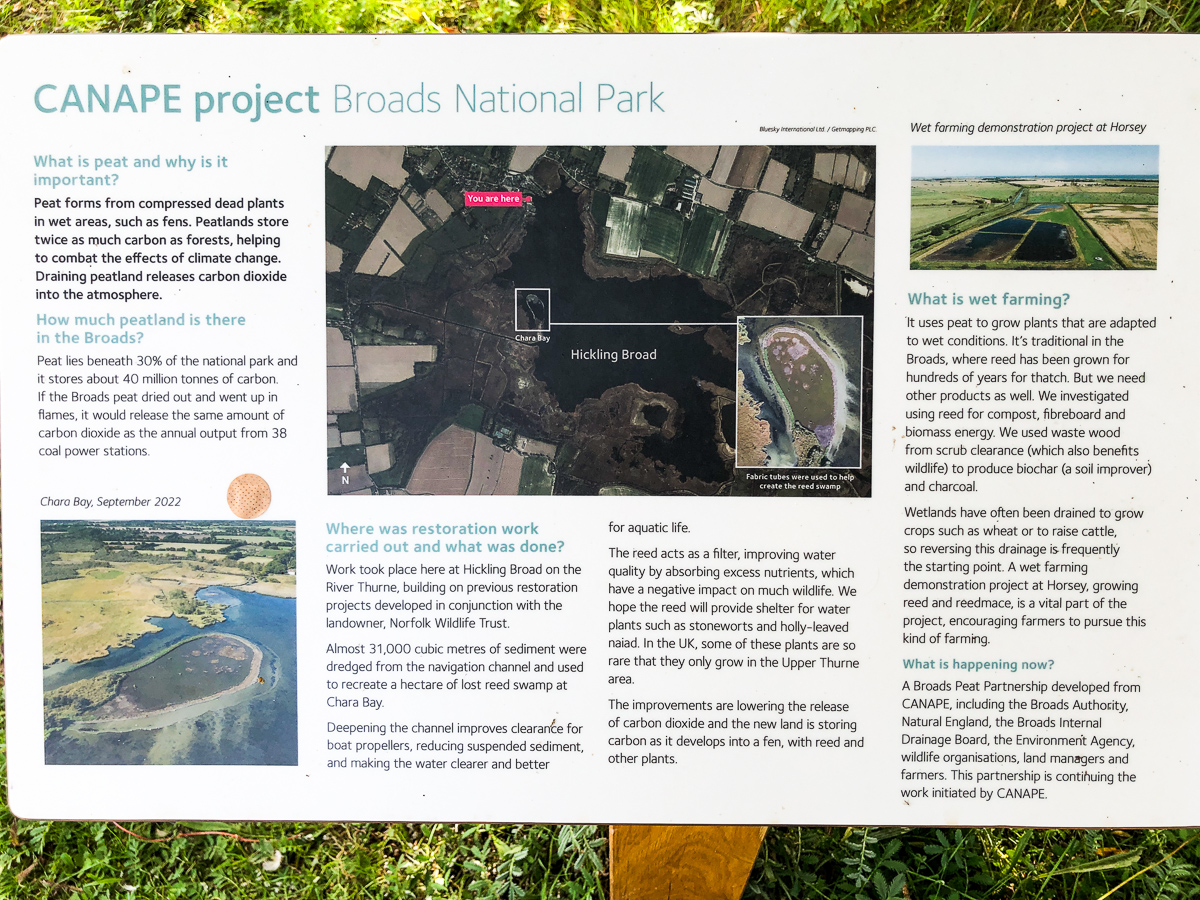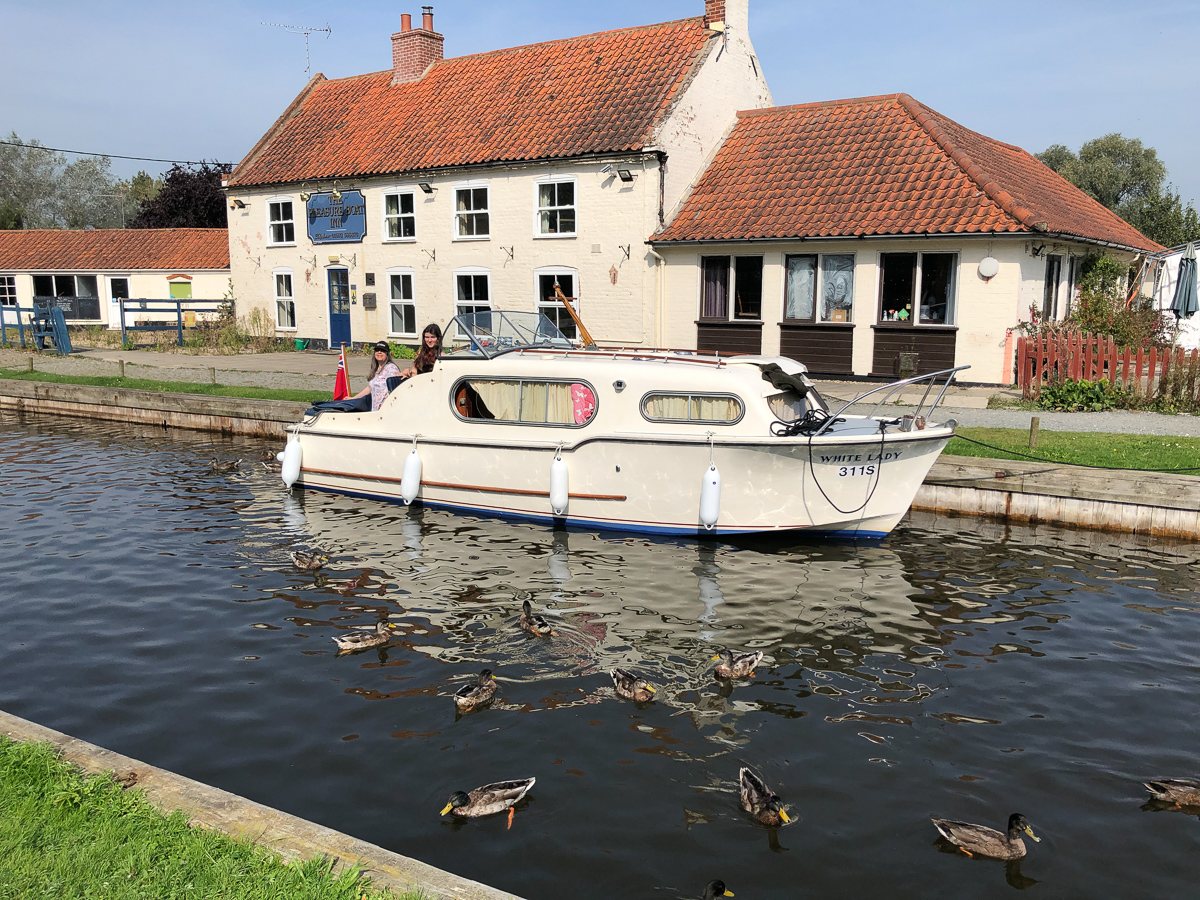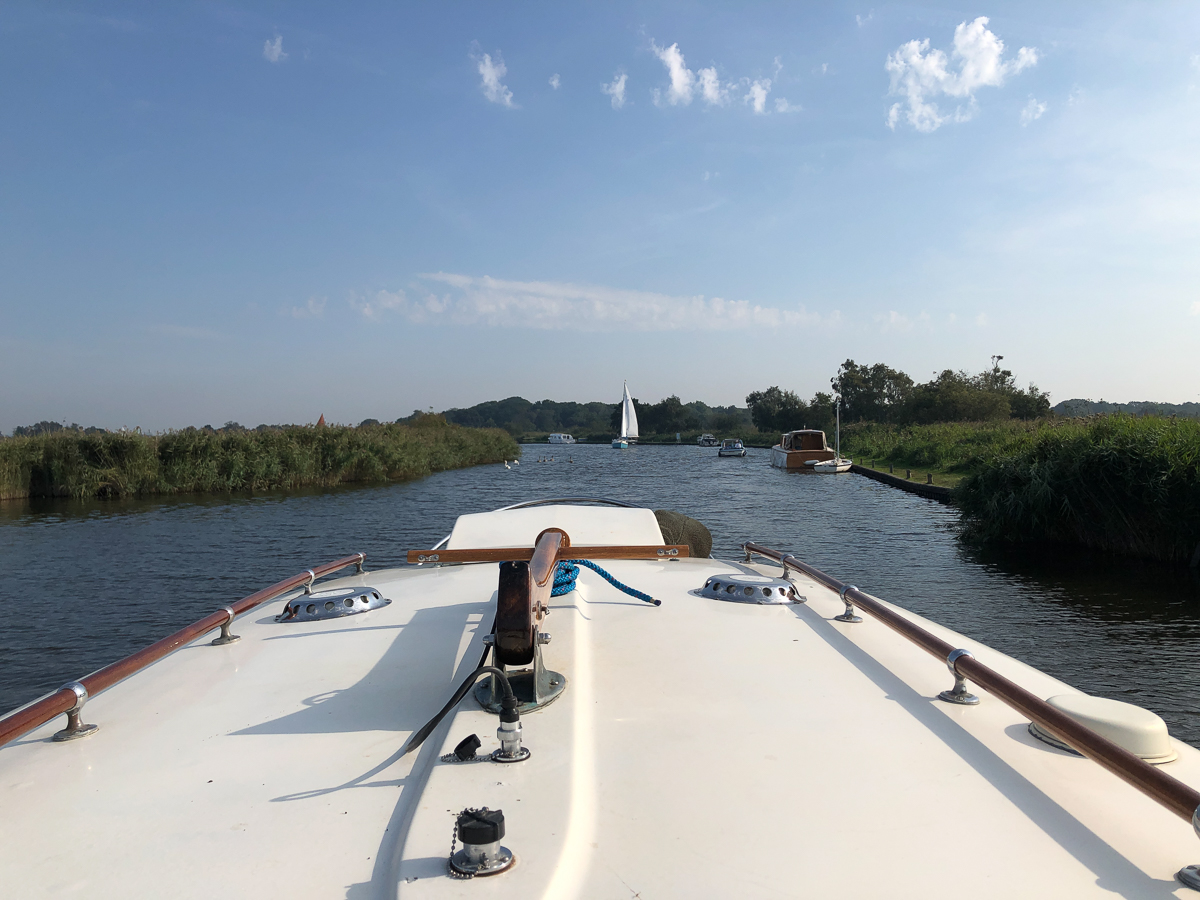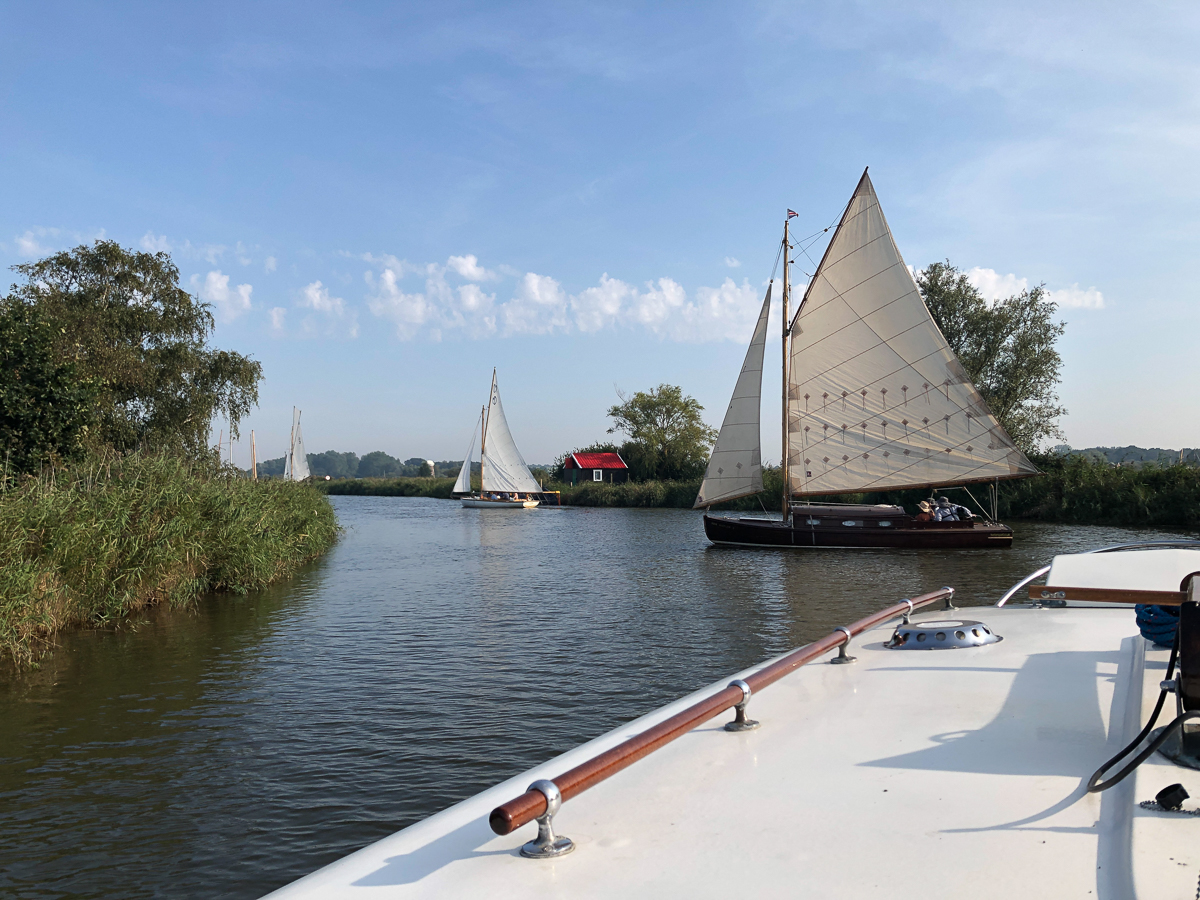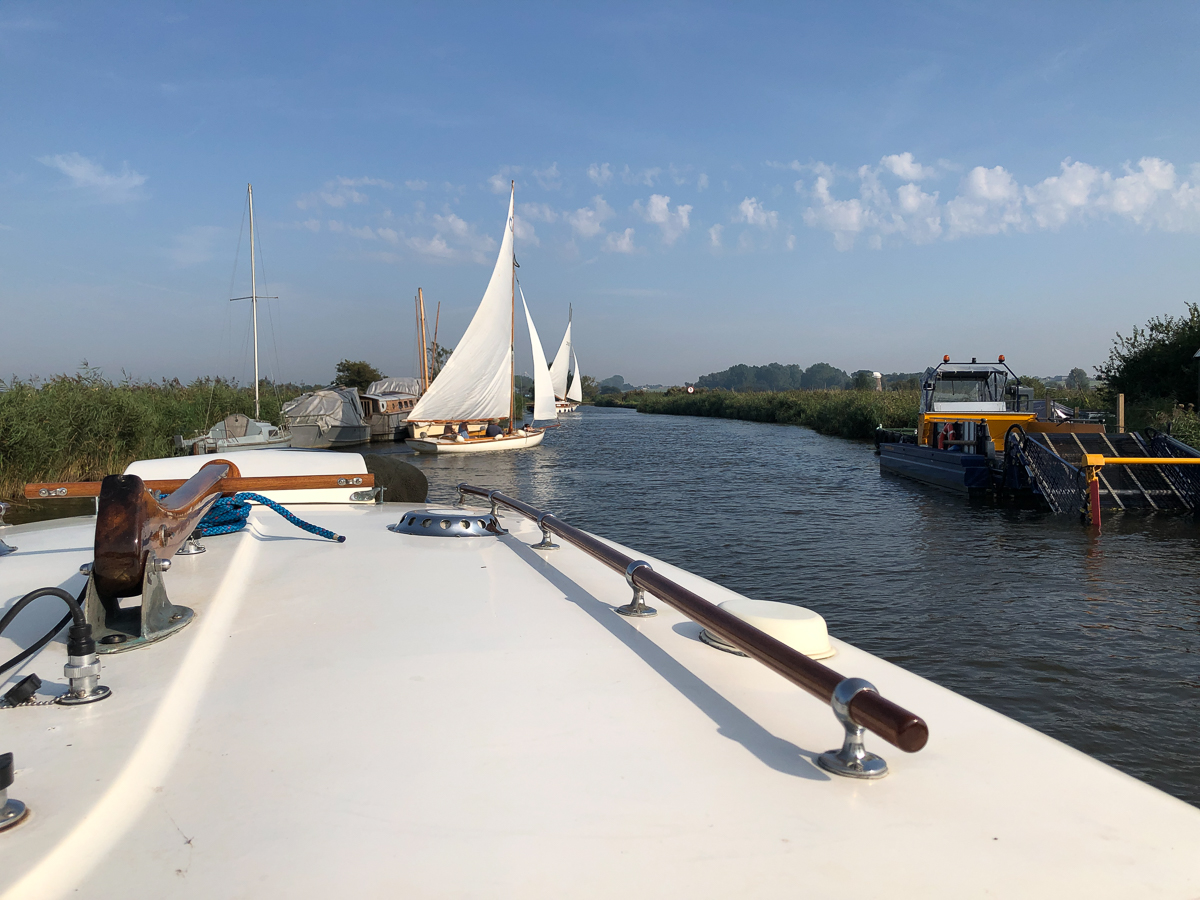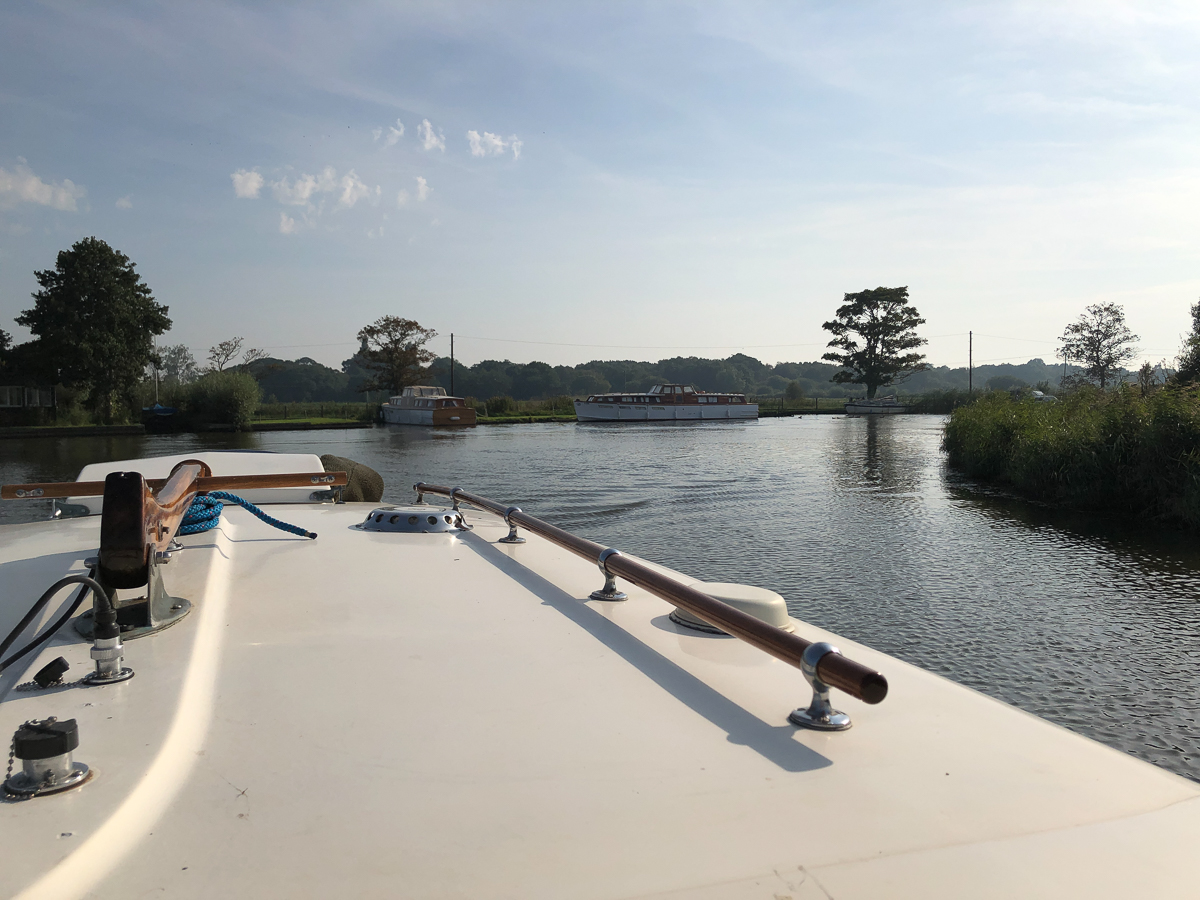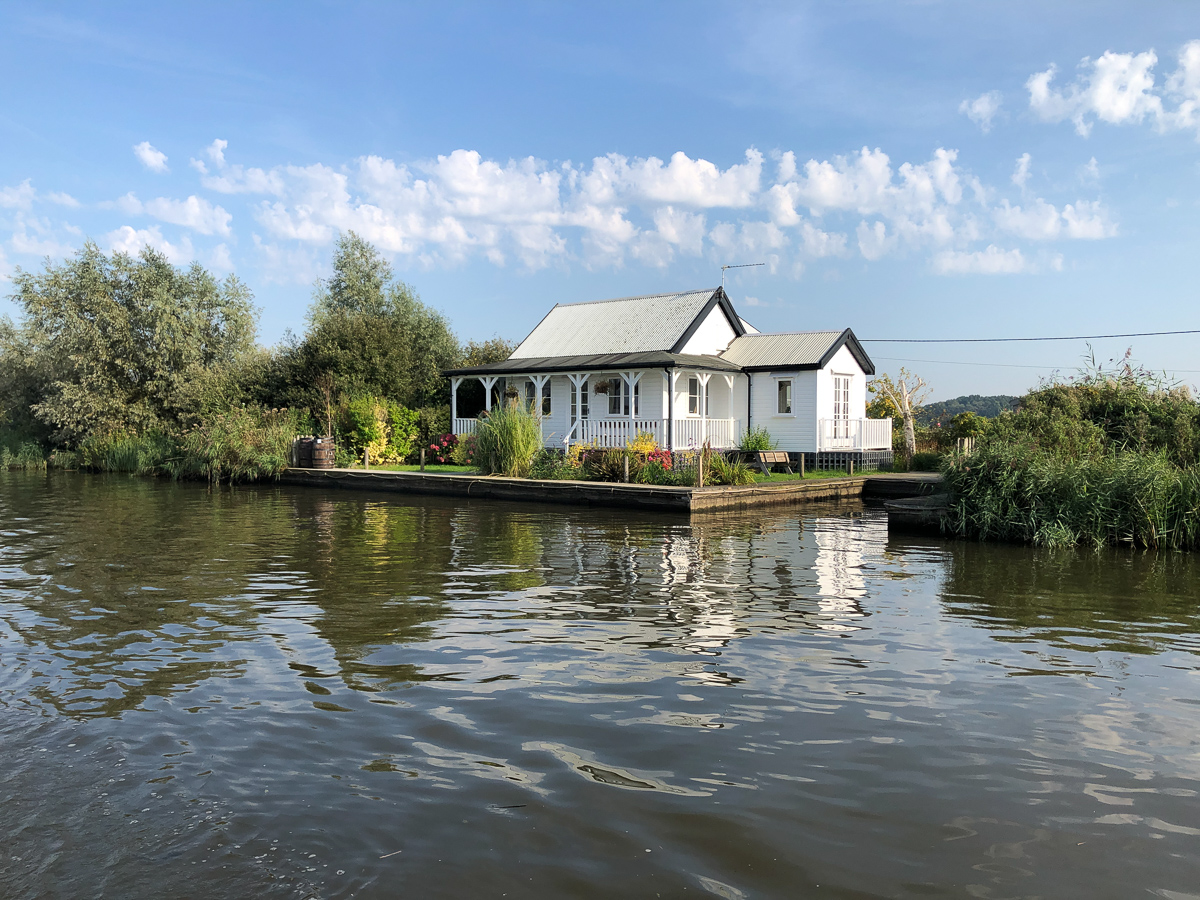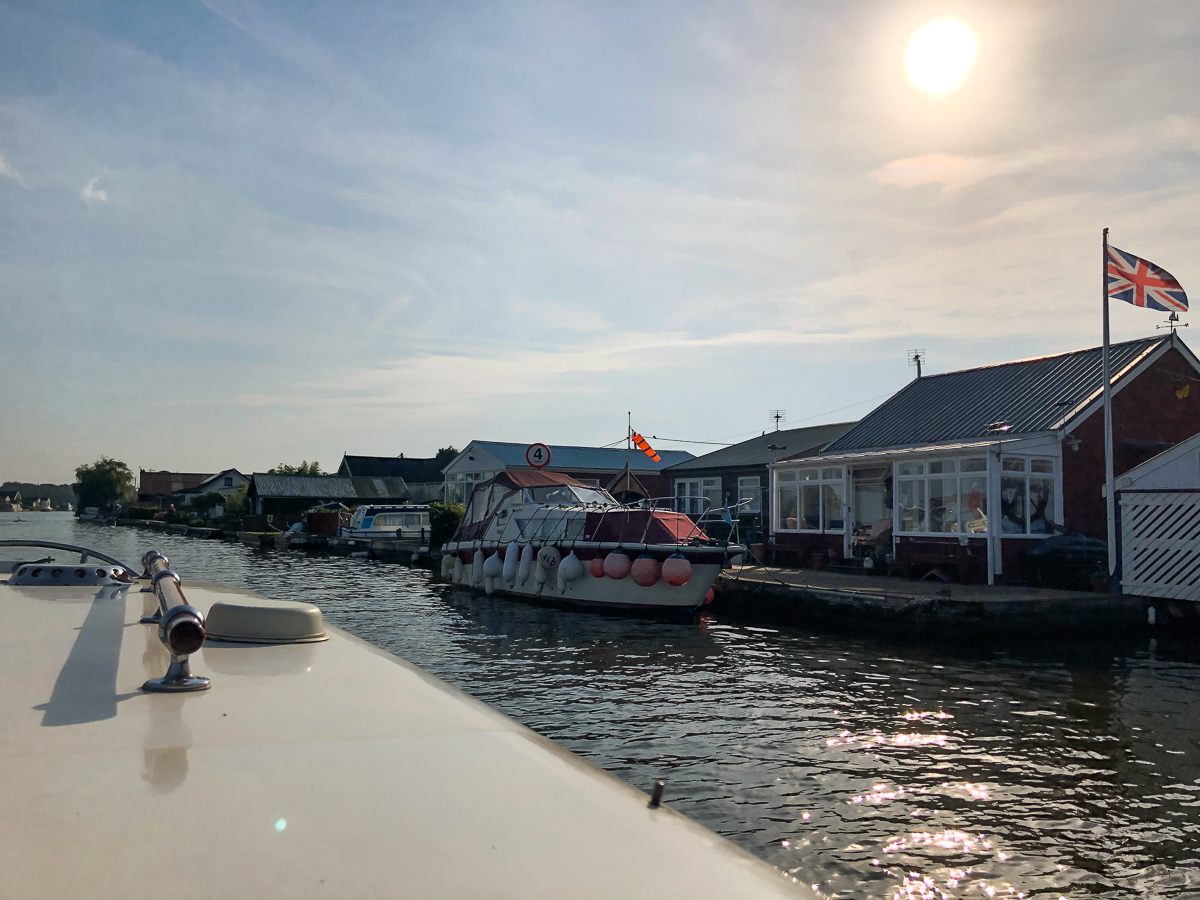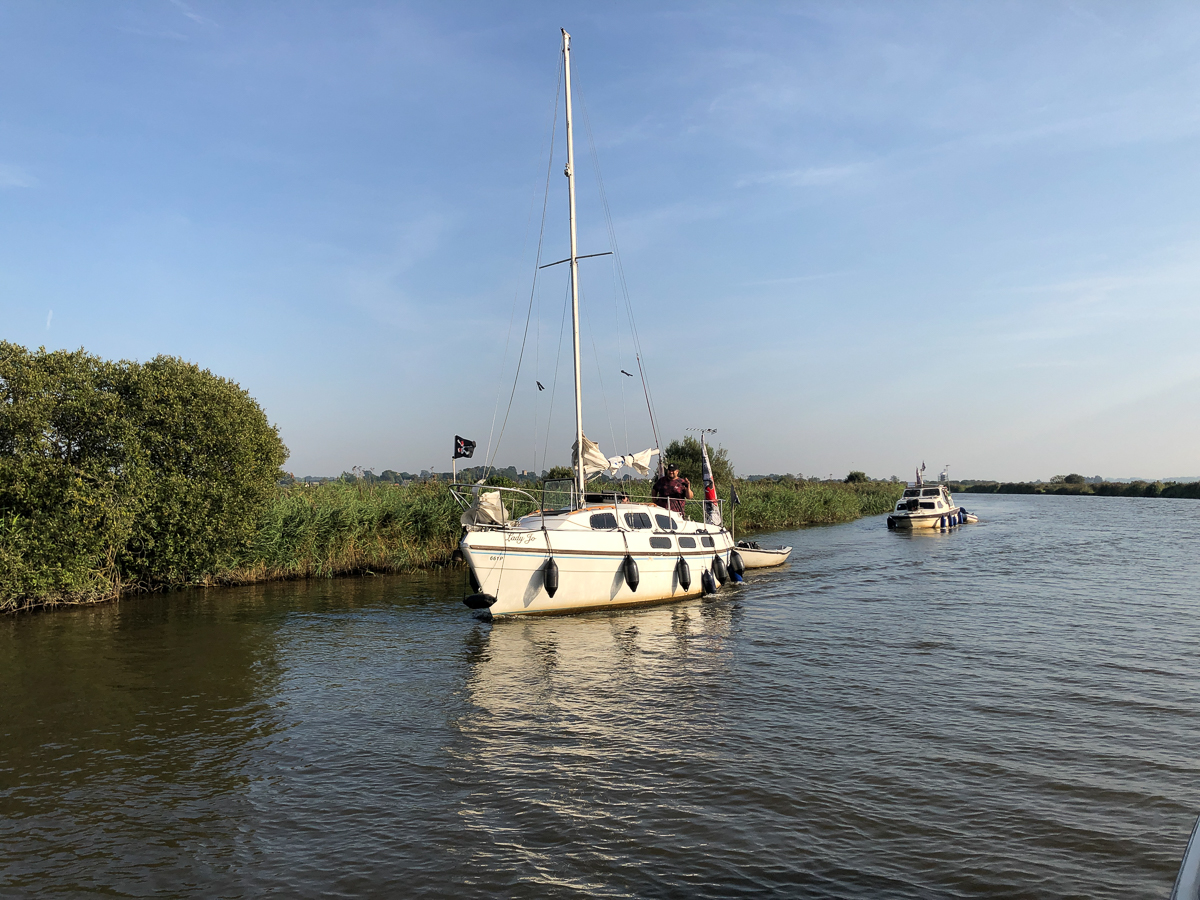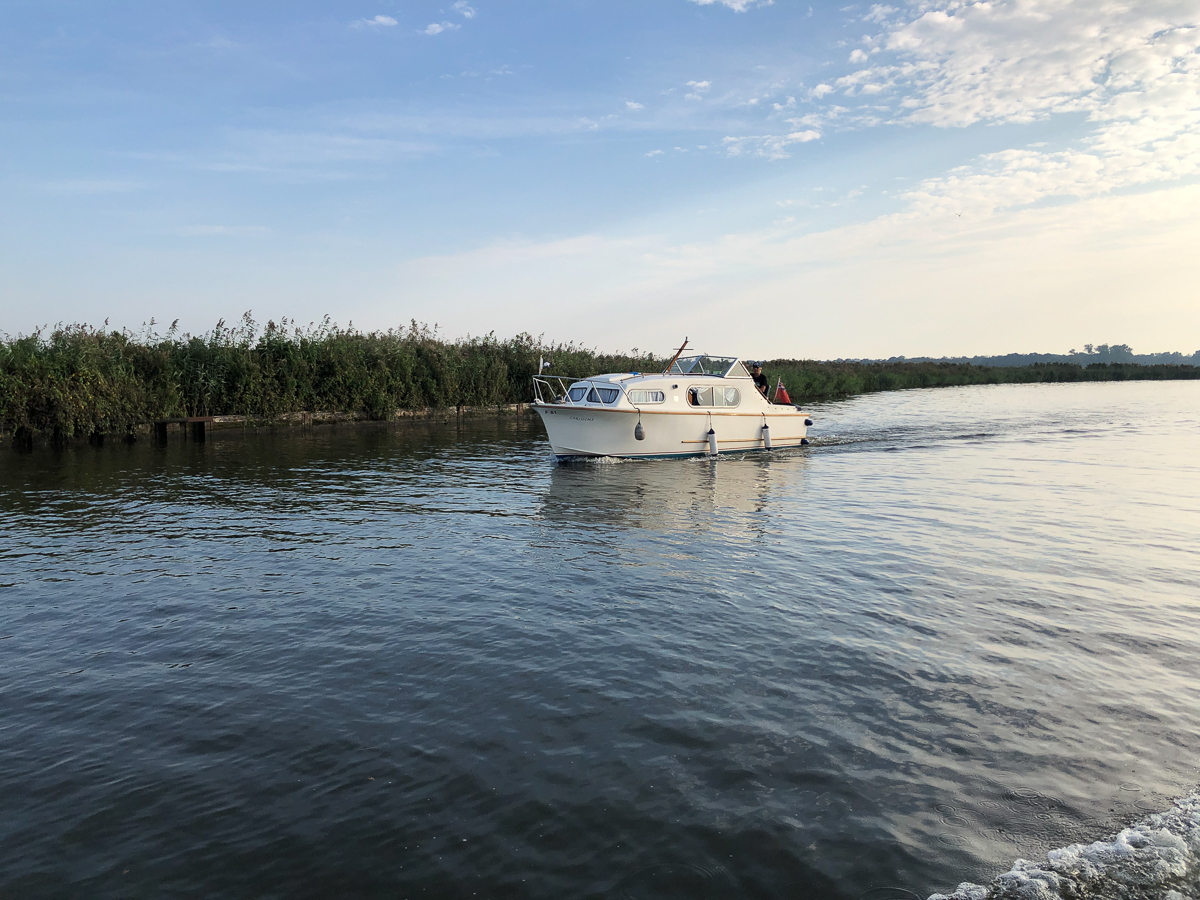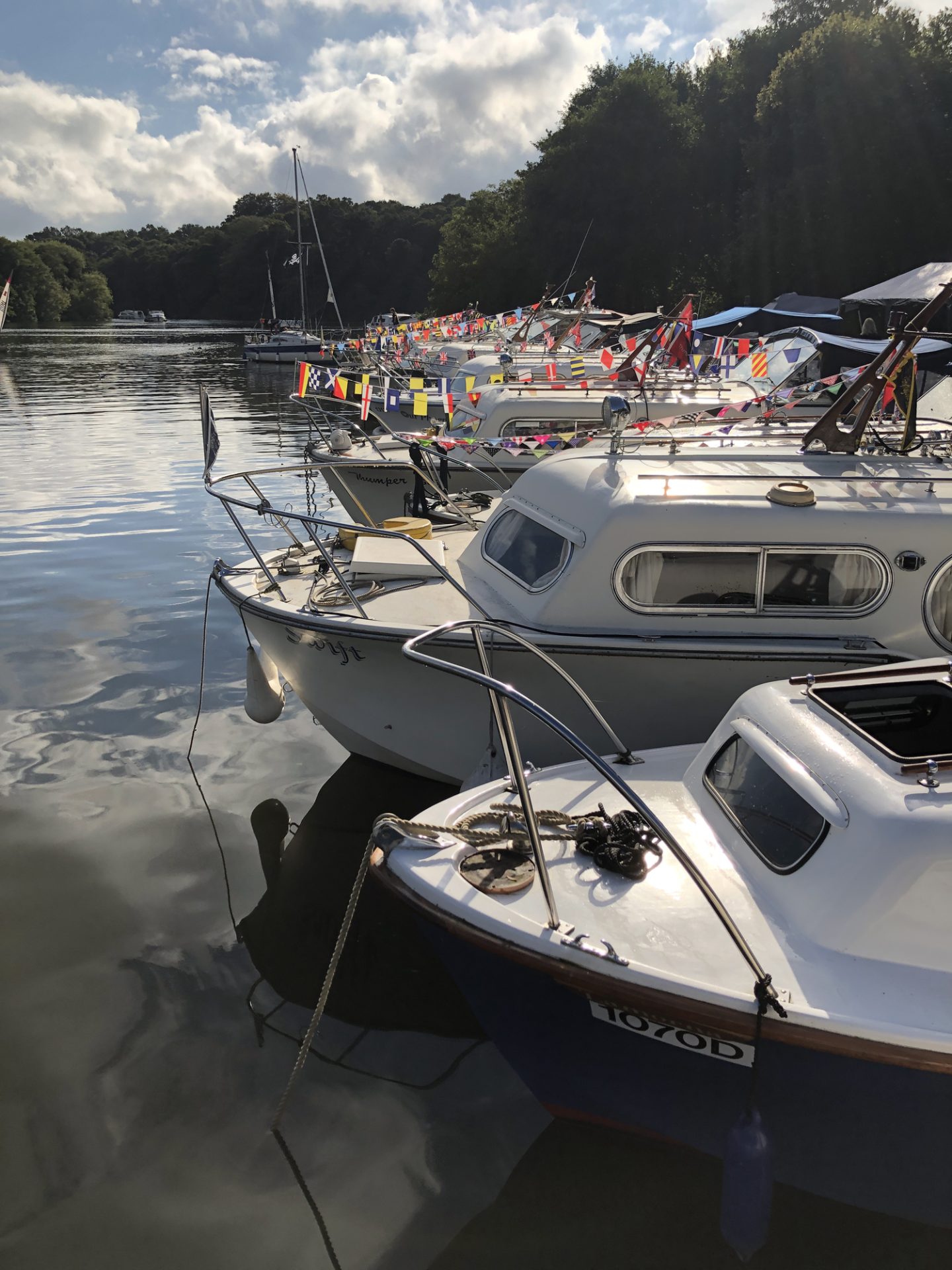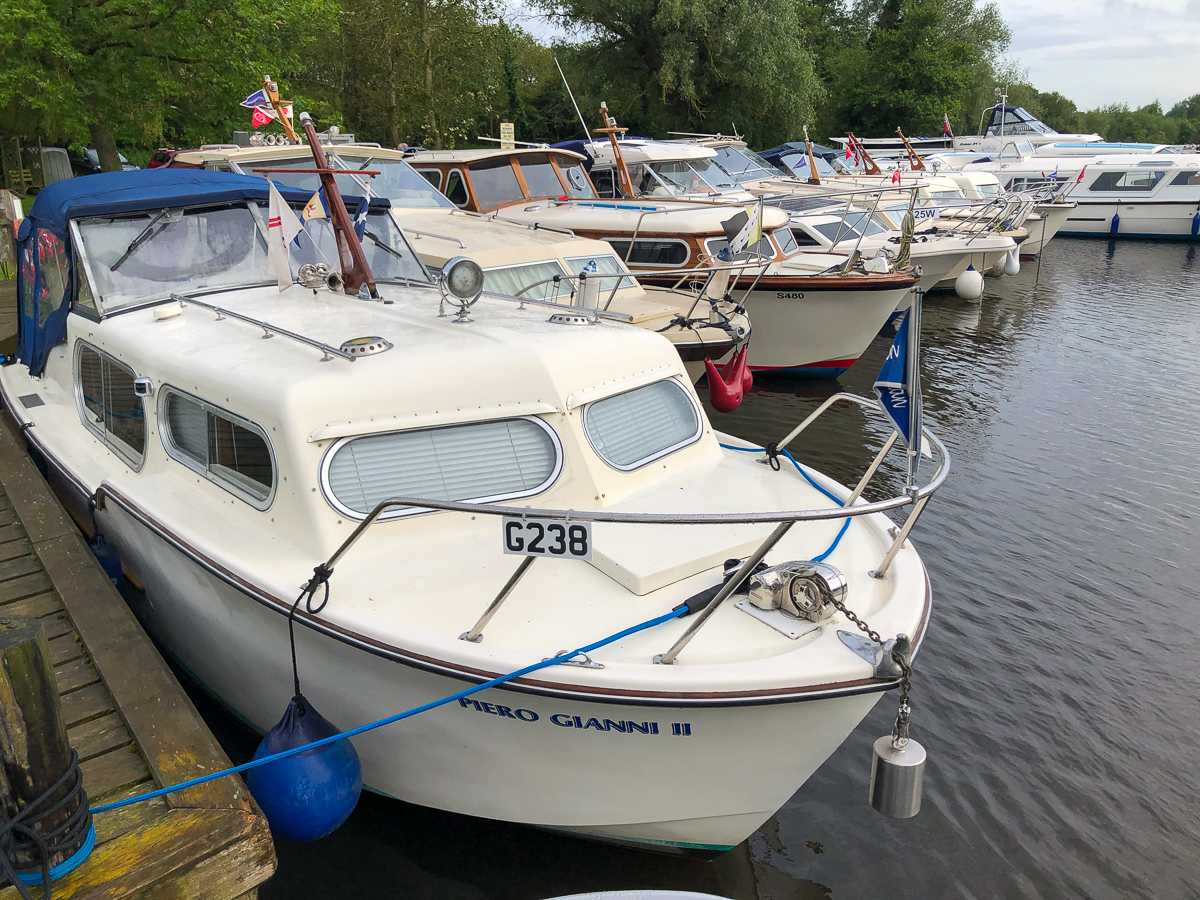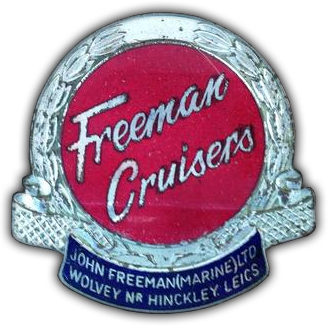by chris
Share
As autumn and the inevitable winter threatens to displace what was in reality a fairly drenched summer, we decided to undertake what must be the Holy Grail of Broads cruising, passing under Potter Heigham Bridge.
To start our trip we managed to get on board White Lady for the early afternoon on Friday. The weather was beautifully warm but there was a humidity in the air that suggested a thunderstorm might be on the way. Rather than stay overnight on our home mooring at Ranworth, we decided to make for either St Benets moorings or make our way down Fleet Dyke to mud weight on The Weirs next to South Walsham Broad which is private. Although we’ve never stopped at St Benets, being a bit of a honeypot and not wanting to risk impalement by the inexperienced, mud-weighting won the day. Our exhaust was somewhat steamy, probably owing to the low dew point of the evening but the spot we chose to moor, just near the northern bank near the trees was stunning. We had no need of going ashore, provisioned with a hearty compilation of meats, cheese and salad in the form of a ‘boatmans’ rather than a ploughman’s
It was a leisurely start the following morning with sunrise promising to be a scorcher. Our schedule was defined by a 15:30 low water at Potter however we did need a few emergency provisions in case we weren’t able to find somewhere to eat that evening. The visitor moorings at Potter Heigham were packed but we did manage to dive in to a small spot (one of the big benefits of a small boat) in order to walk over the bridge to Lathams, a discount food and everything store. We like to cook from scratch, but most of what they had were ready-meals and petrol station snacks. To put it in perspective, their bedding department was twice the size of the food section. Perhaps this was an arrangement to keep the local pubs and eateries busy rather than have people cook on board. Lathams did have what appears to be an extensive angling store which looked promising, but not on todays agenda.
Stopping off at the Bridge Pilot on the way back to the boat was well worth it. The pilot and his colleague were incredibly helpful, showing me their own personal tide gauge inside the office which was calibrated by generations of pilots taking into account the beam of vessels wishing to pass under the bridge. Even though I wasn’t planning on taking a pilot, they were more than happy to impart their wisdom. I did get into a banter with the pilot about not wanting to tear off my handrails and spending pretty much a couple of weeks turning and varnishing them but didn’t mention my conversation to the crew who were milling around outside.
Potter Heigham Bridge has a near legendary reputation for minimal headroom, with a semi-circular primary arch which makes interpreting the available height based on tide boards a real challenge for a first time skipper. A bridge pilot is on hand on the south-eastern bank
It was time ! We took off the windscreen an placed it on the back seat of the boat, folded down the mast, cast off lines and made for a steady approach to the bridge, aligning the keystone of the arch with the left pier of the new bridge. This was going very well, still punching some ebb tide which helped with control. From our starboard side, the pilot shouted jovially, ‘MIND YOUR HANDRAILS !’ – Of course my crew thought that was a serious and imminent warning not having been privy to my previous chat in the pilot office. This did cause me to lose a bit of concentration as my co-pilot started re-iterating the faux warning which put a kink in my perfect trajectory.
A little blast of throttle saw us out the other side with perhaps 8 inches of clearance on our handrails with 6ft on the tide gauge. This was cause for a minor vocal celebration and something I’d wanted to do since having a boat on the Broads.
The new bridge wasn’t of any consequence as the waterfront lodges and shacks lining the river edge continued, but with fewer and smaller boats tied alongside. Beyond the summer cottages, reedy banks returned but with a multitude of anglers dangling their lines on out starboard side for a good quarter of a mile. At the end of this stretch, Martham Boats private moorings appeared and just beyond their slipway, the river continues to West Somerton or to port up to Hickling Broad. We turned to port and headed up a short winding reach with a stretch of moorings occupied by what appeared to be a small community of eastern European folk with a fire blazing and a many fishing lines on the go. They may have been fishing for a bonfire cook-out. I’m not sure if this is frowned upon, but they seemed to be making the most of their environment.
This stretch was also quite congested with sailing boats, clearly this part of the Broads being their chosen playground. Fortunately having sailed a lifetime myself I had a good idea of what they were going to do next.
Hickling Broad was on the cards for Sunday, but for Saturday we chose to make our way to Horsey Windpump and moorings by way of a wonderfully twisty and beautiful waterway called the Meadow Dyke. It’s quite narrow and reminiscent of the River Chet towards Loddon. This dyke opens into the Horsey Mere and is an exceptional waterway for sailing boats. Horsey Mere doesn’t have excessive piles marking channels for dummies and as such has a fantastic wildness to it, that is until you encounter a multitude of confusing yellow markers in the middle of proceedings. It turns out, these mark the remains of an island and there appears to be good water either side of it.
The entrance to the Horsey Moorings are pretty straightforward and picturesque if crystal-varnished sailing boats appeal. It seems more vessels congregate near the entrance of the dyke and the wildlife tours mooring rather than the windpump end. We moored on the visitor centre bank as the signs instructed and were able to turn White Lady in the ‘kink’. You wouldn’t want to do it in anything bigger than 22ft though.
It’s very clear that you have to pay for moorings (as seems to be increasingly the case on the Broads) but at £3 for 2 hours, £5 for a day and £8 overnight, it’s not excessive given that there are no other mooring options beyond mudweighting nearby. It’s also run by the National Trust, so things are pretty well kept. The toilet and shower block was reasonably clean and shower tokens were available from the visitor centre for £3 per token. I found that a bit steep but it was nice to have the facility. It was also handy to have proper rubbish disposal available.
Once at Horsey, we had hoped to grab tea and cake at the 40’s themed café called Poppylands, but we simply didn’t have time as the highlight was to be visiting the Horsey Grey Seal Colony. It was perhaps 40 minutes walk, partially along the edges of fields and mostly along a rubble and shingle footpath bordered by Hawthorn bushes, reeds and brambles but not in a way that would snag you.
In the distance, the sea defence dunes are obvious and you can clearly see the break in the wall leading to the beach. Walking along the footpath and scanning across the flat fields, it became frighteningly apparent how devastating a breach of the sea wall would be.
We walked through the bunker-like break in the sea wall onto the shingle and sand beach, segmented by rock armour groynes to prevent erosion. In front of us was a single lone seal. Don’t get me wrong, it was lovely to see but it did feel like getting to a nightclub at closing time. Then looking a little further up the beach, we found the colony. Perhaps 150 seals, all basking in the sun ‘singing’ to each other. It’s a wonderful sound, something between whalesong and a gentle dog howl. It’s no surprise that superstitious coastal fishermen thought them to be mermaids. It surprised me how large and powerful the dark bull seals were. Definitely not animals to mess with. We were careful to be calm and quiet around them, keeping a good distance away but couldn’t help thinking that many people would show less care and respect. Perhaps that’s just what we have become as humans.
Hunger was taking hold, so we retreated from the seals and made tracks for The Nelson Head pub. We can’t often afford a meal out, but as it’s getting toward the end of the summer and we’d been very good cooking on board most of the time on our travels this year. We grabbed an available table outside and ordered food. The prices were reasonable apart from the fish and chips. Call me old school, but £17 is a bit much (along with the £35 for sausage and mash I experienced at the Hotel Wroxham when being taken out for a meal). The food was good, unremarkable and served with a smile. The landlady has a dry wit which I enjoyed but some might find abrasive. It was a good experience and I’d happily visit again.
Rather than walk back across the fields in the dark without a torch to get back to the mooring, we followed the road – possibly not the cleverest idea as there was some traffic and quite a few blind corners. Better to take a torch and take the footpath next time.
We didn’t explore the windpump as the entry price was rather high for 2 adults and a child and we also needed to move off before 10:30 to not incur an additional mooring charge. I think the Sunday was shaping up to be the hottest day of the year but with plenty of sun cream, it was bearable with a bit of a sea breeze building through the morning. We doubled back along Meadow Dyke and then turned north for Hickling Broad. It’s a yachtsman’s favourite and for good reason with plenty of open water. That being said, Hickling does suffer with excessive weed growth and the local weed-cutter is certainly kept busy. The pilot in Potter informed me that the weed had started to fall although the weed cutter had made some passes on the edges of the piled channel resulting in lots of free-floating weed in the water column. We managed to get some of this around out prop in the middle of a Laser race but cleared it quickly enough with a blast of reverse. The tell tale was a halving of our speed with the same revs on the engine.
We had no idea where you are permitted to moor at Hickling proper, but followed the marks to pull up at the narrow dyke next to the Pleasureboat Inn. In days gone by it seems day visitors would pull up on the pub side of the dyke, and overnight visitors on the far side with overnight moorings being chargeable. Sadly however the Pleasureboat Inn has closed down and is in a fairly dilapidated state and clearly no one is collecting mooring fees. This could be an amazing place with incredible potential if it had been managed well. I would go as far to say as this spot could easily be the main attraction for the Upper Thurne and Hickling Broads. It may in fact have been just that in the past. Without a social destination on Hickling Broad, I can’t help feeling it’s the reason many boaters don’t bother going beyond Potter. Maybe one day, someone with vision and experience of seasonal trade might make a go of it again, fingers crossed.
It was home time, with a low water beckoning for the return passage under Potter Heigham Bridge. There were still plenty of sailing vessels underway making for some moderately challenging boat handling, desperately trying to avoid being branded an ‘effin’ idiot’ by the sailing fraternity. With 6ft on the gauge, much of the trepidation of going under the bridge was gone heading back with the sound of Wham’s ‘Everything She Wants’ echoing from the Norada Tavern.
We normally cruise as slowly as possible to soak in the surroundings, however the engine was showing signs of being unhappy idling for hours so we pushed for home at the speed limit around 2000rpm just to clear out the dust.
Almost certainly the best weekend excursion we’ve had with White Lady. Perhaps next time an overnighter up Catfield Dyke.


